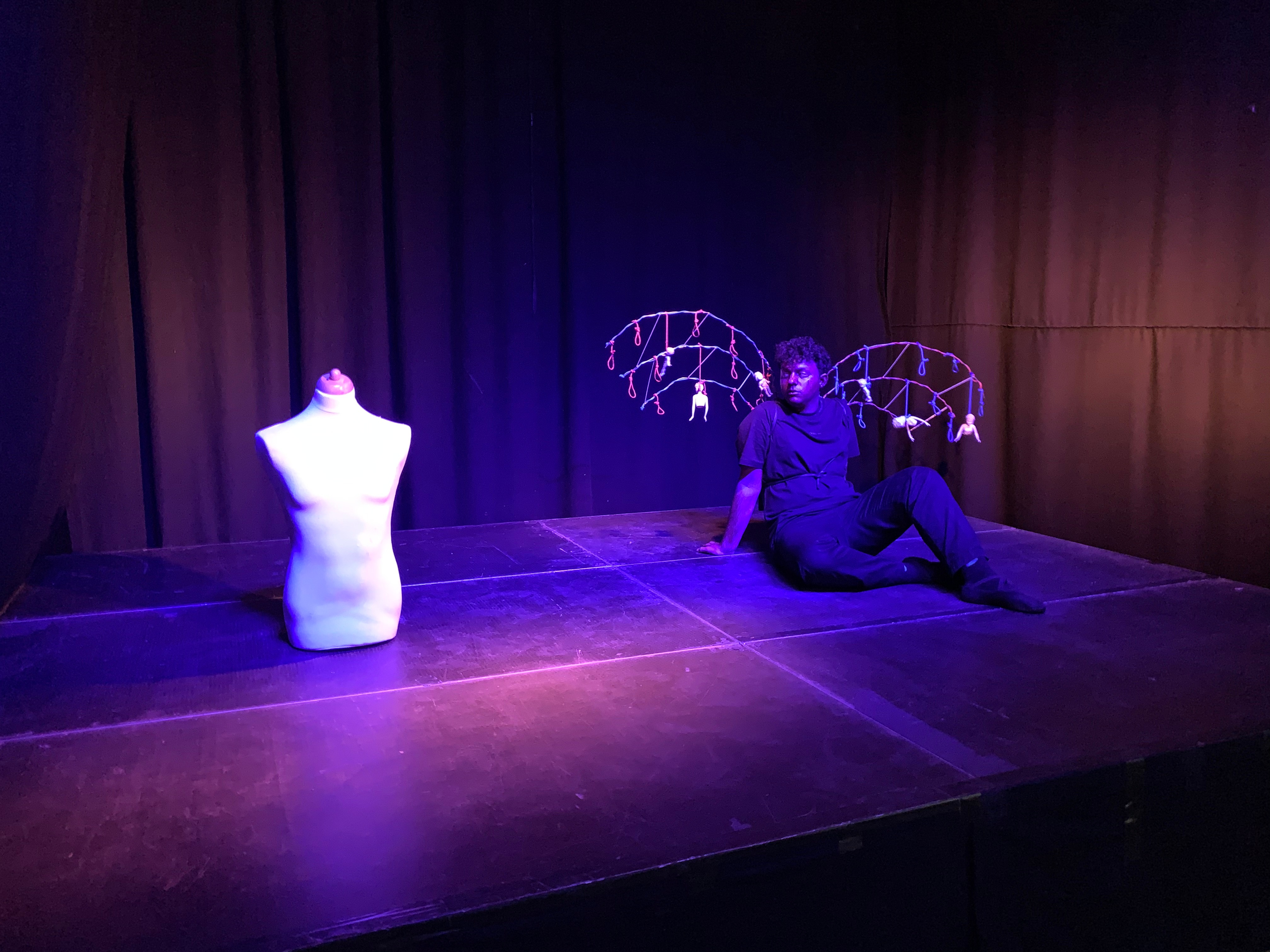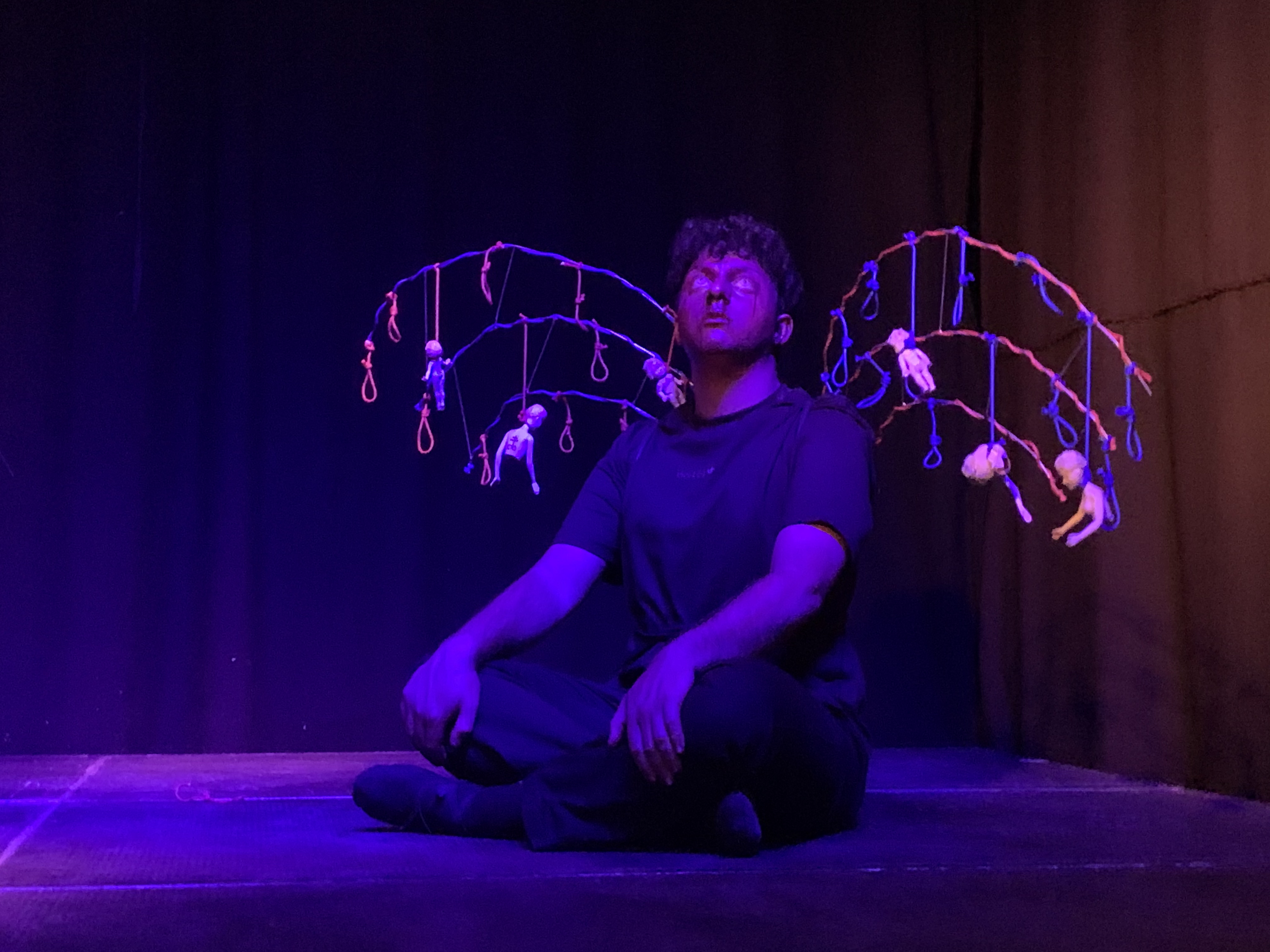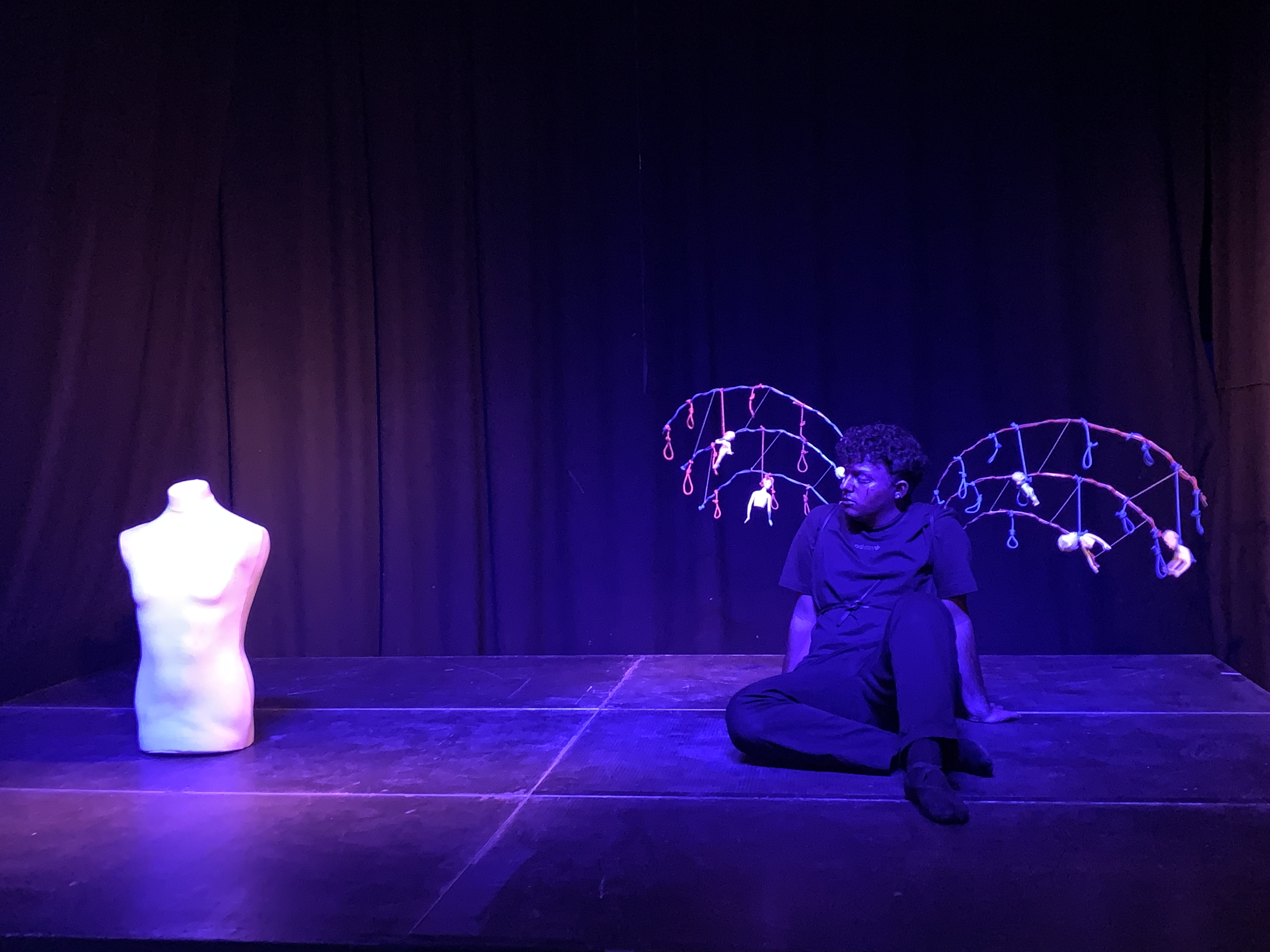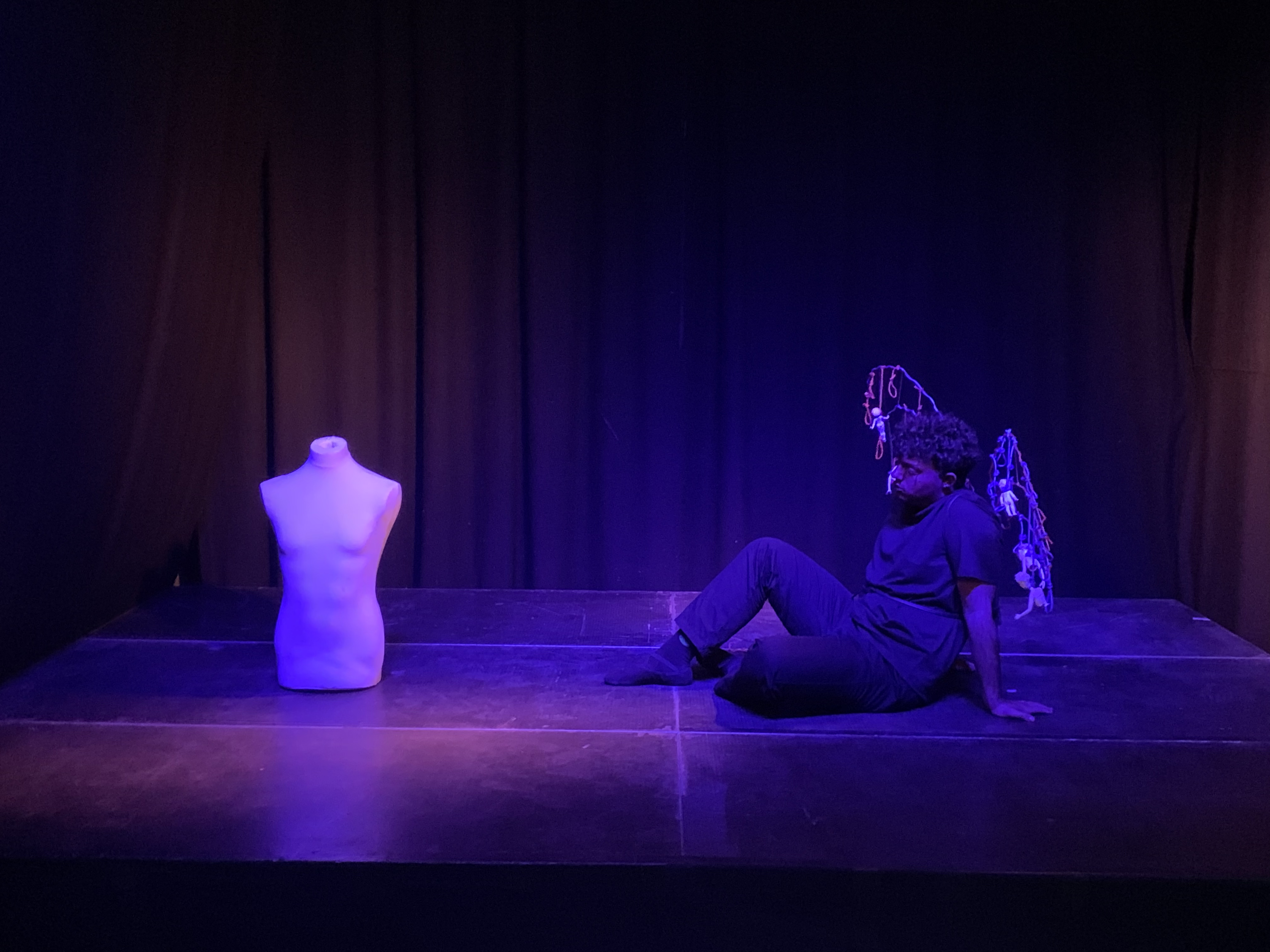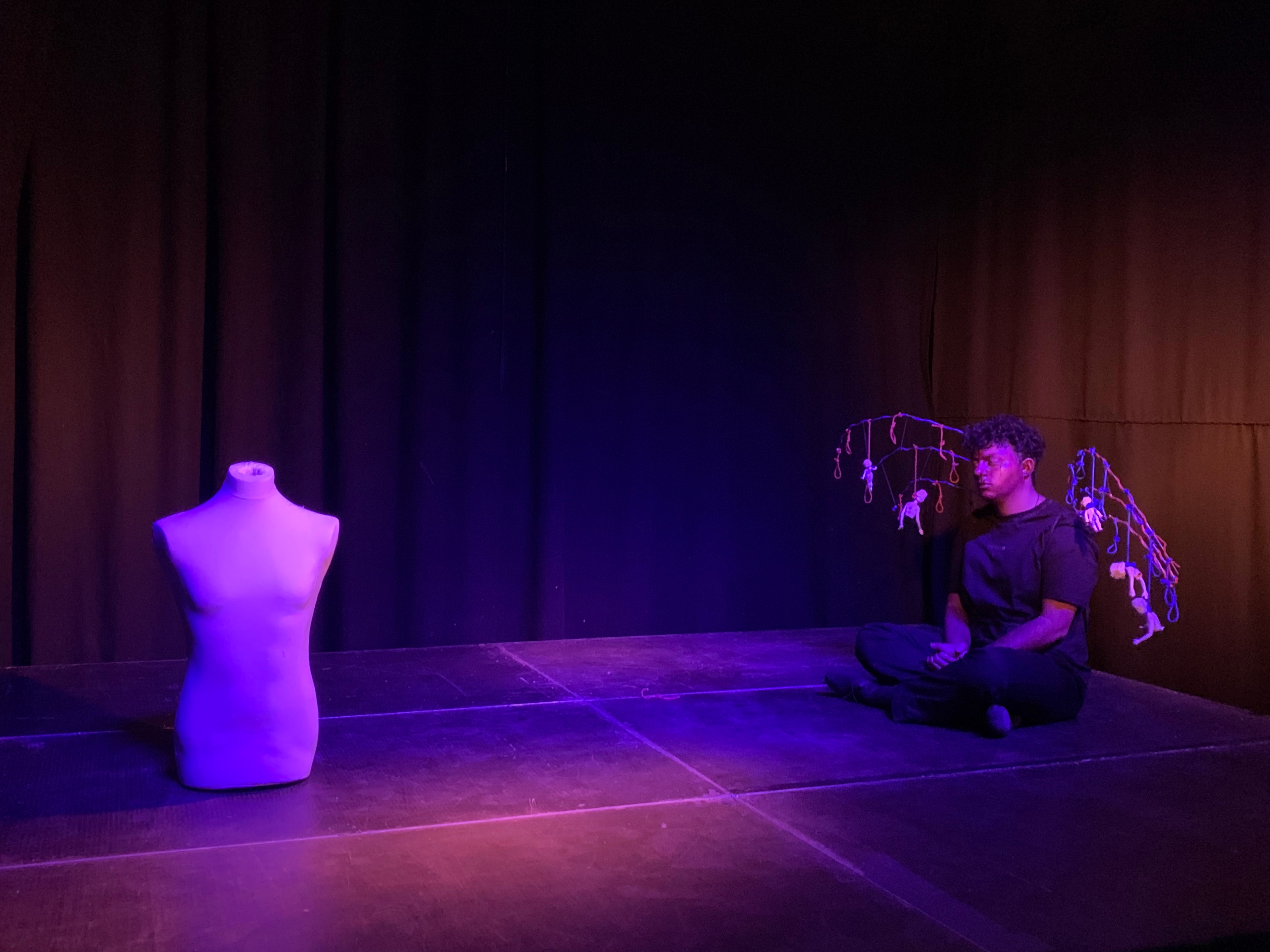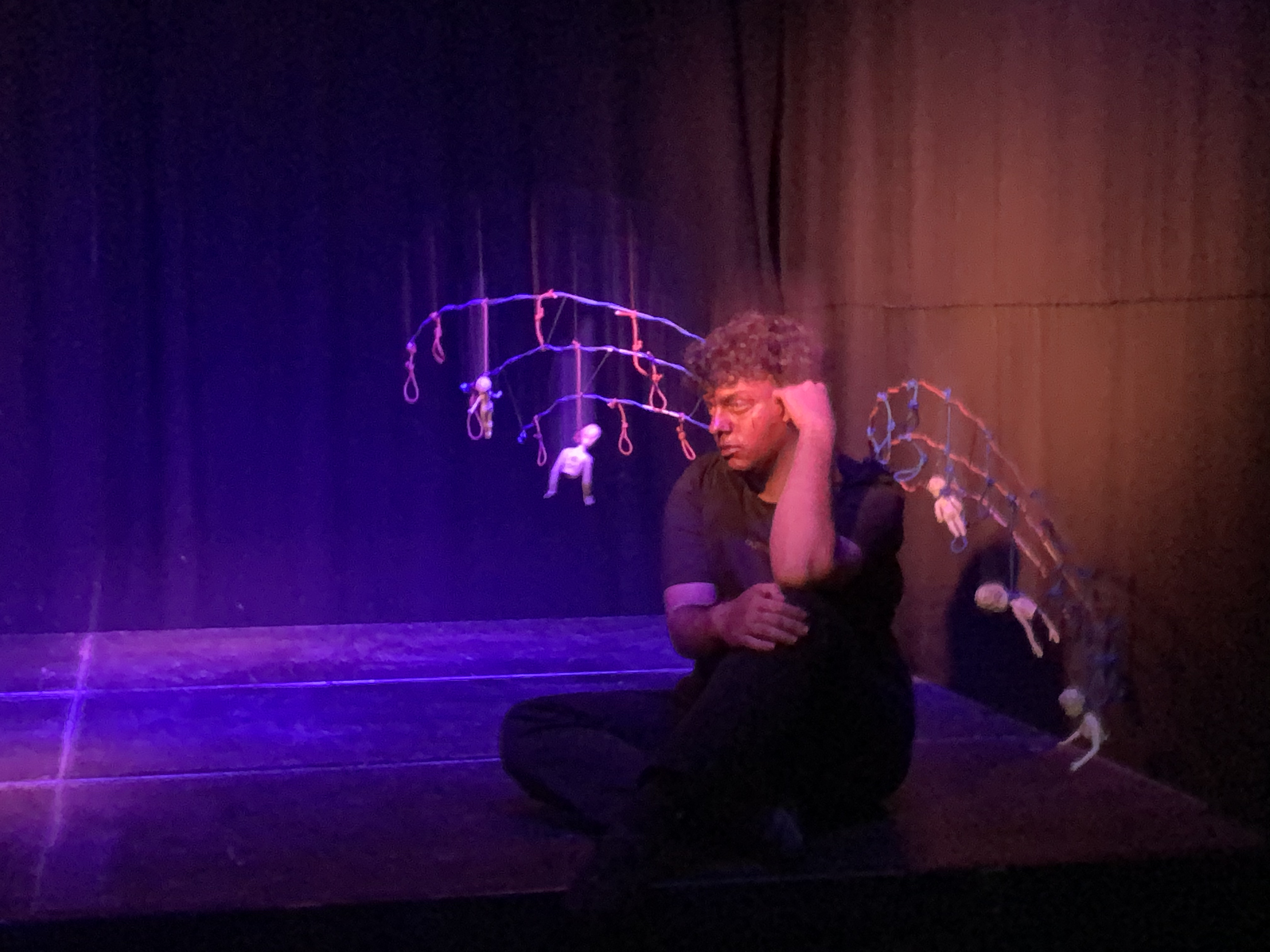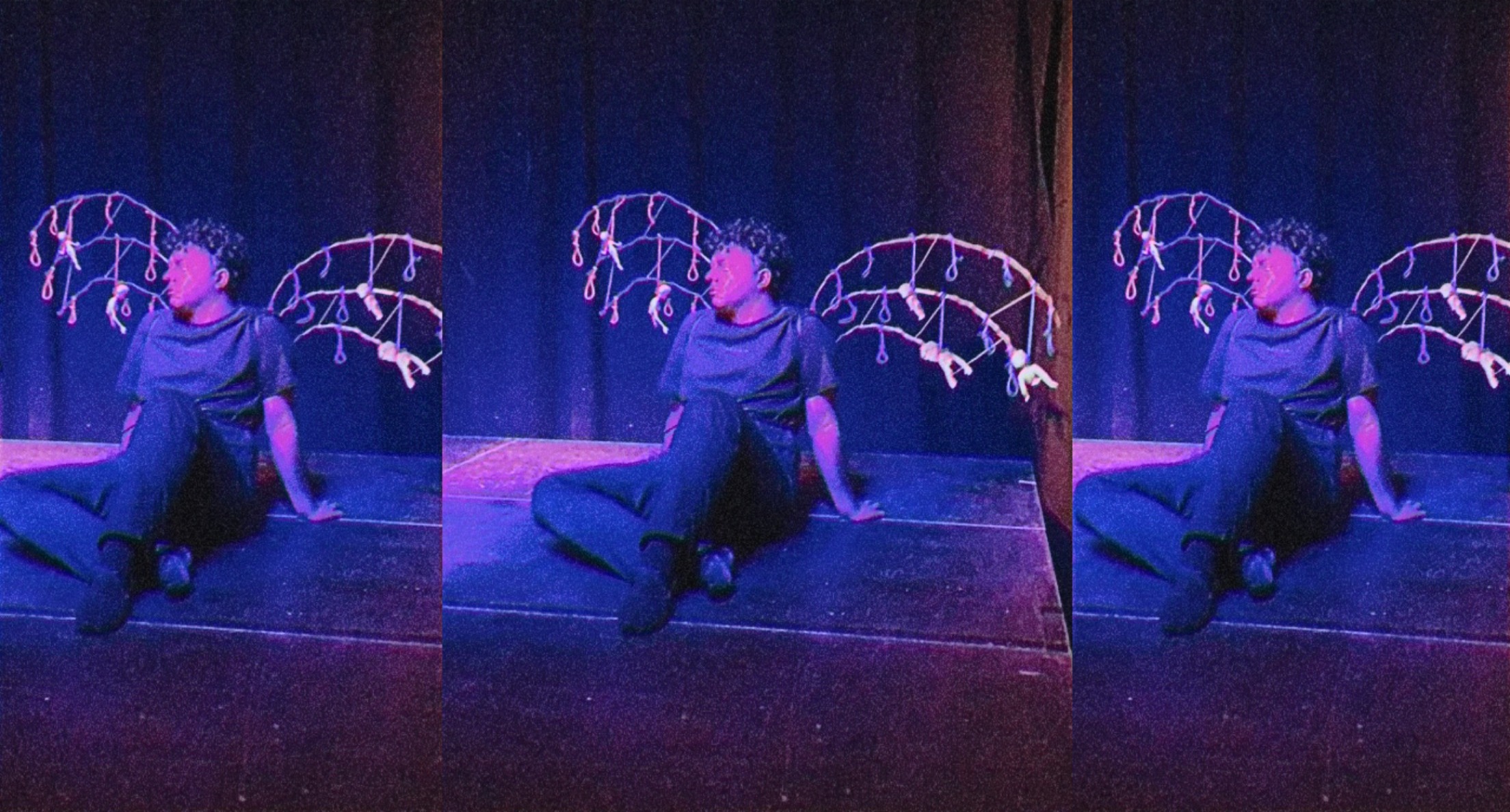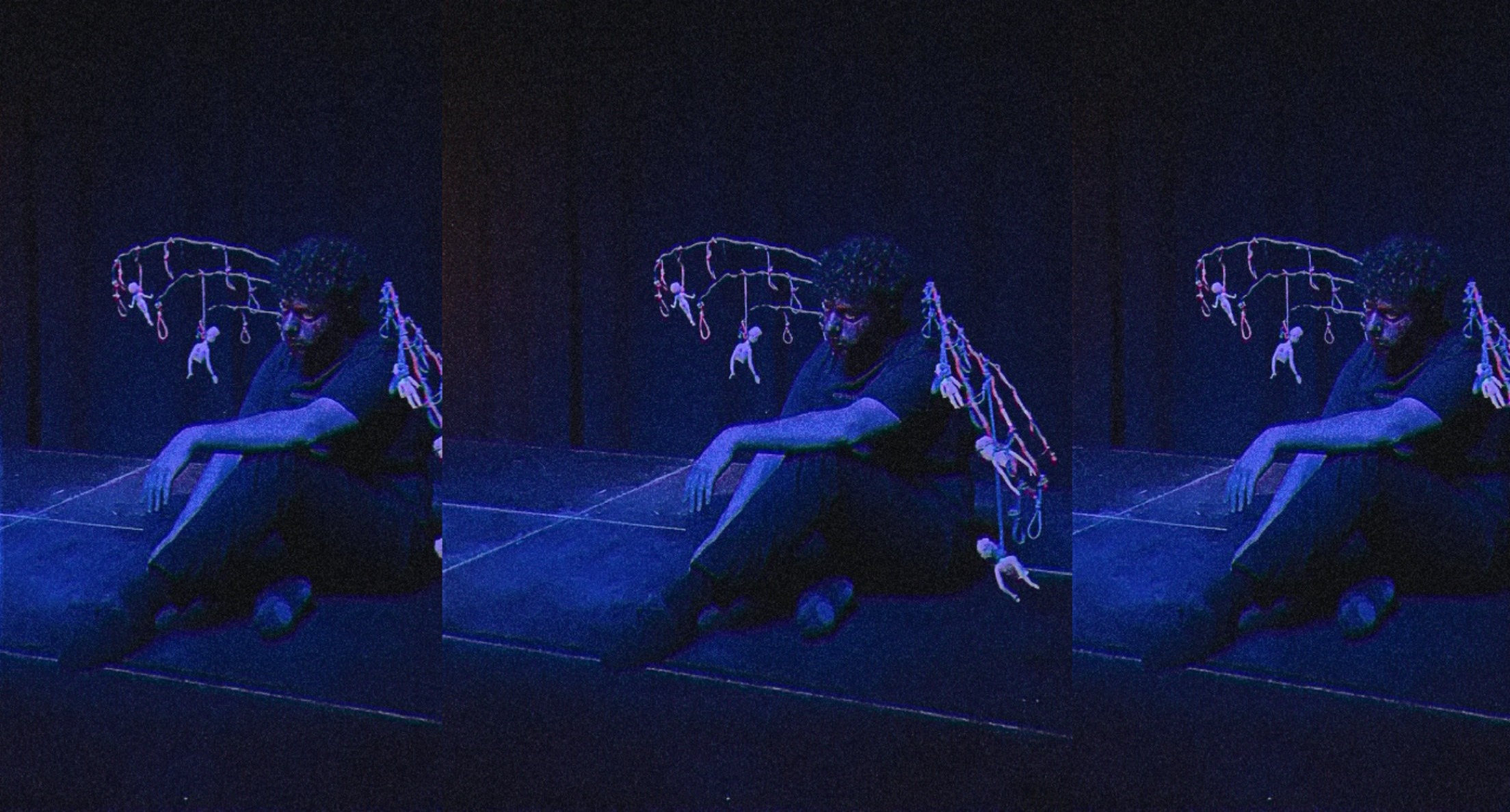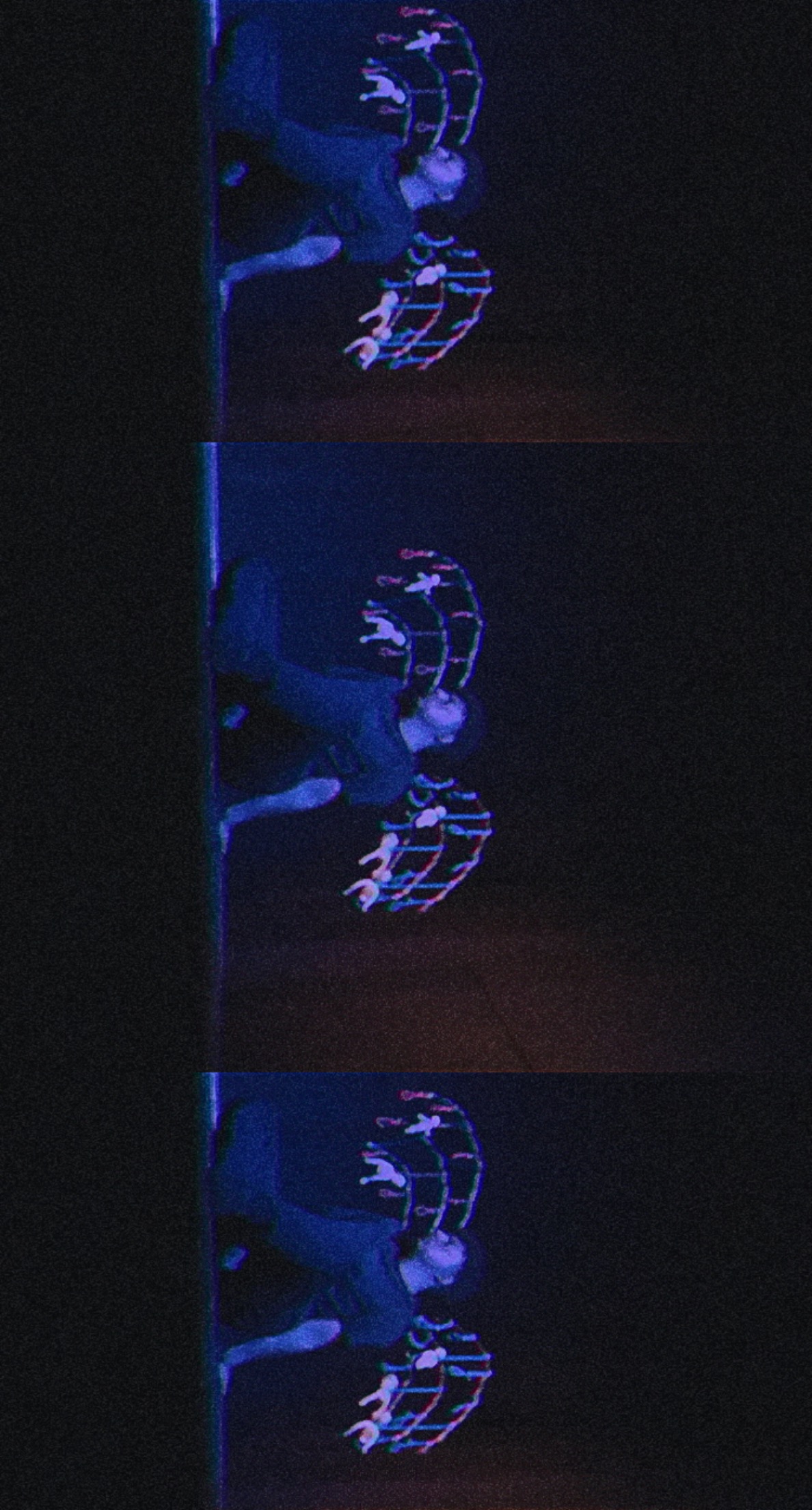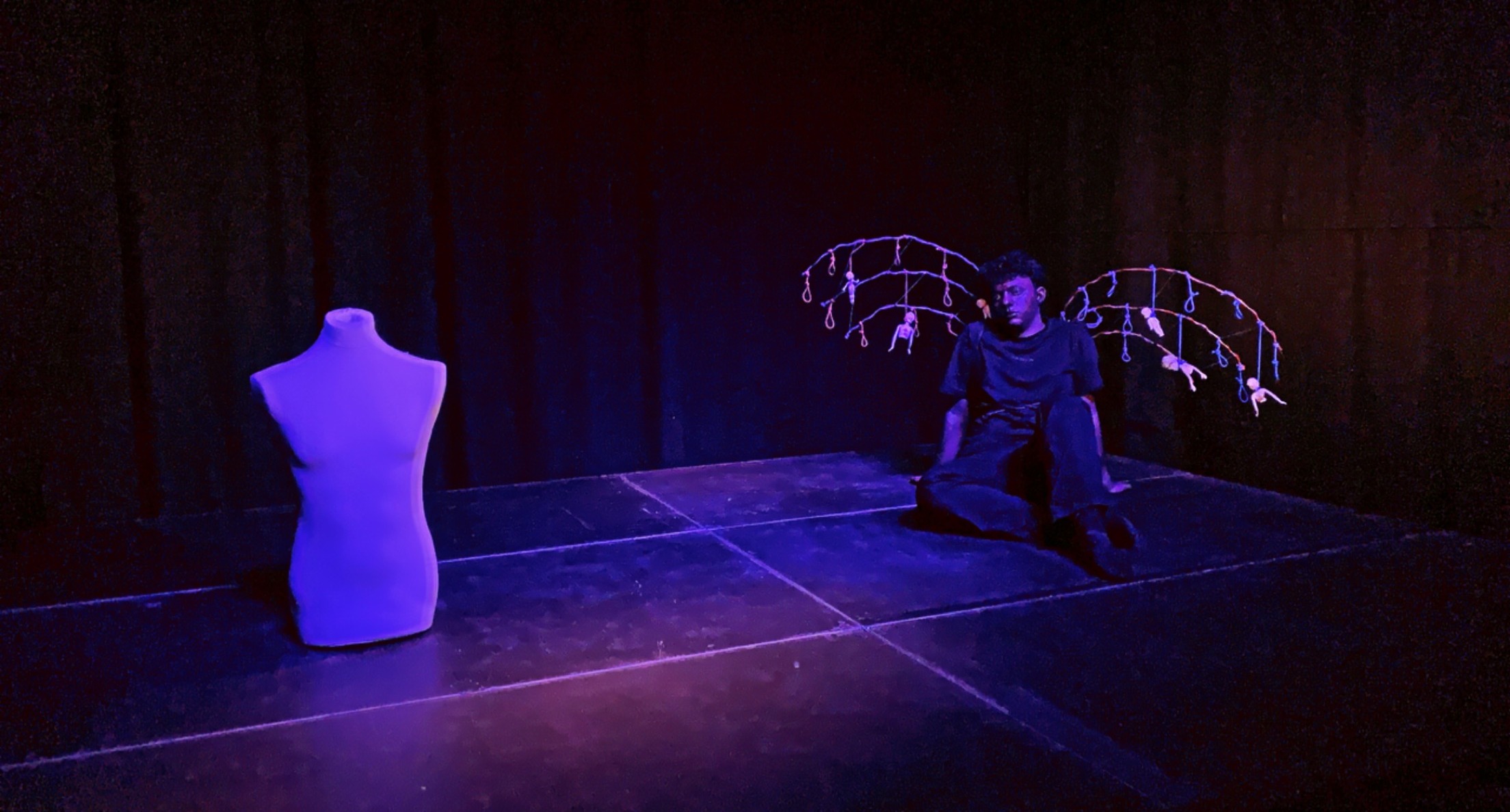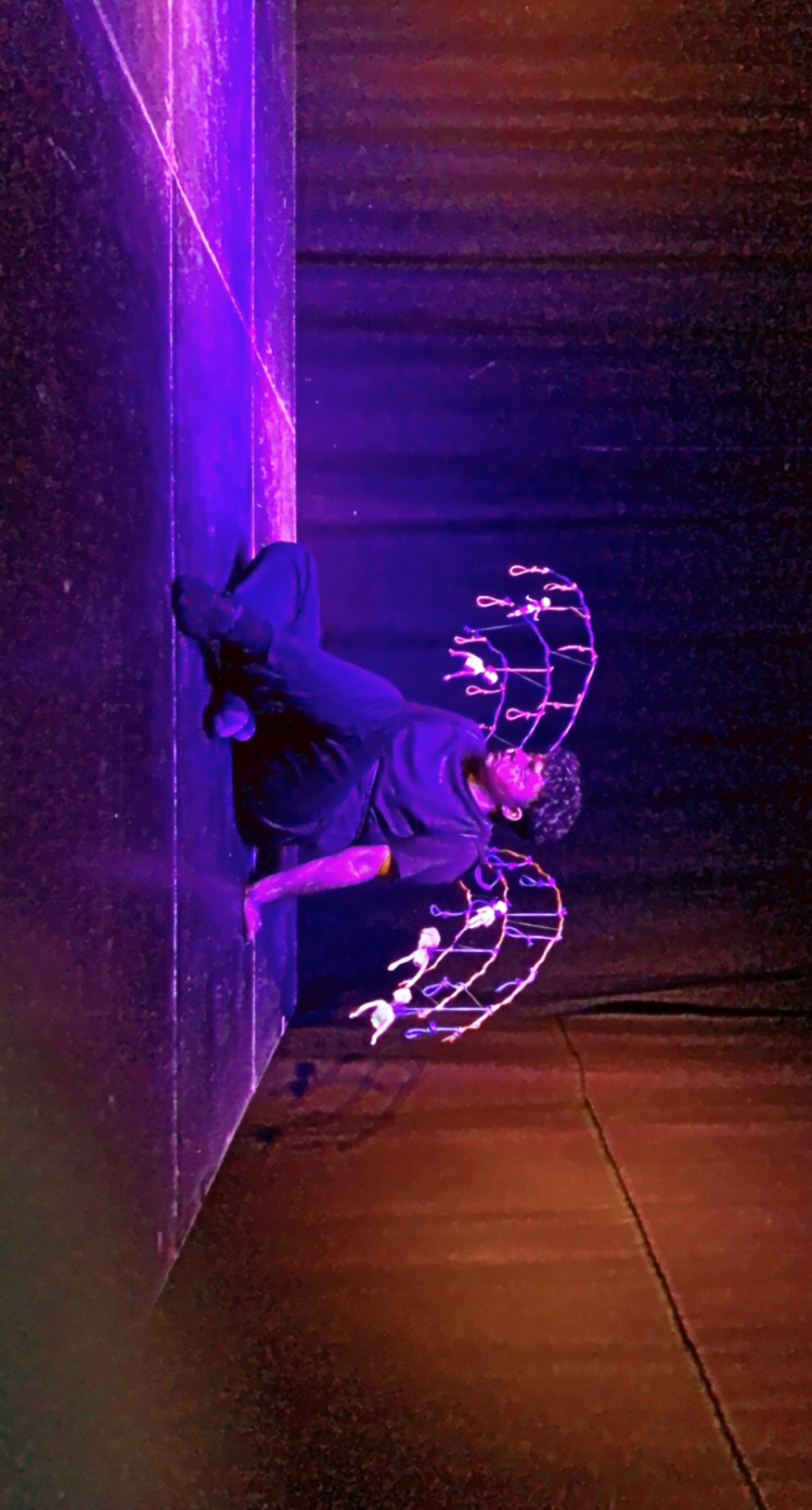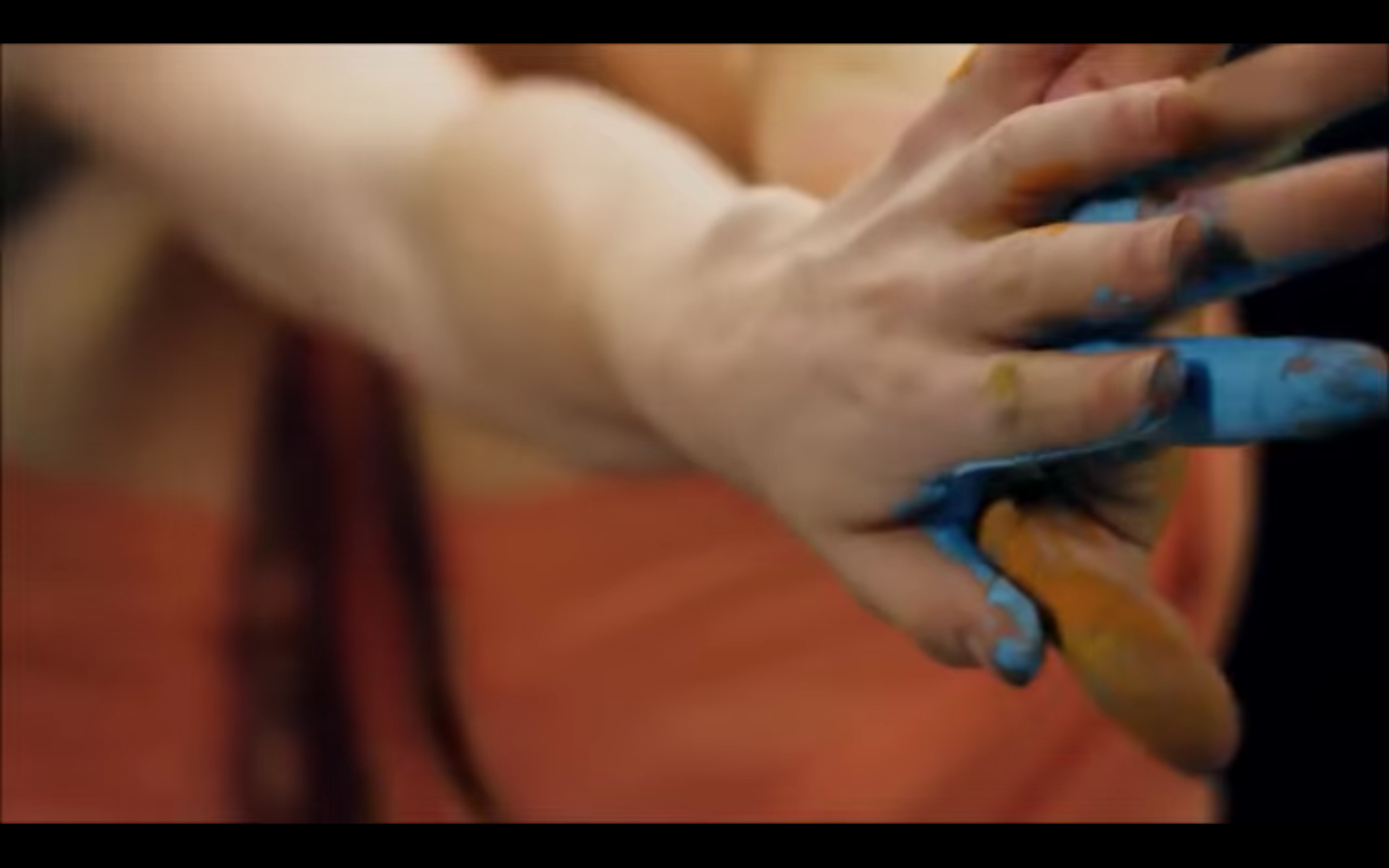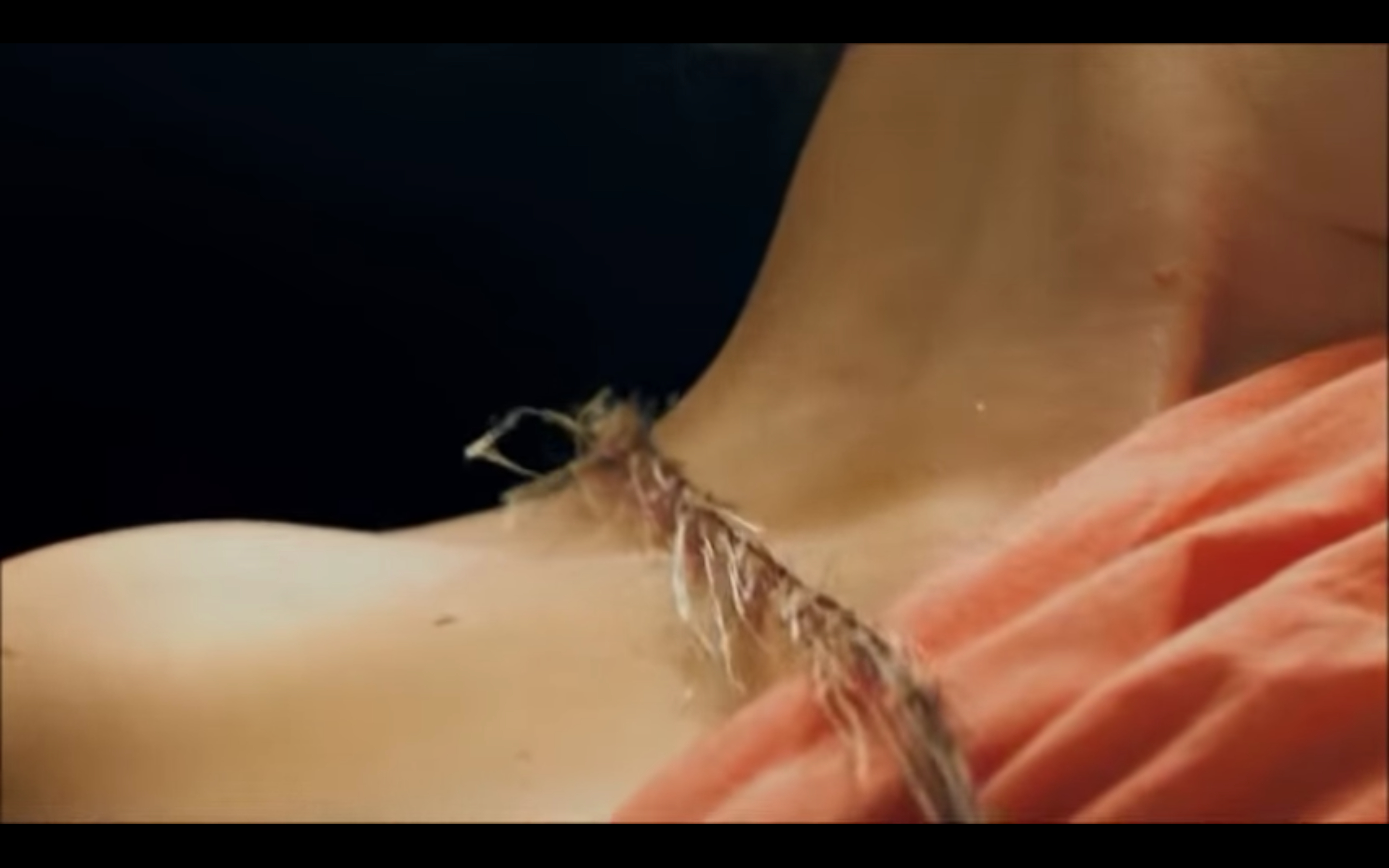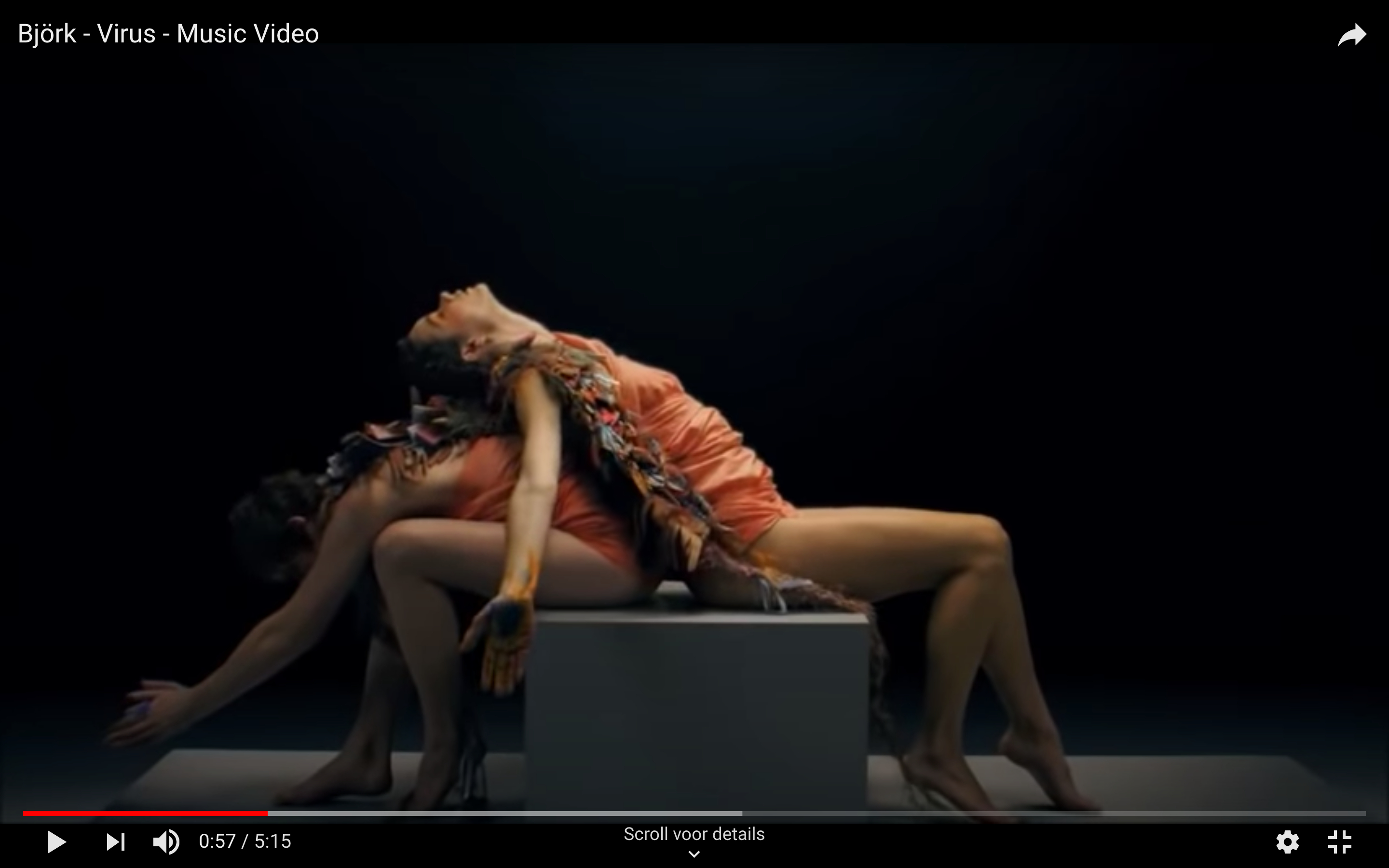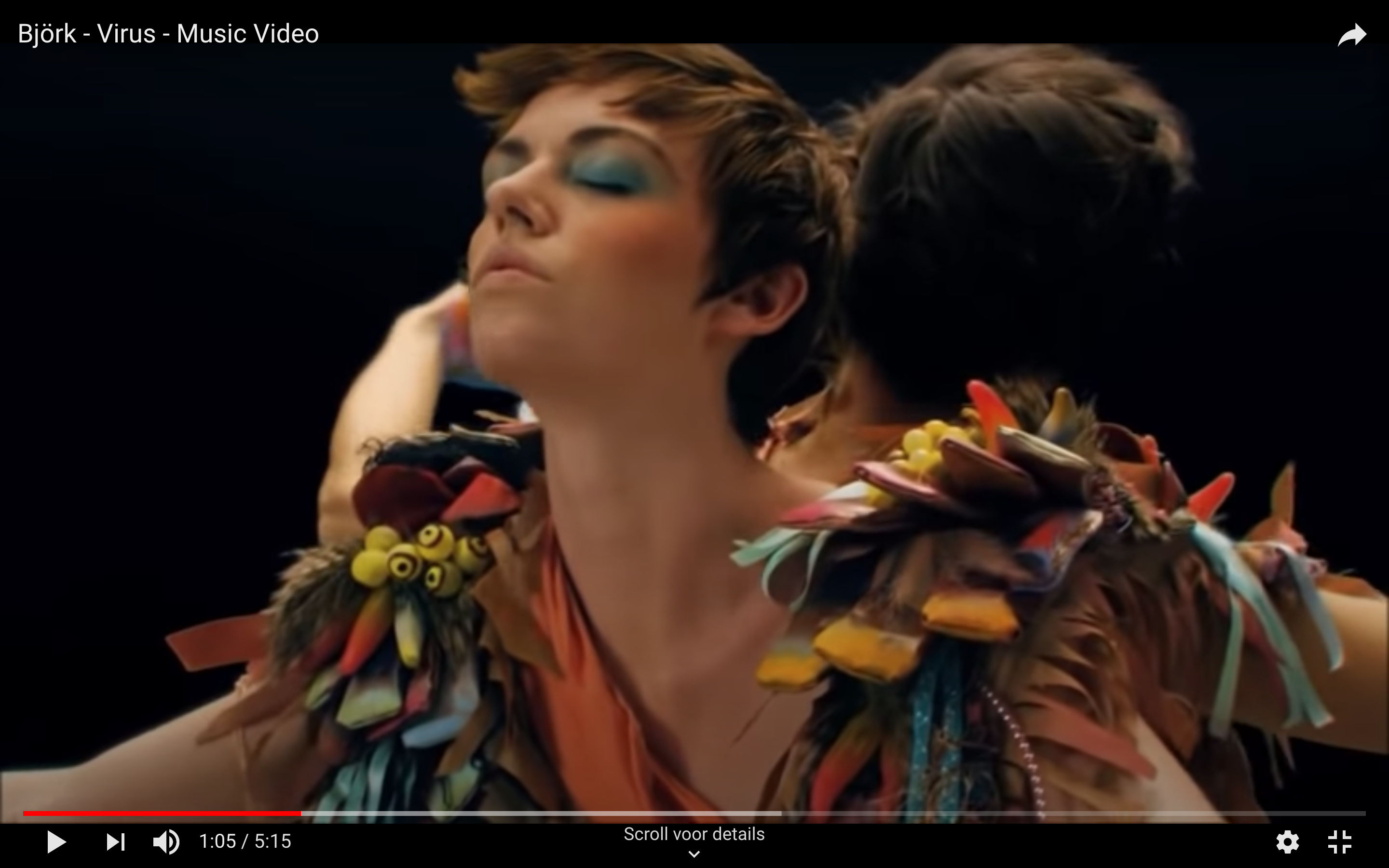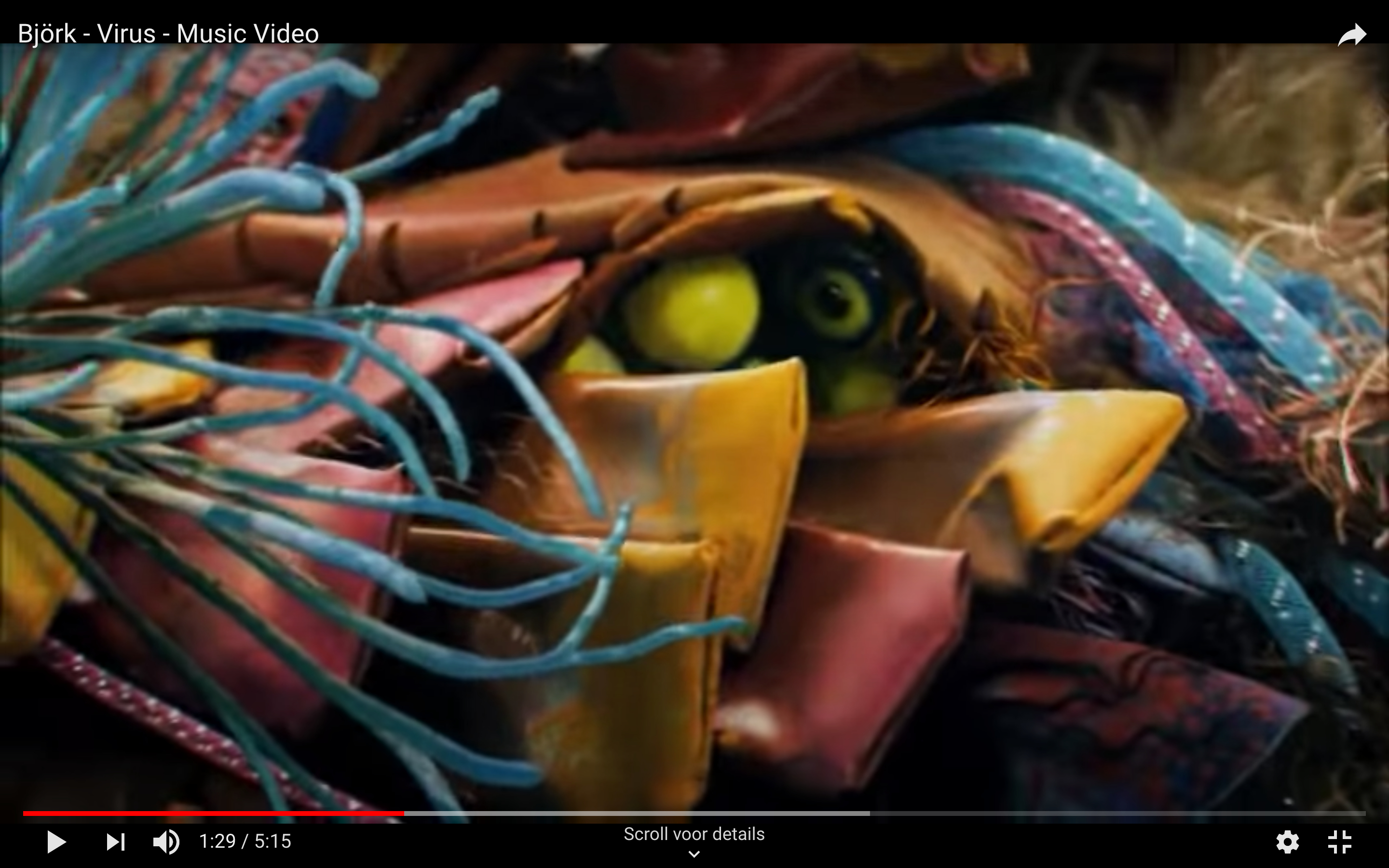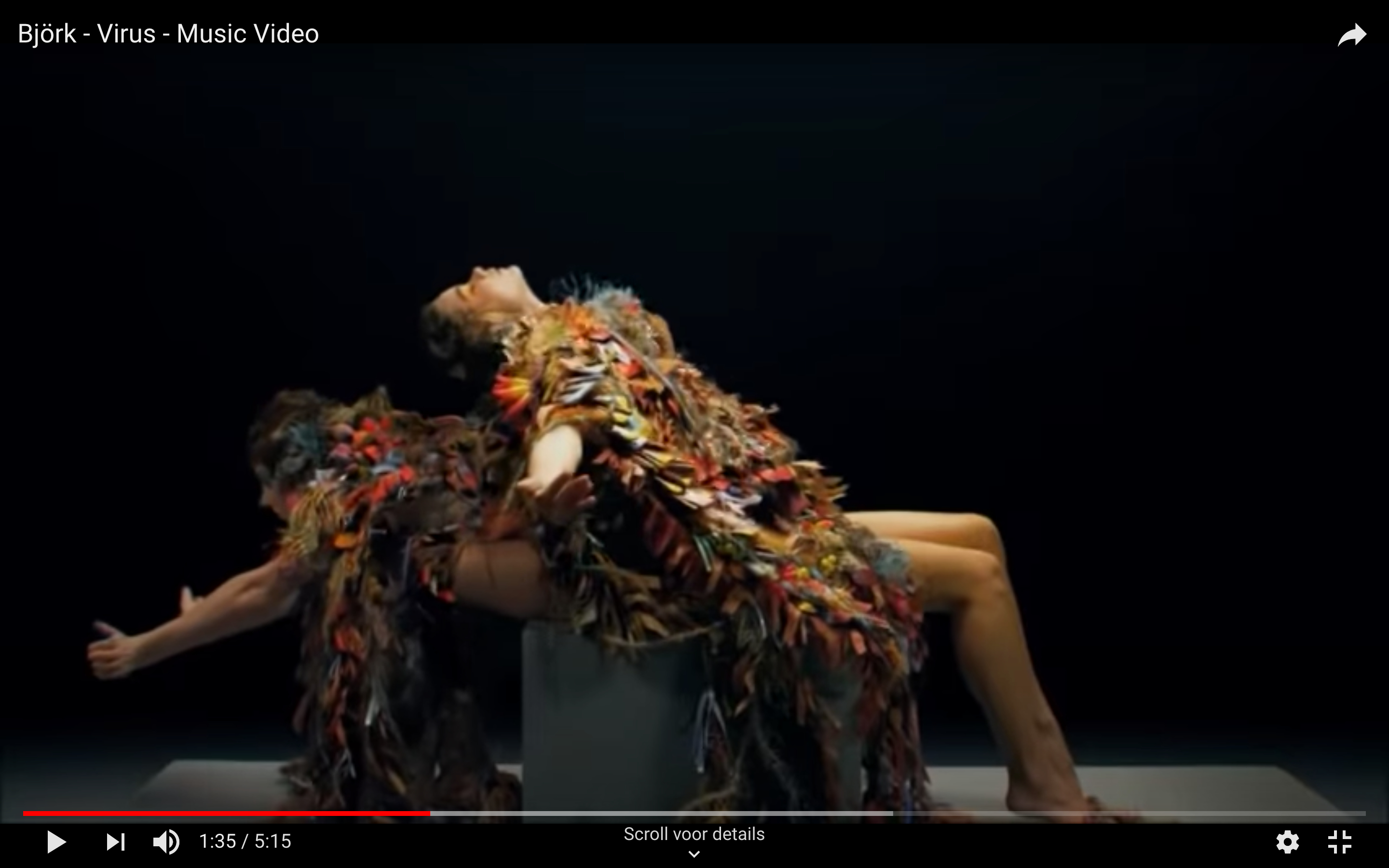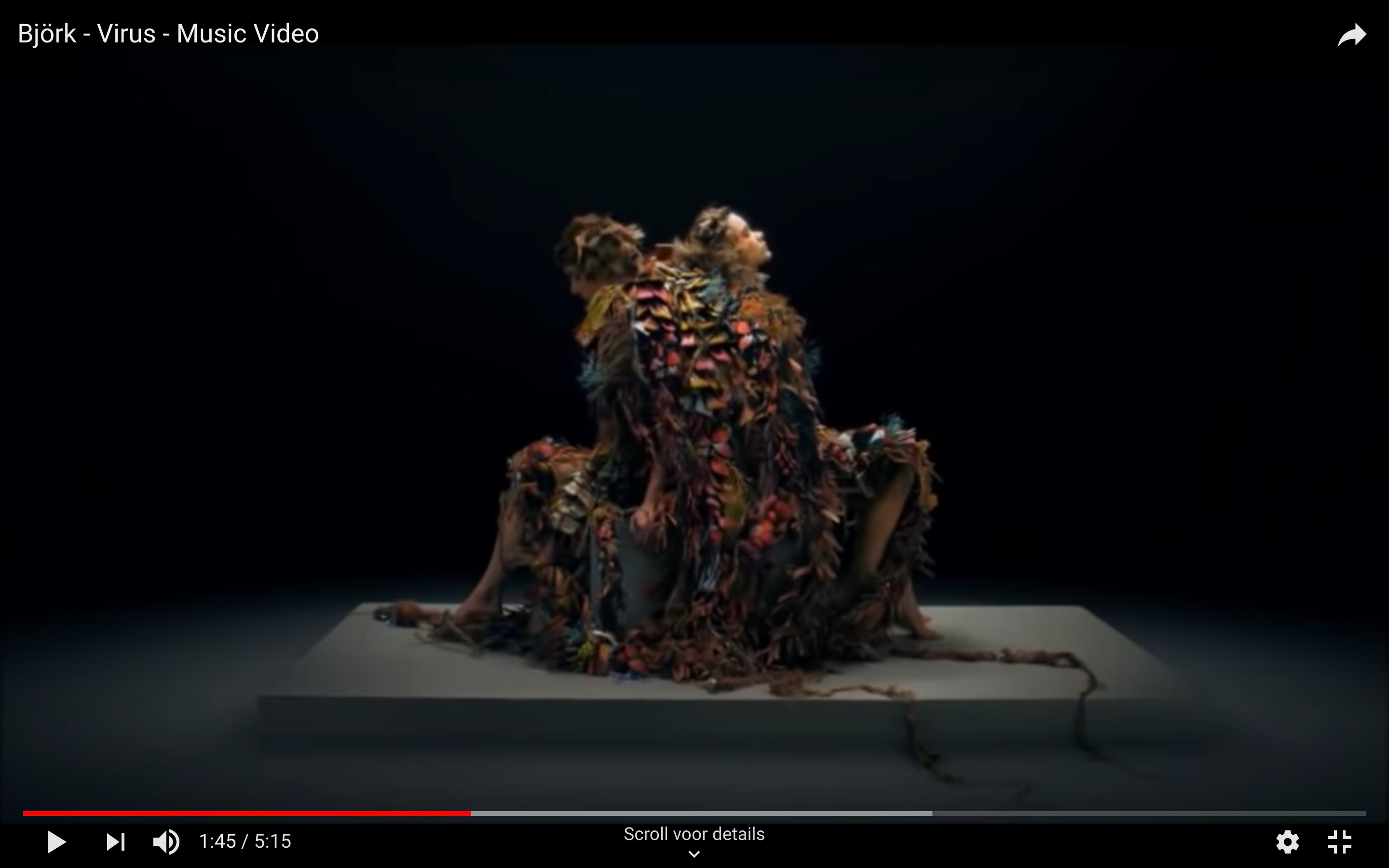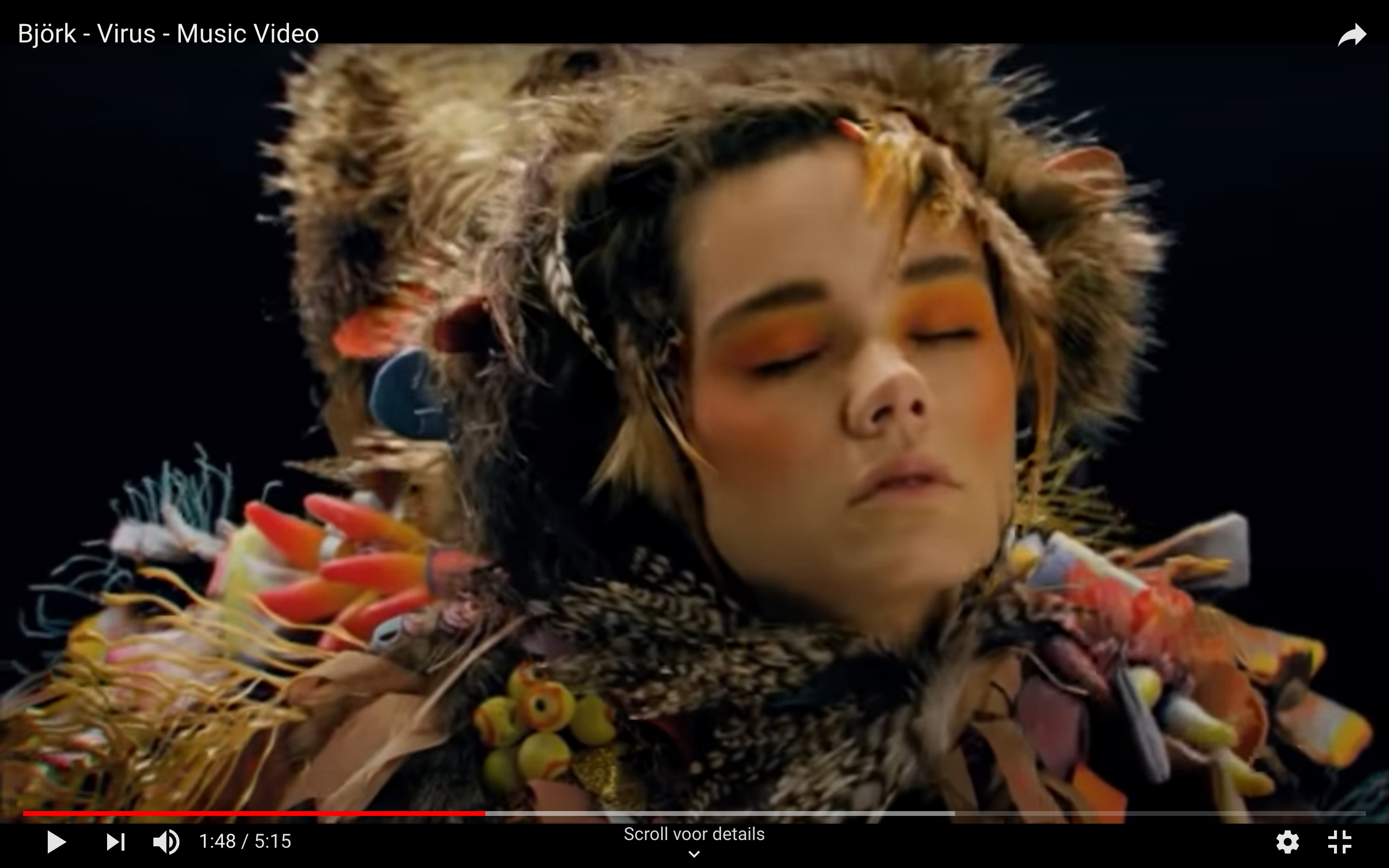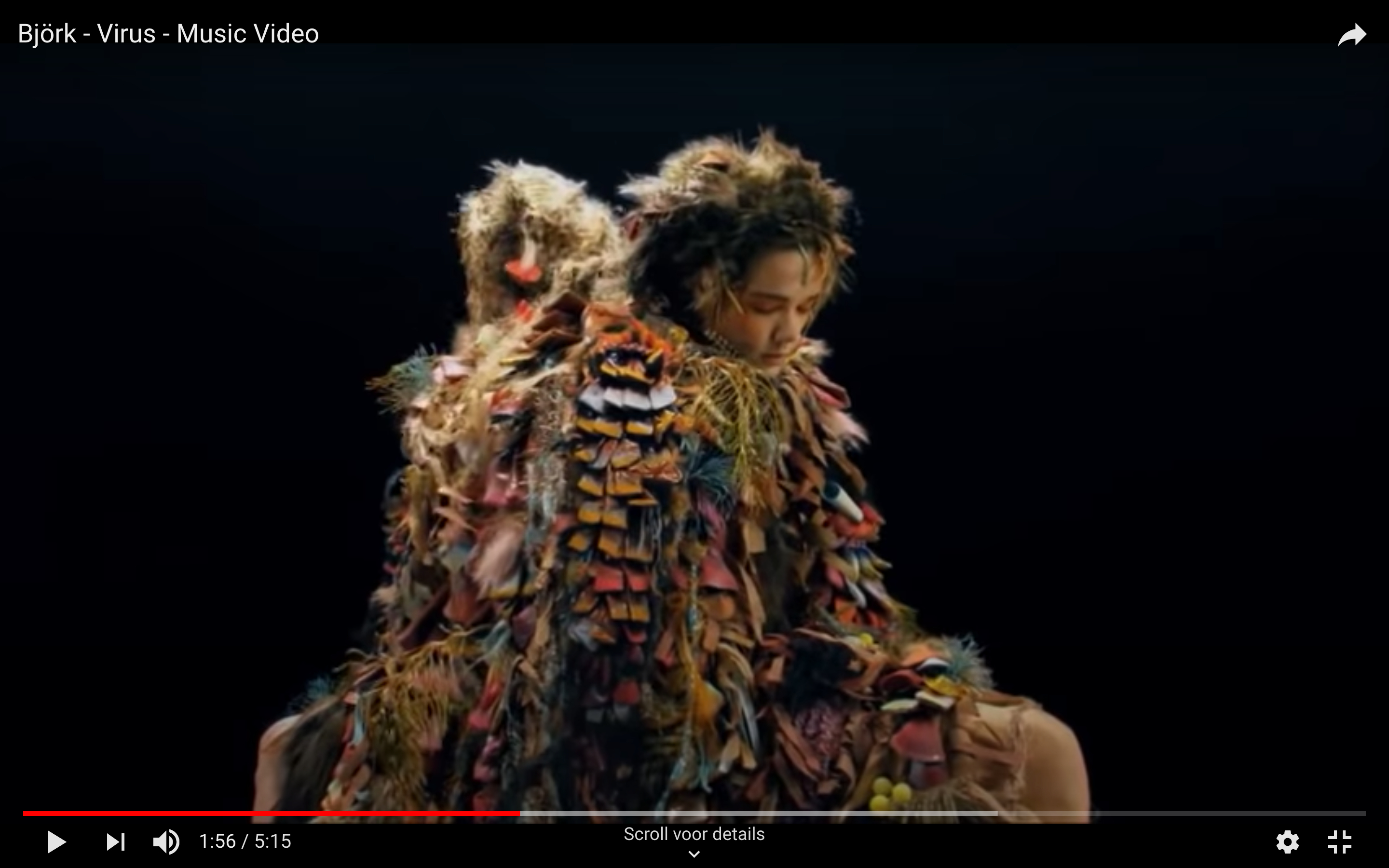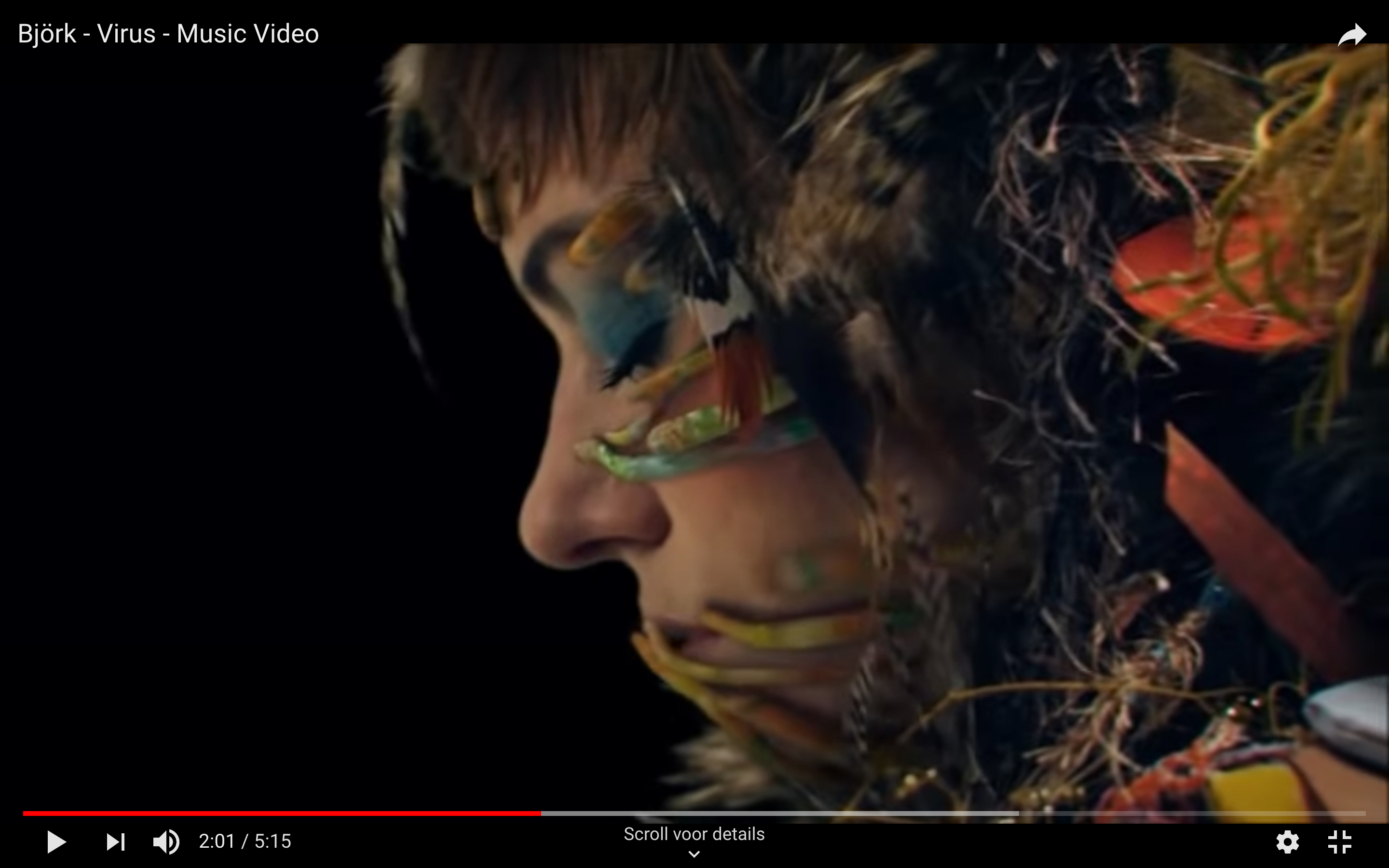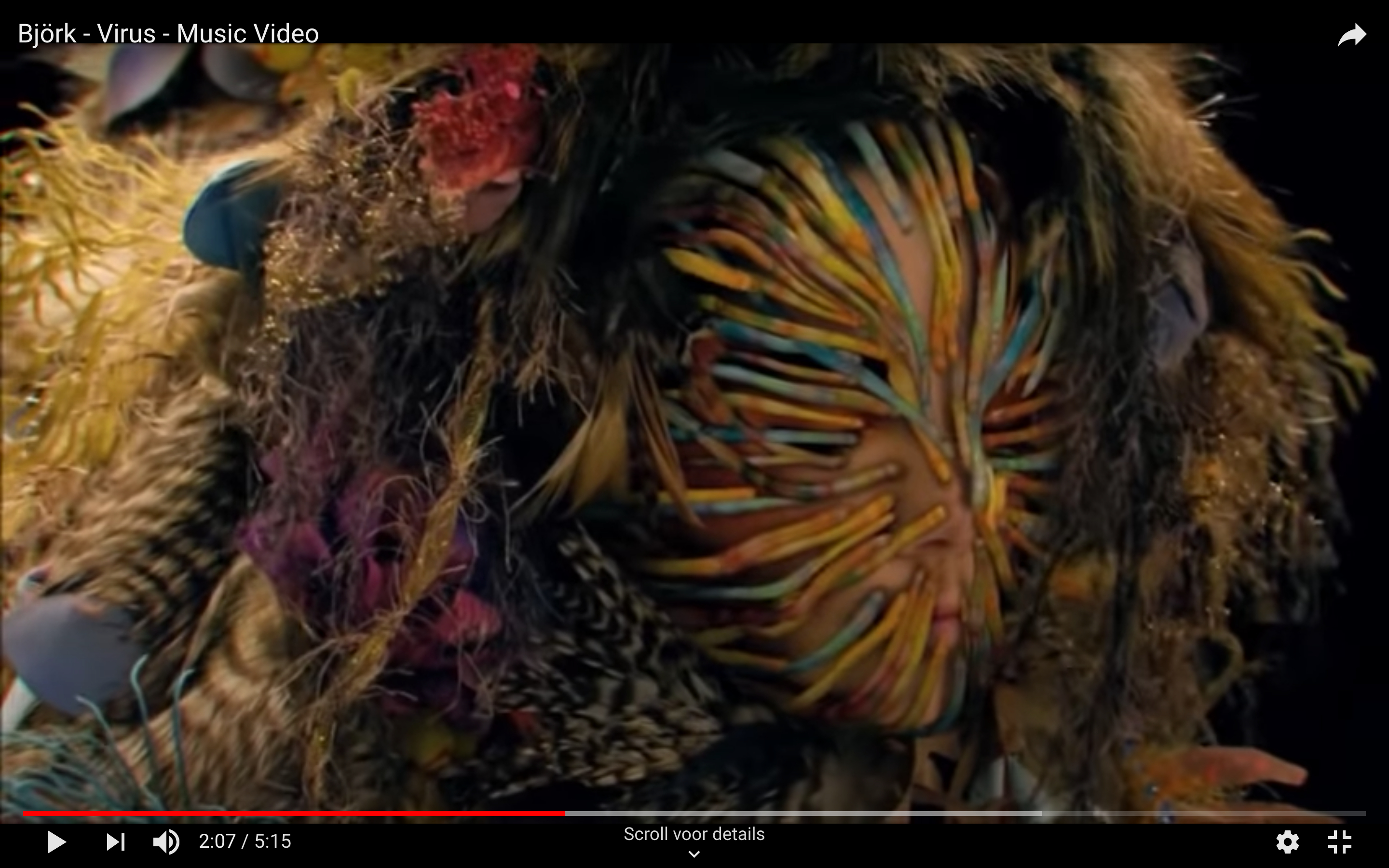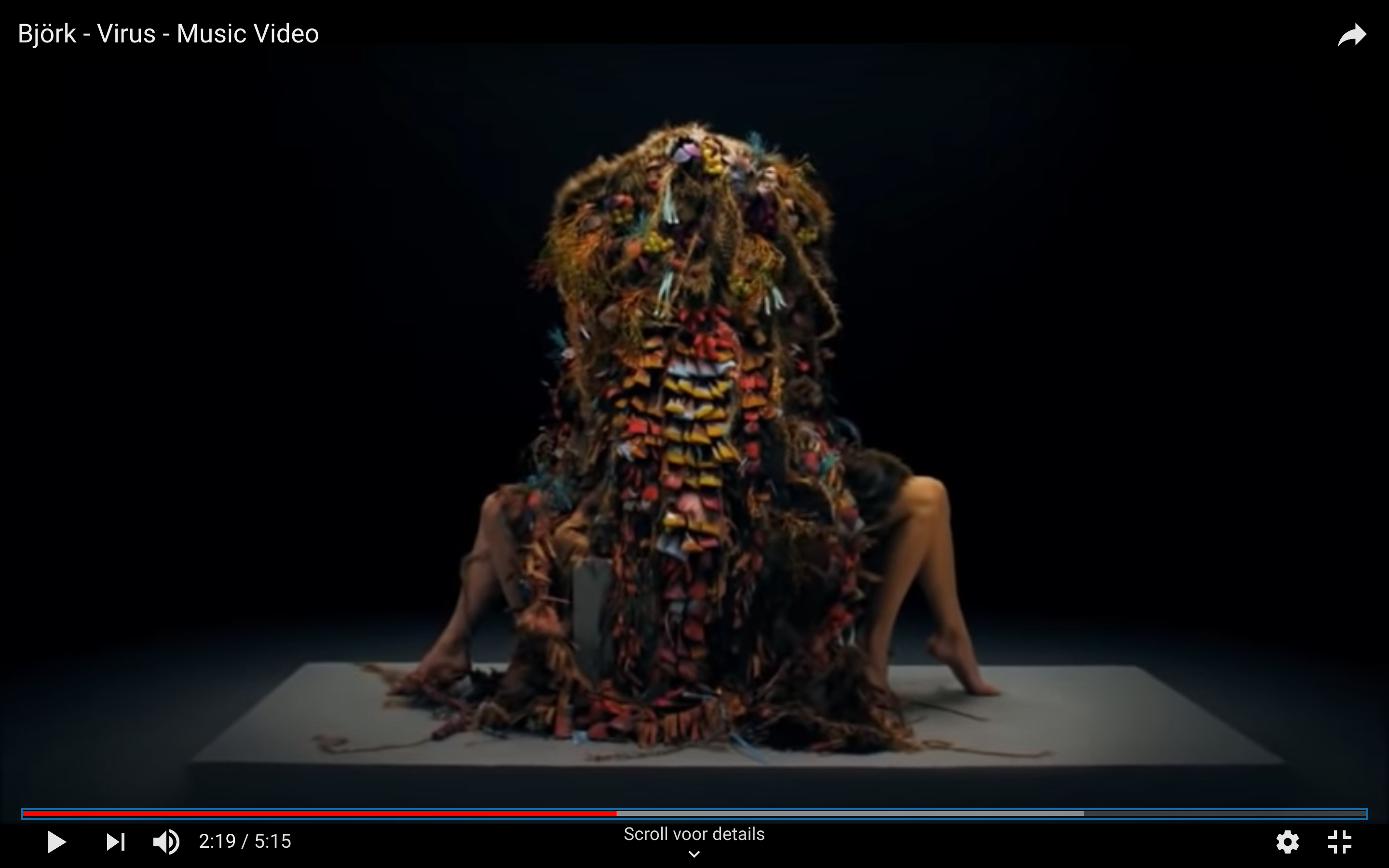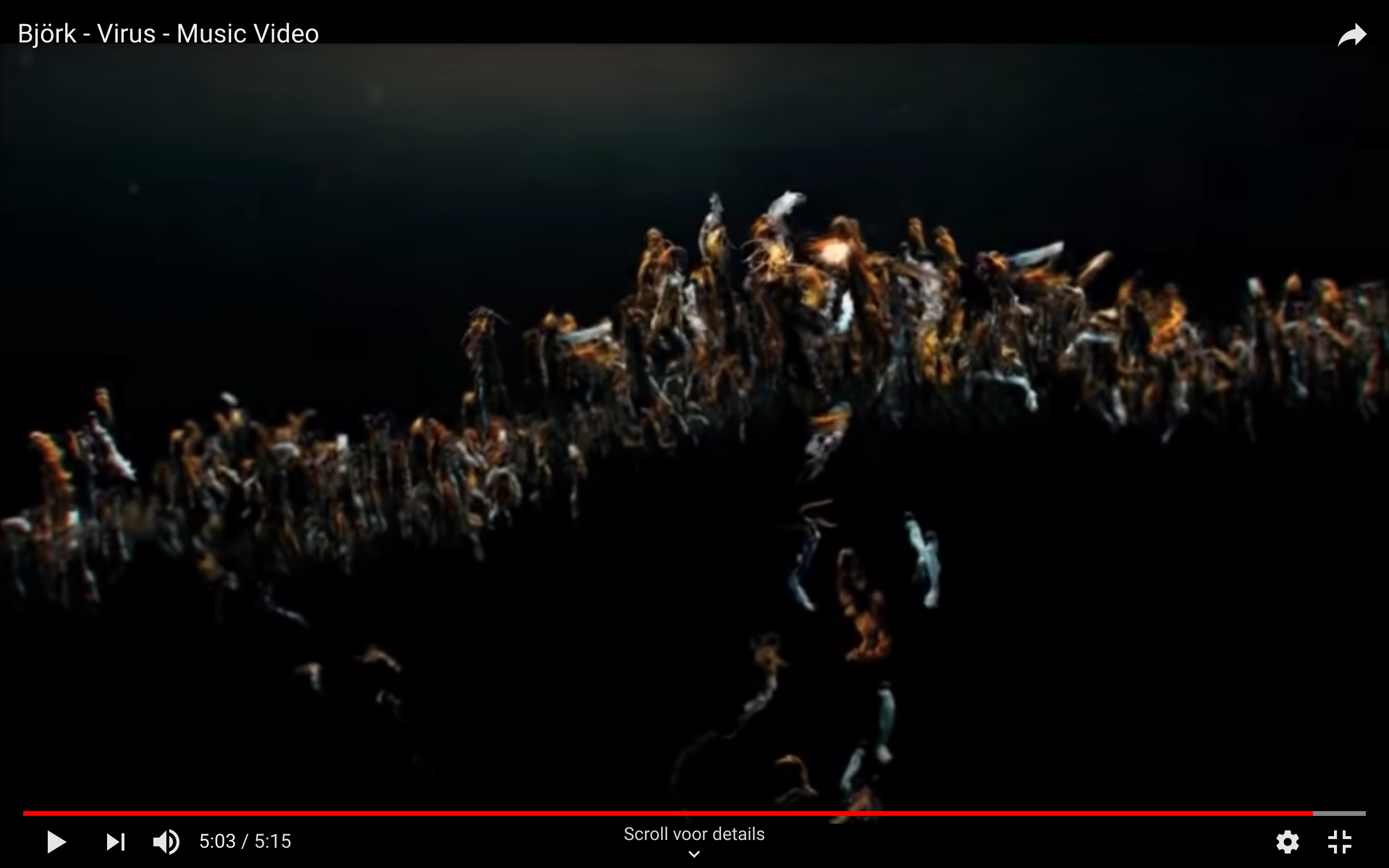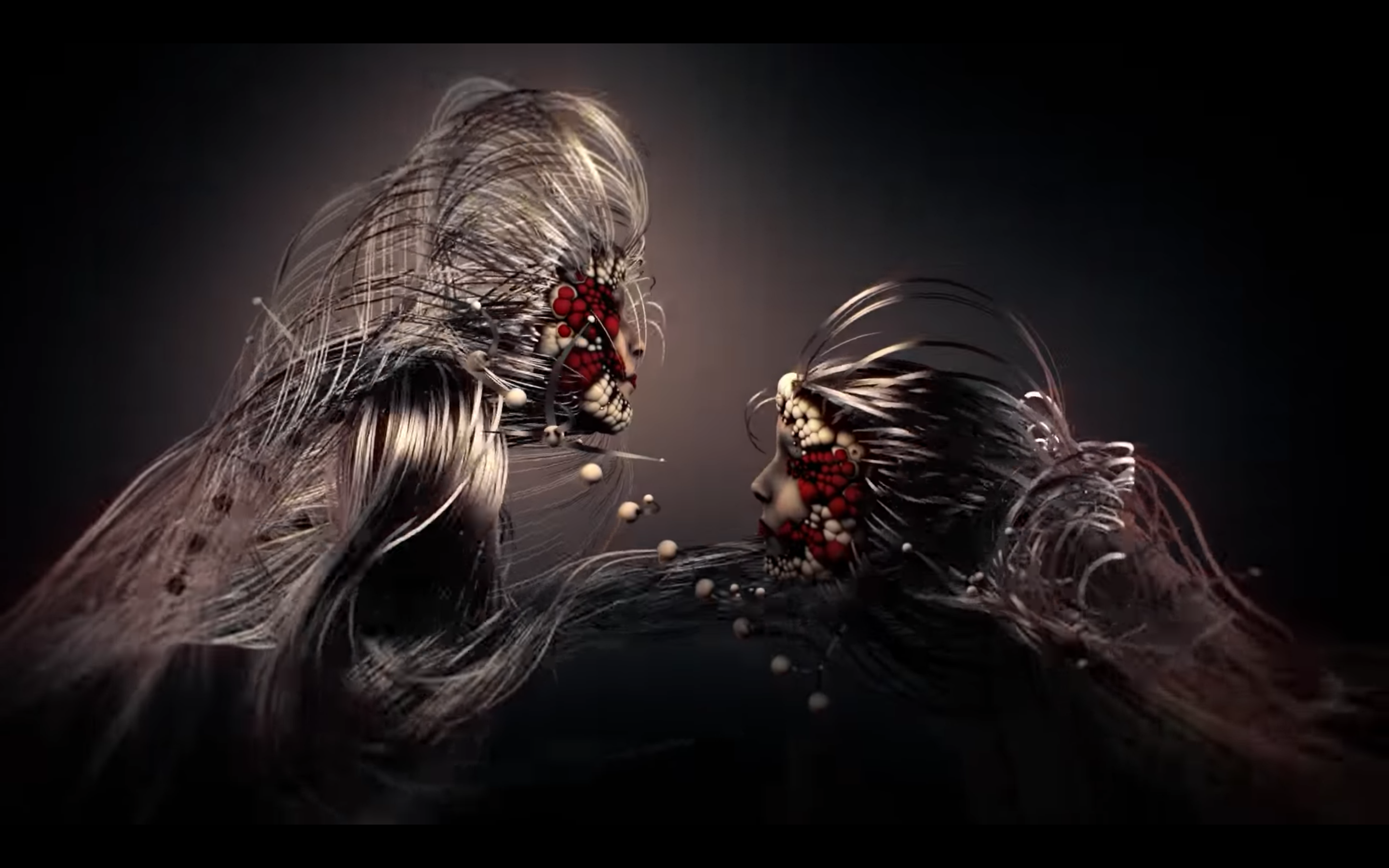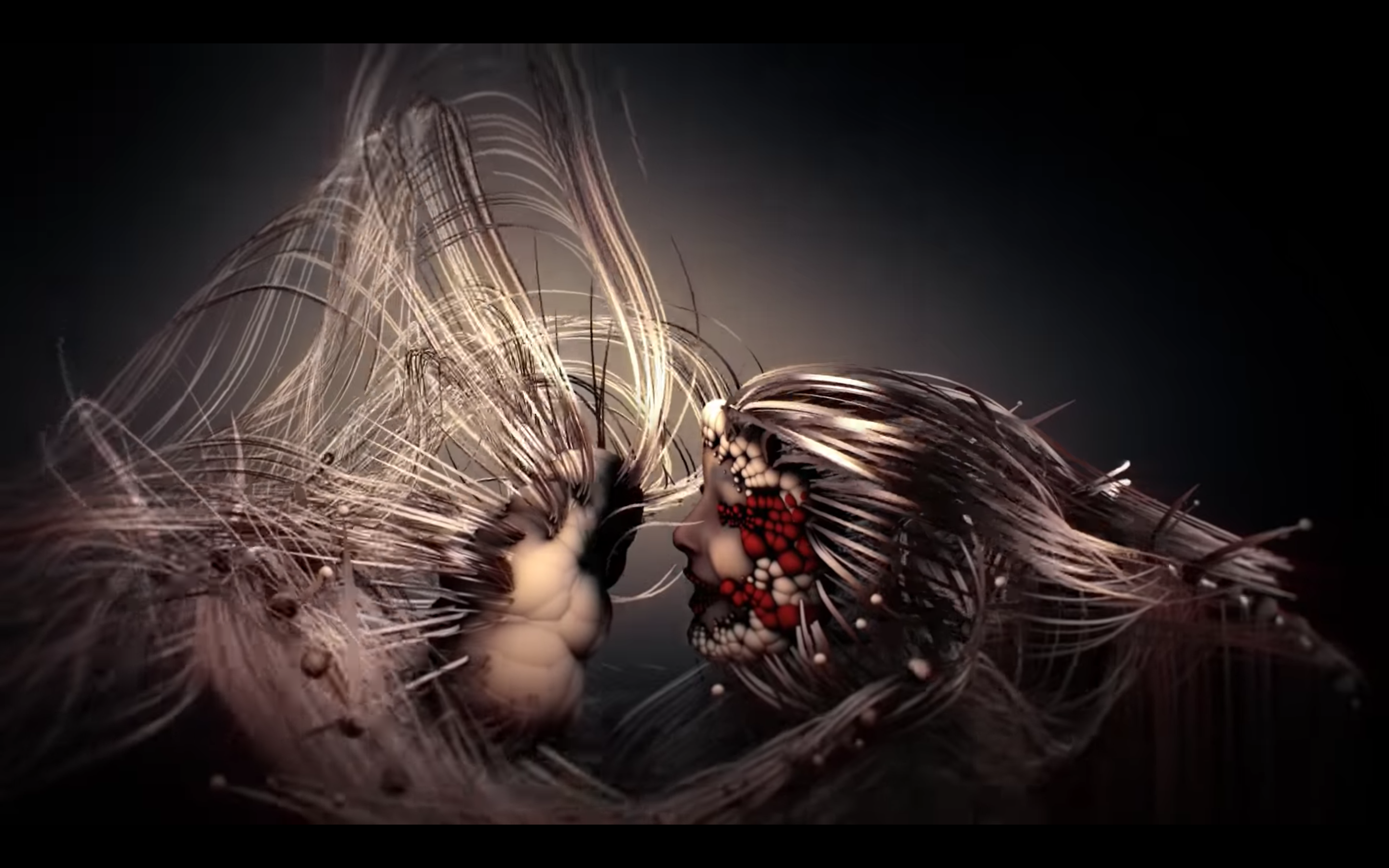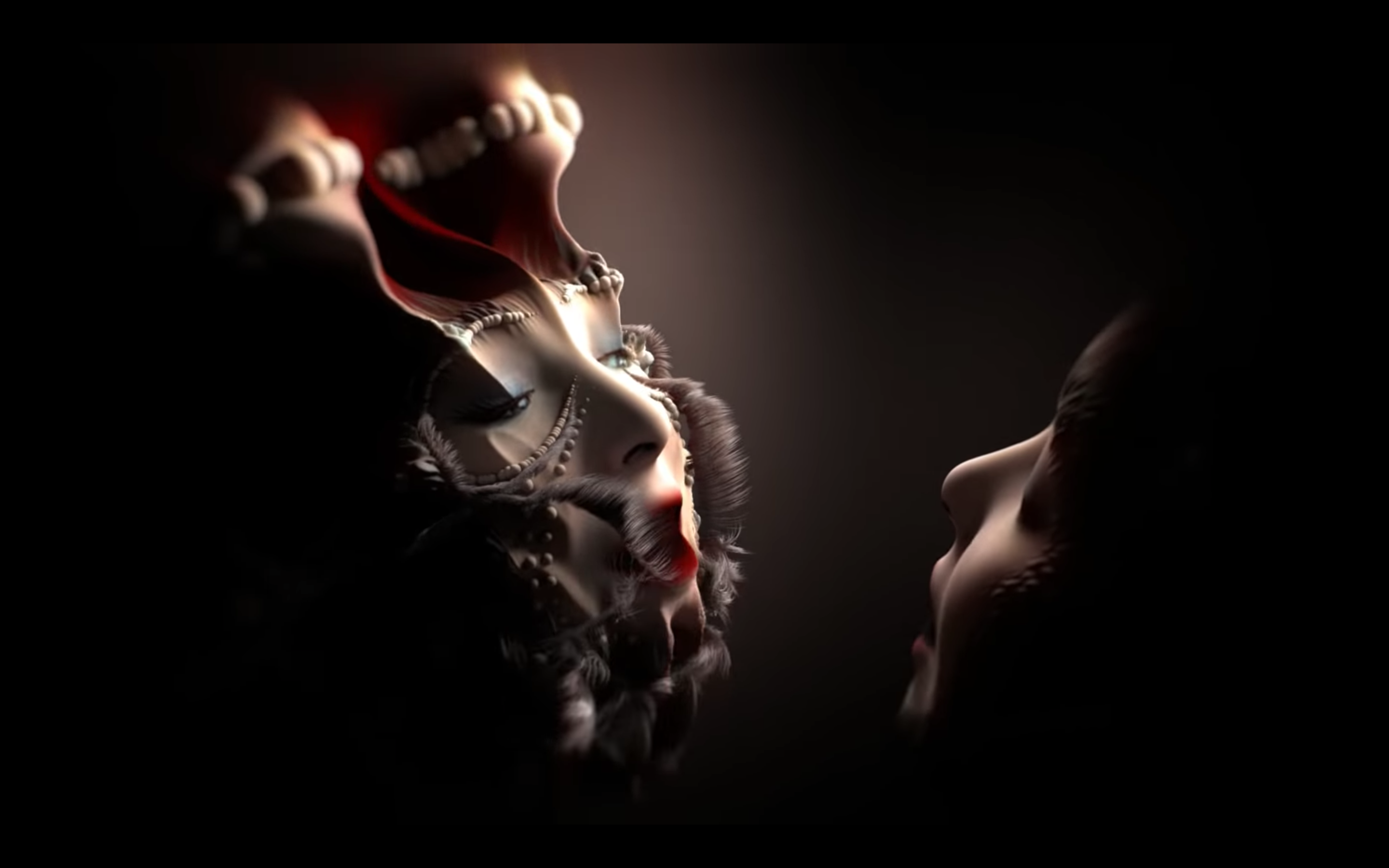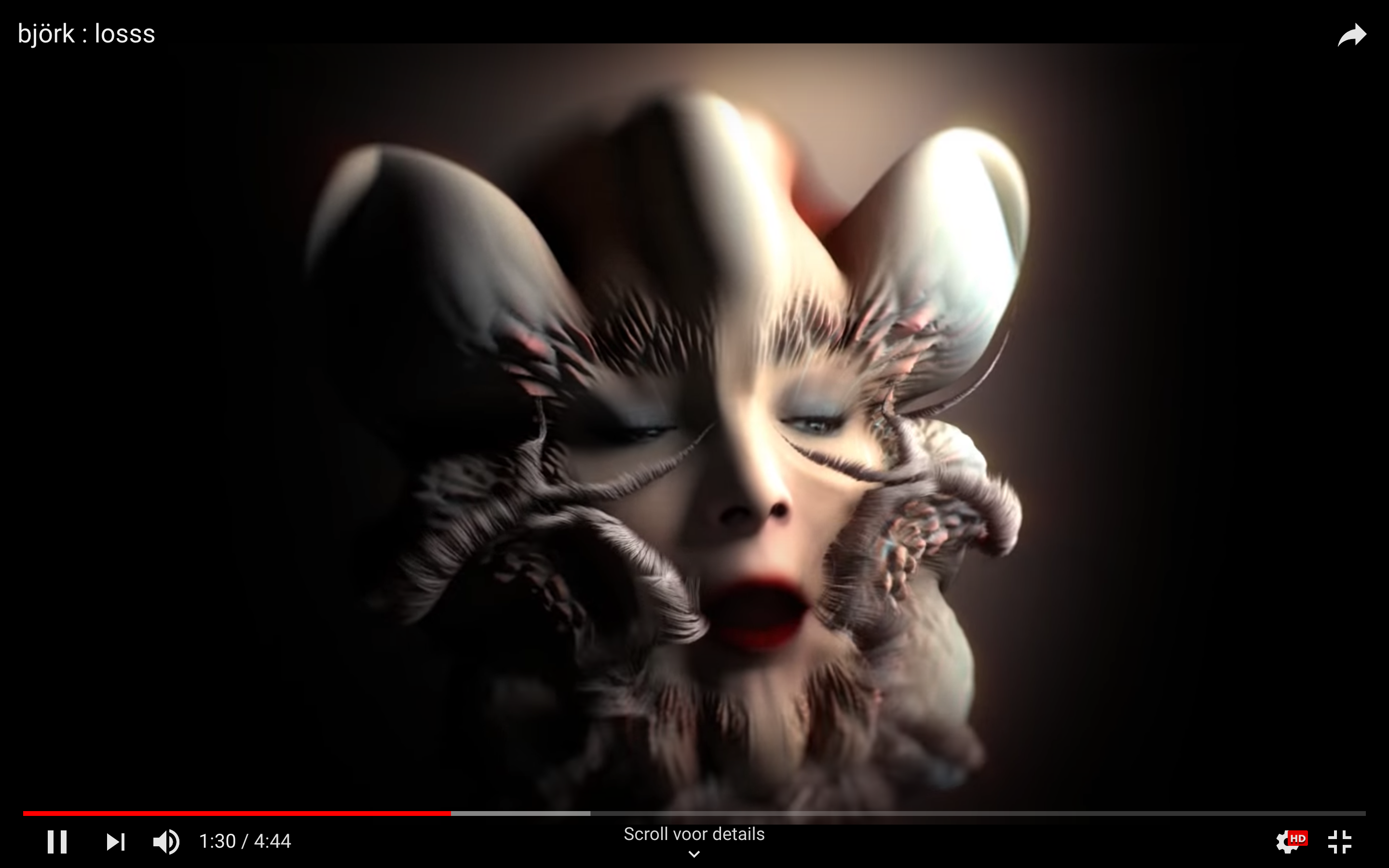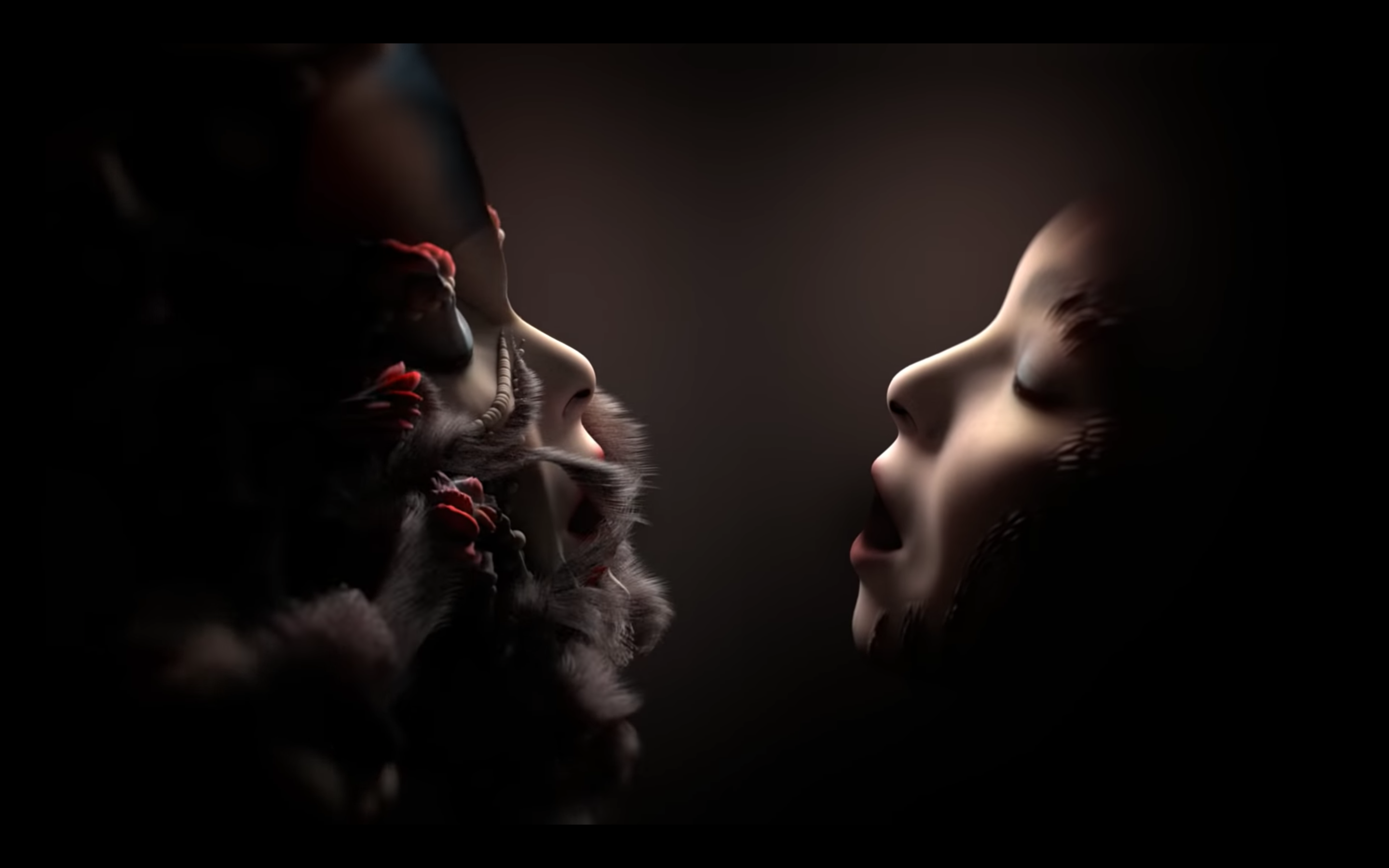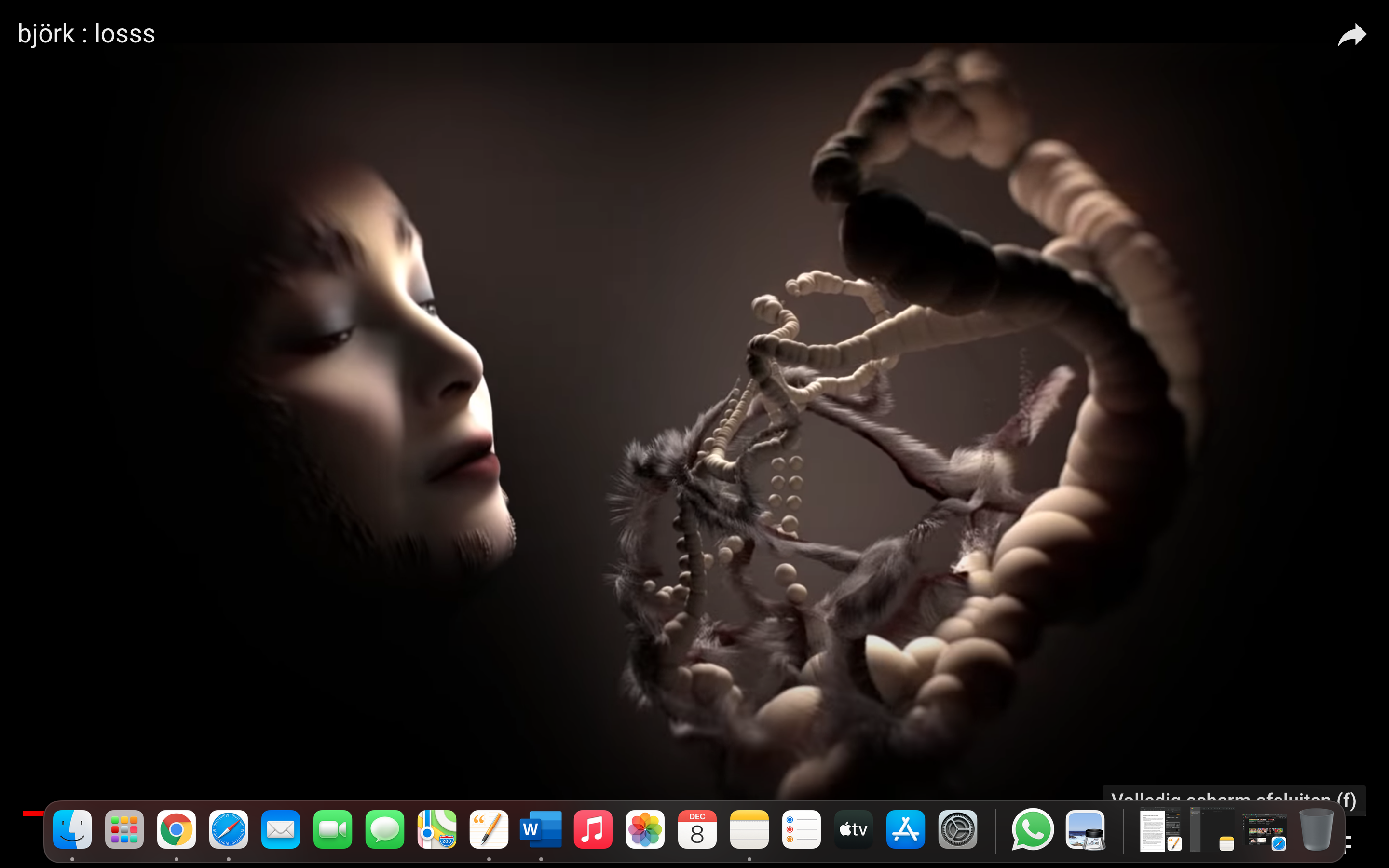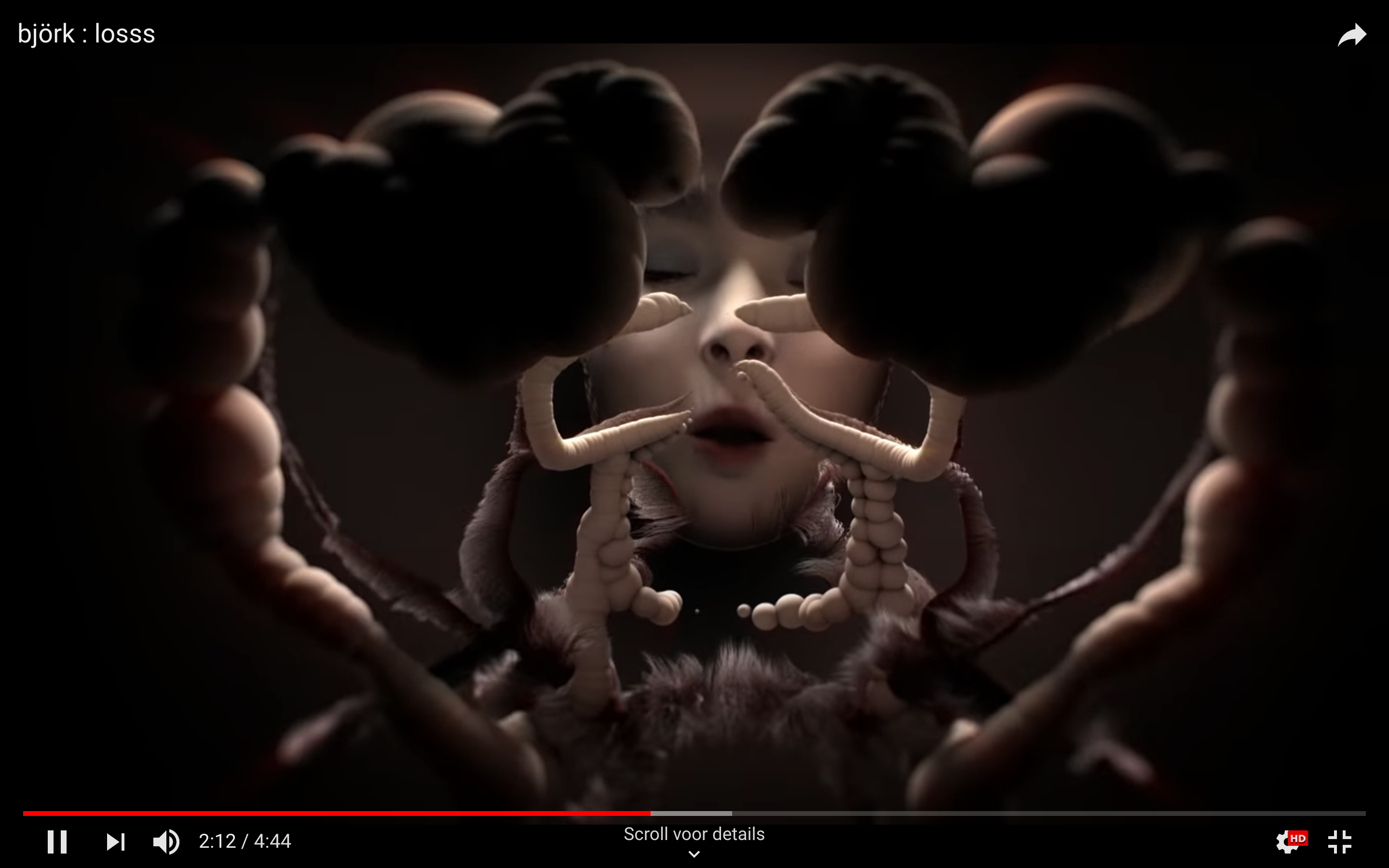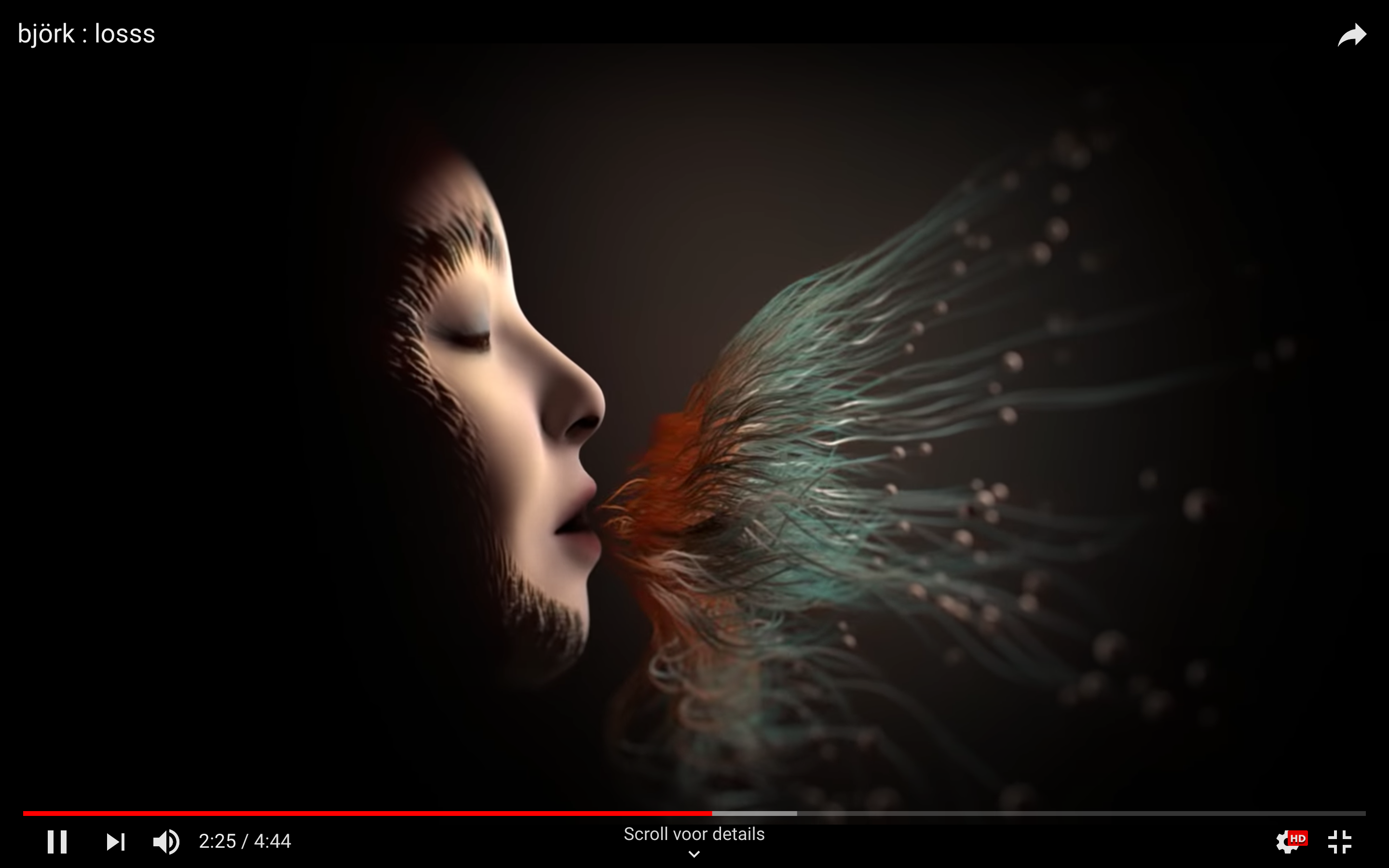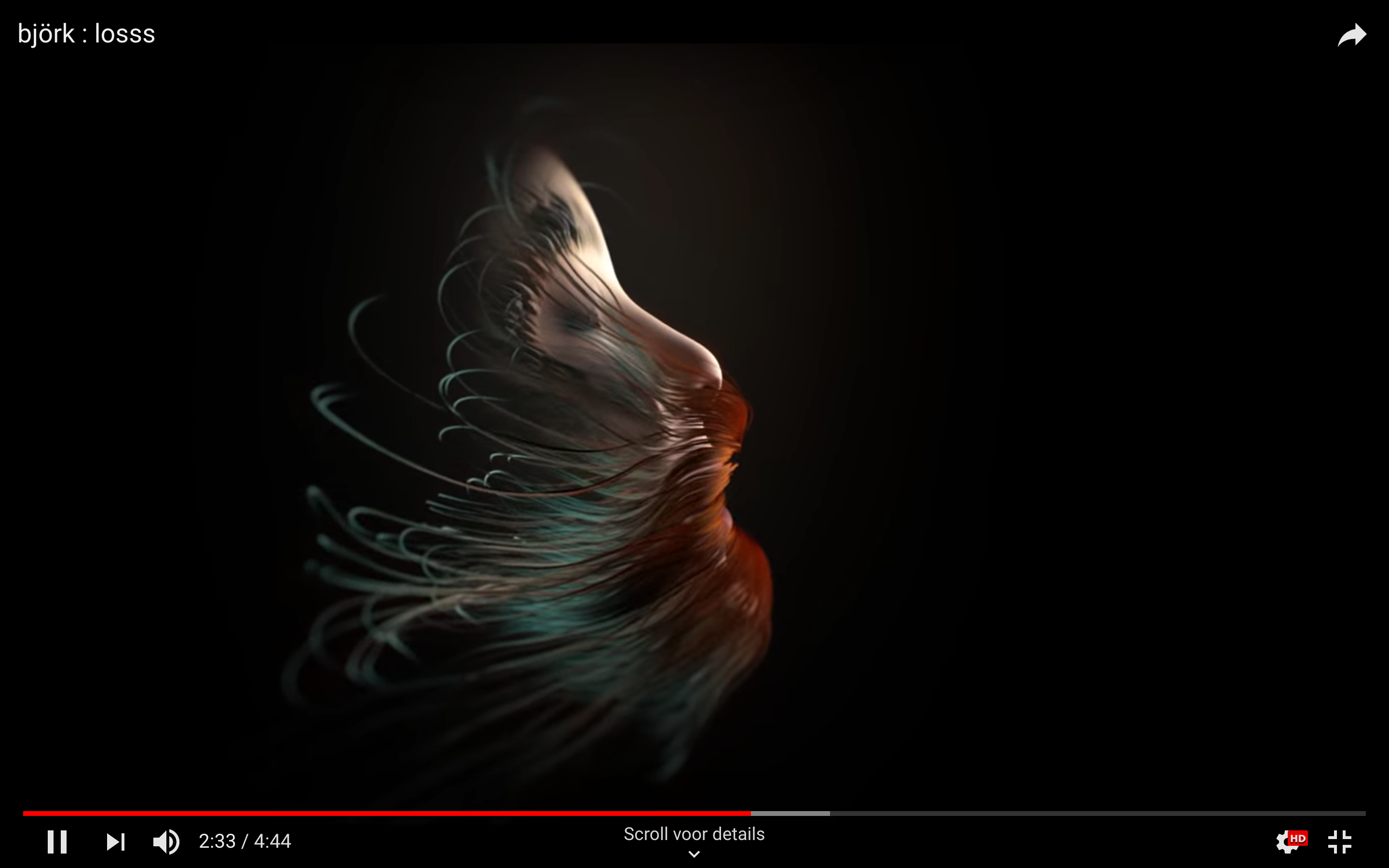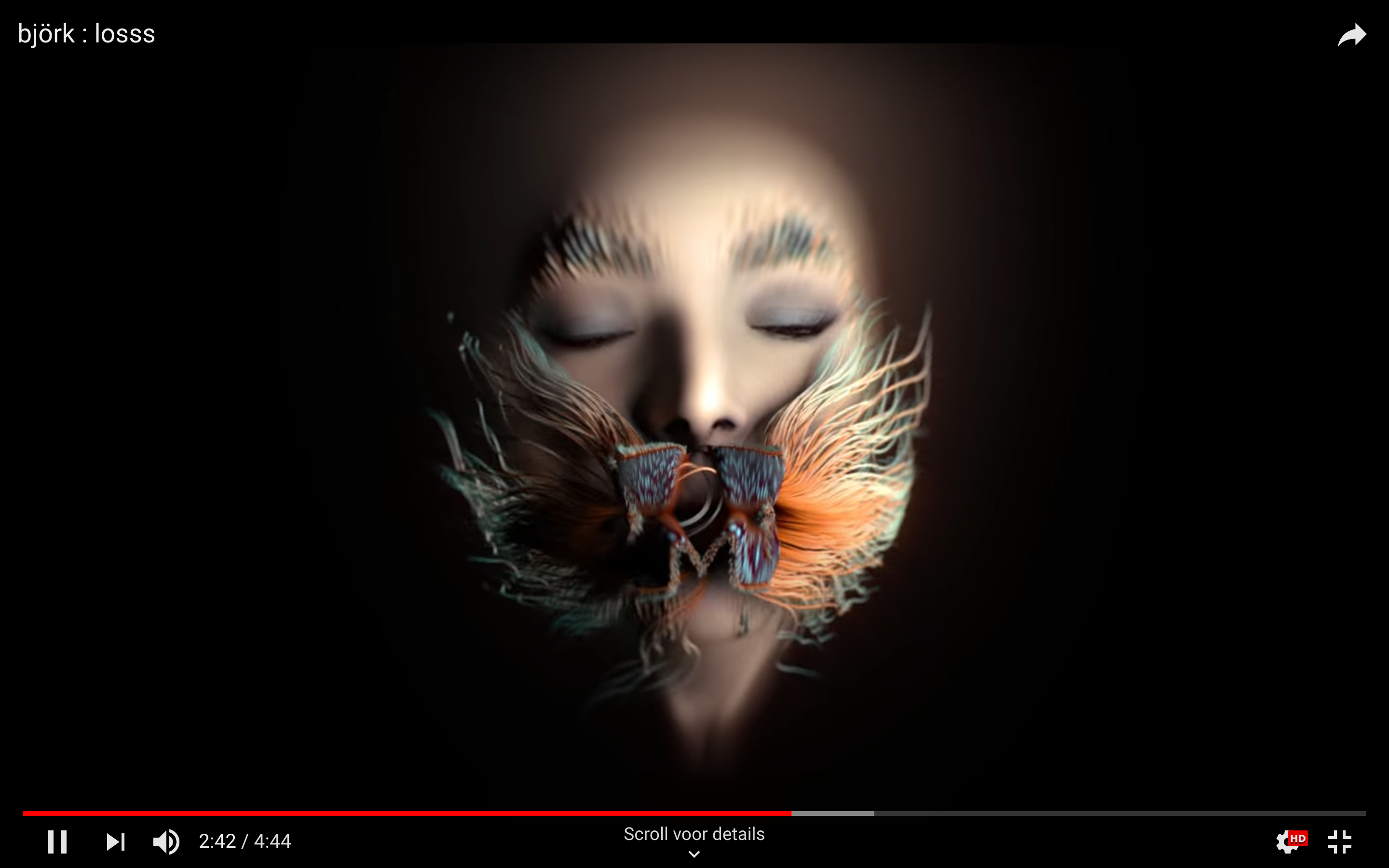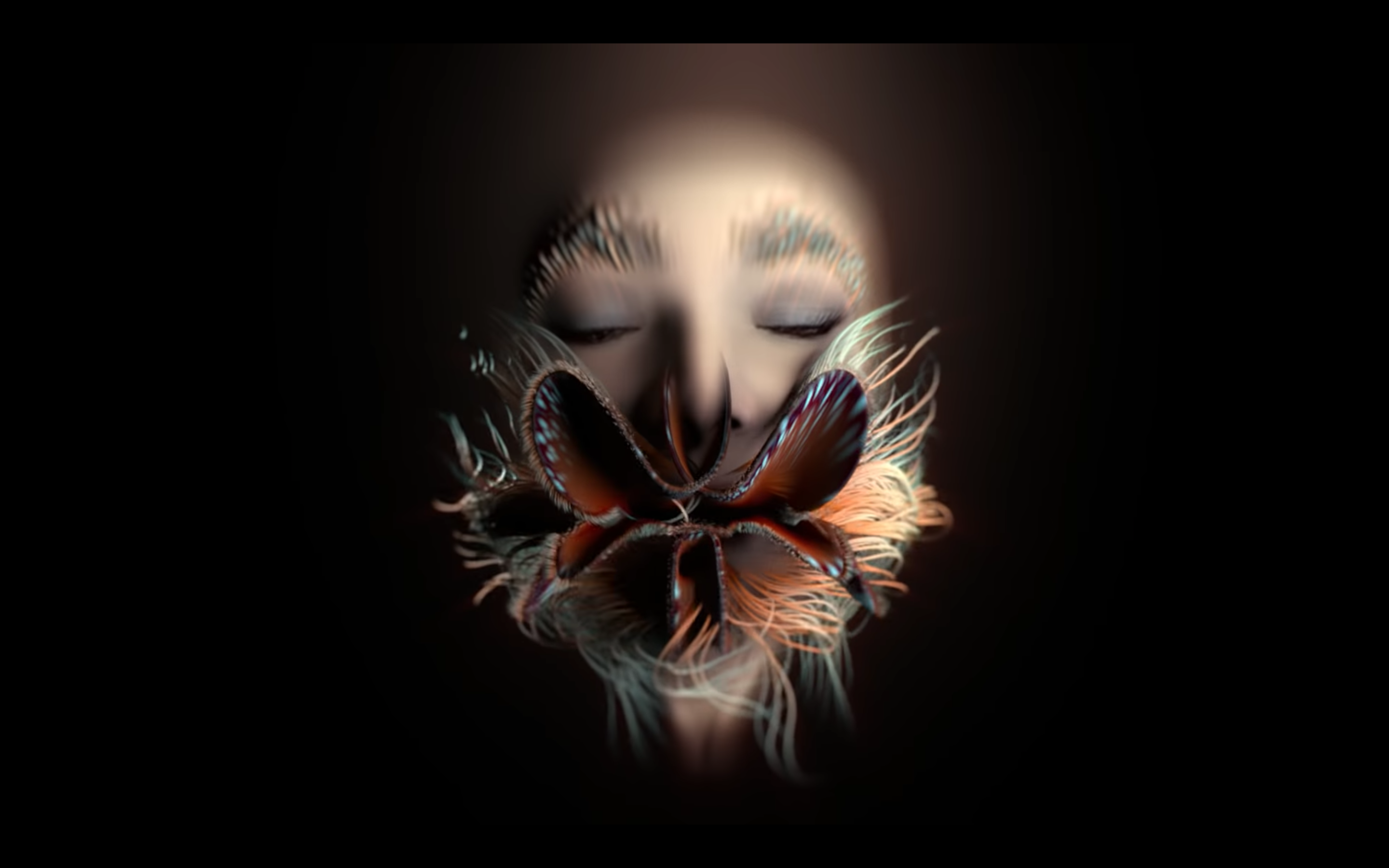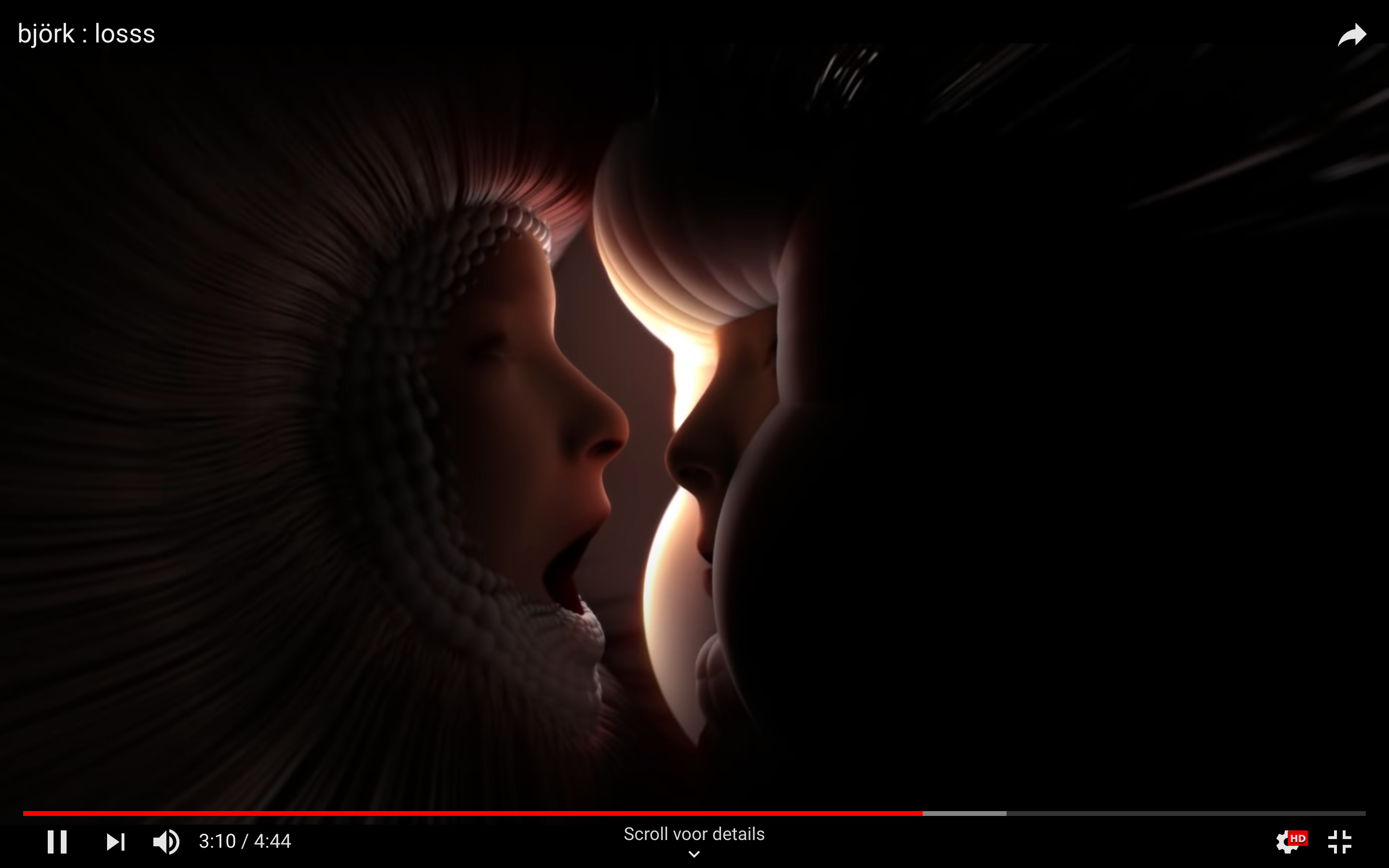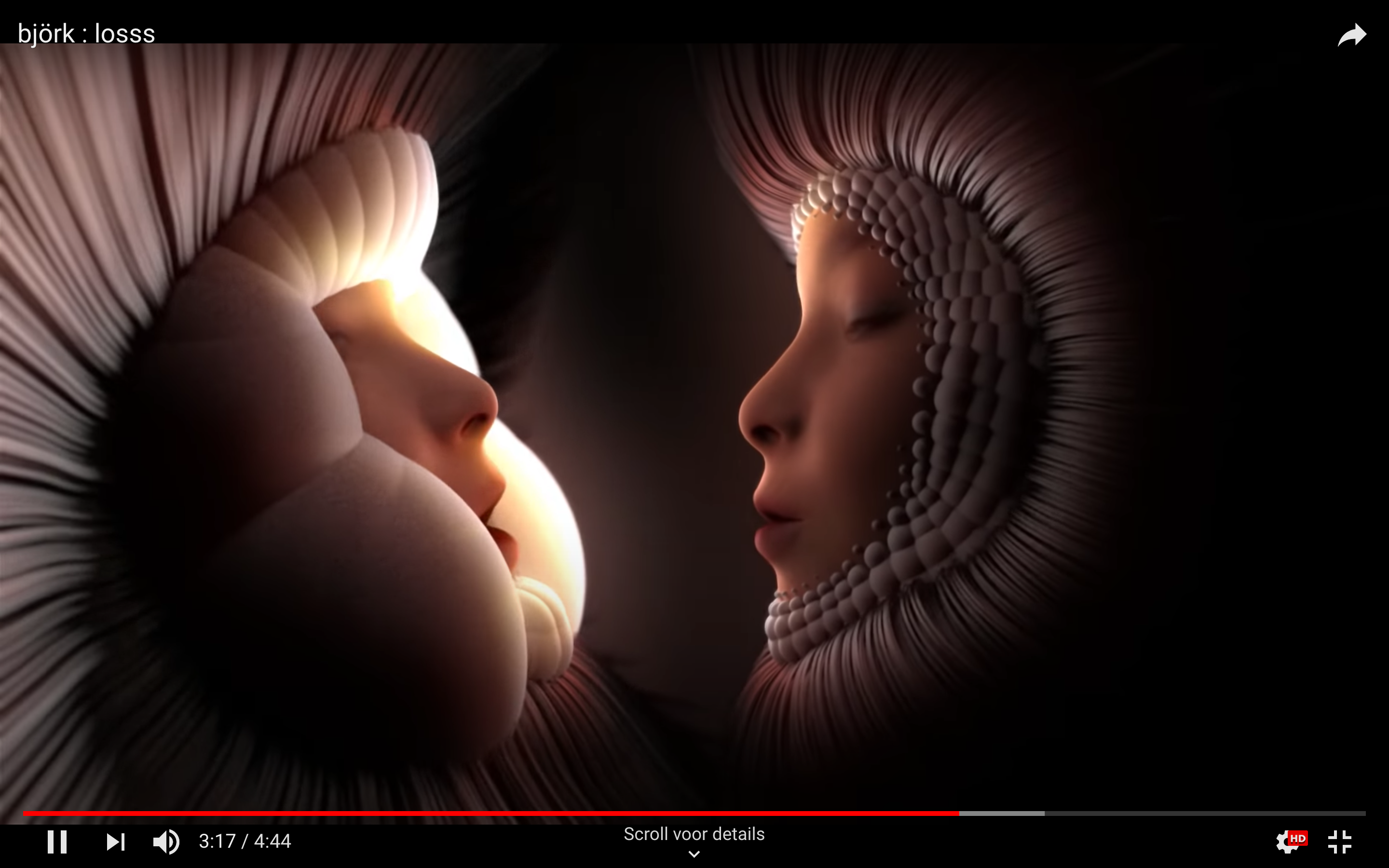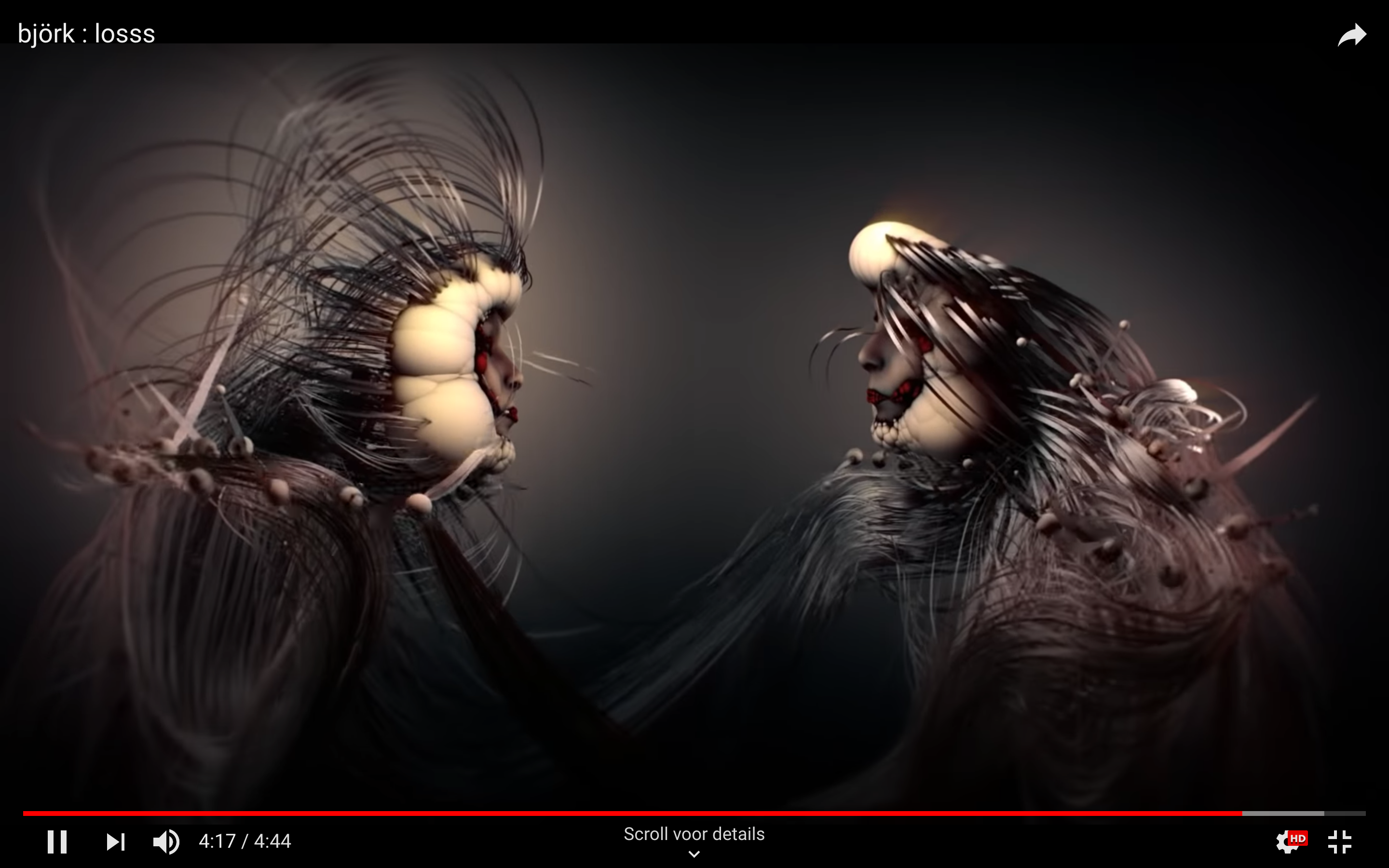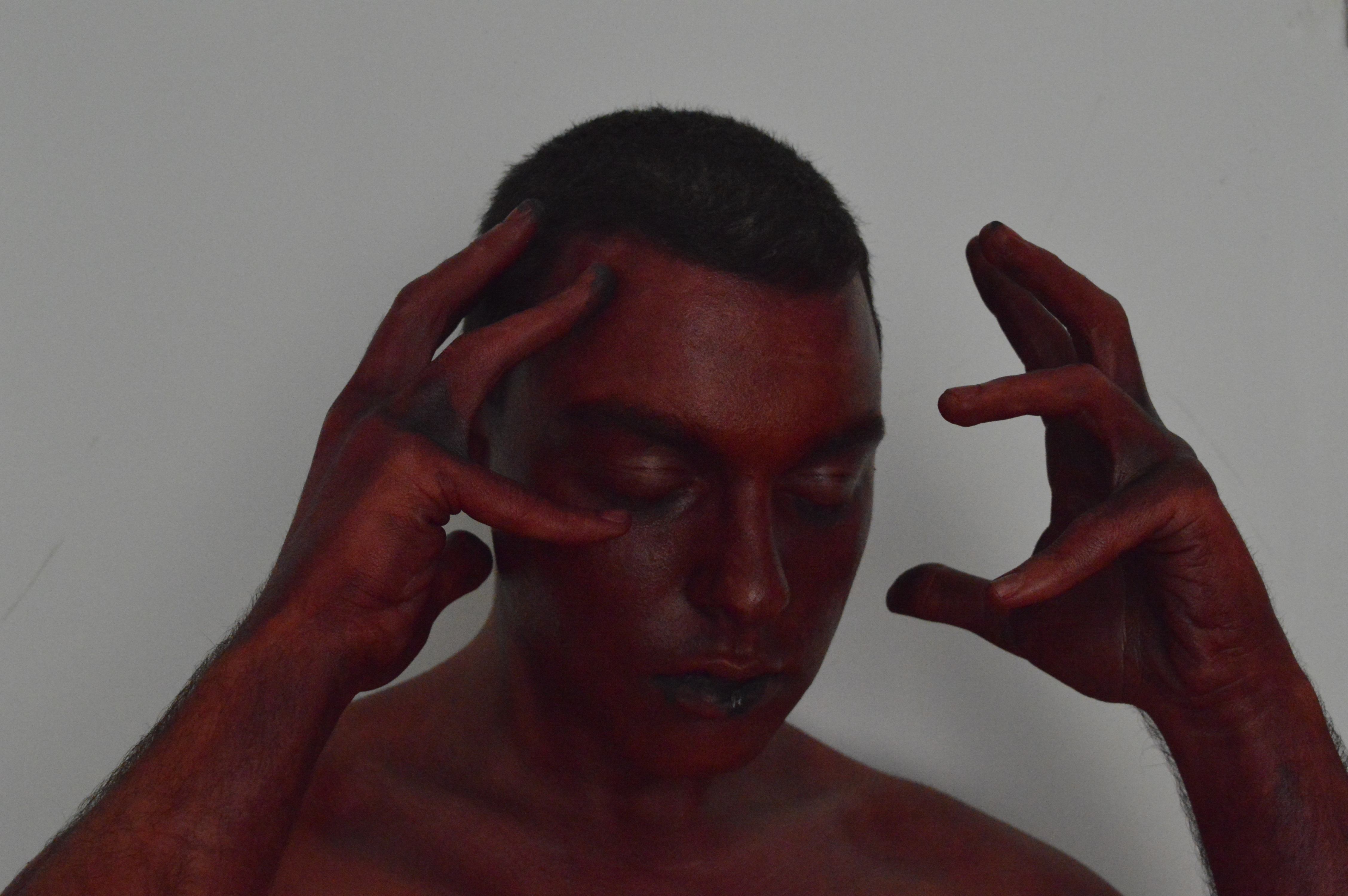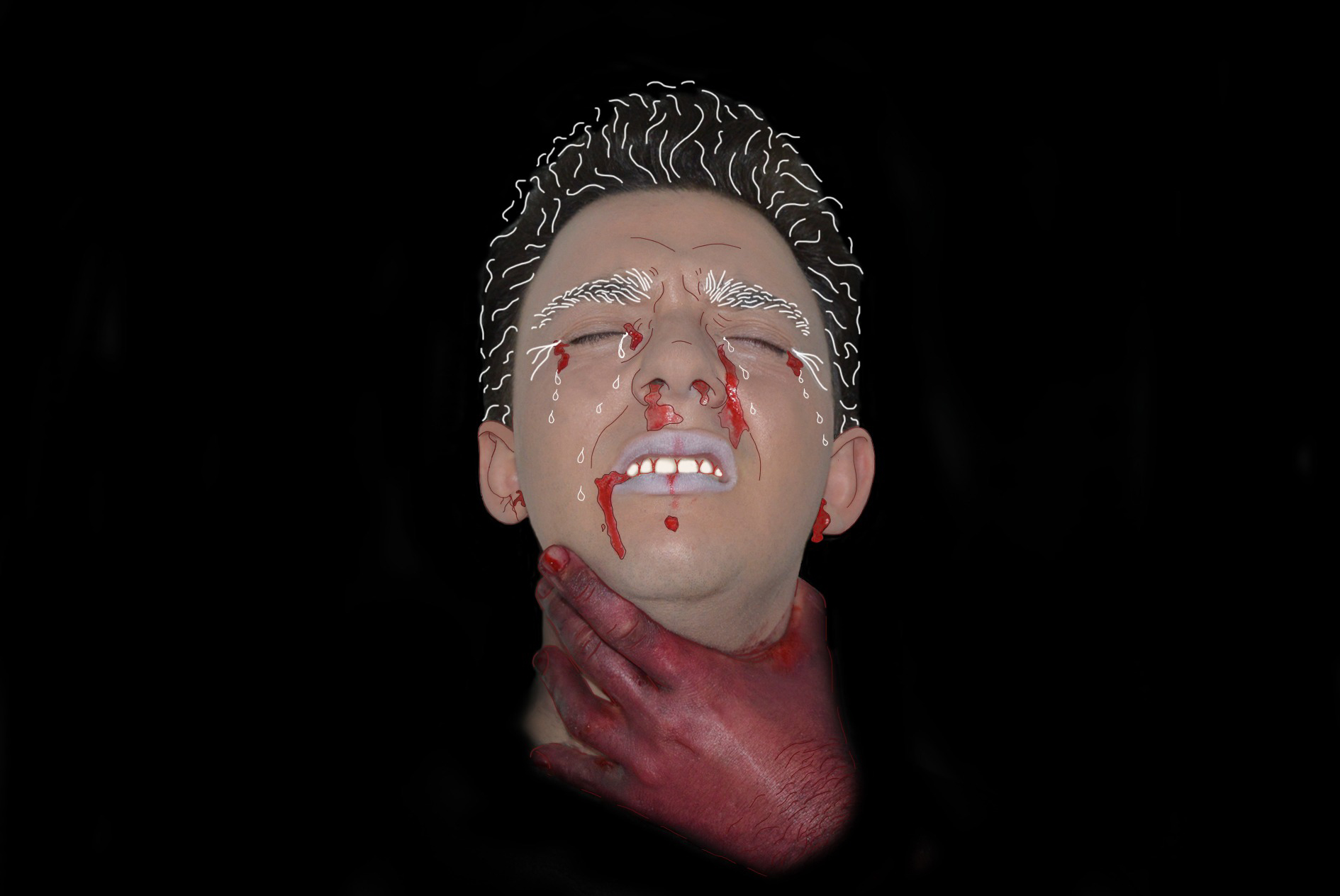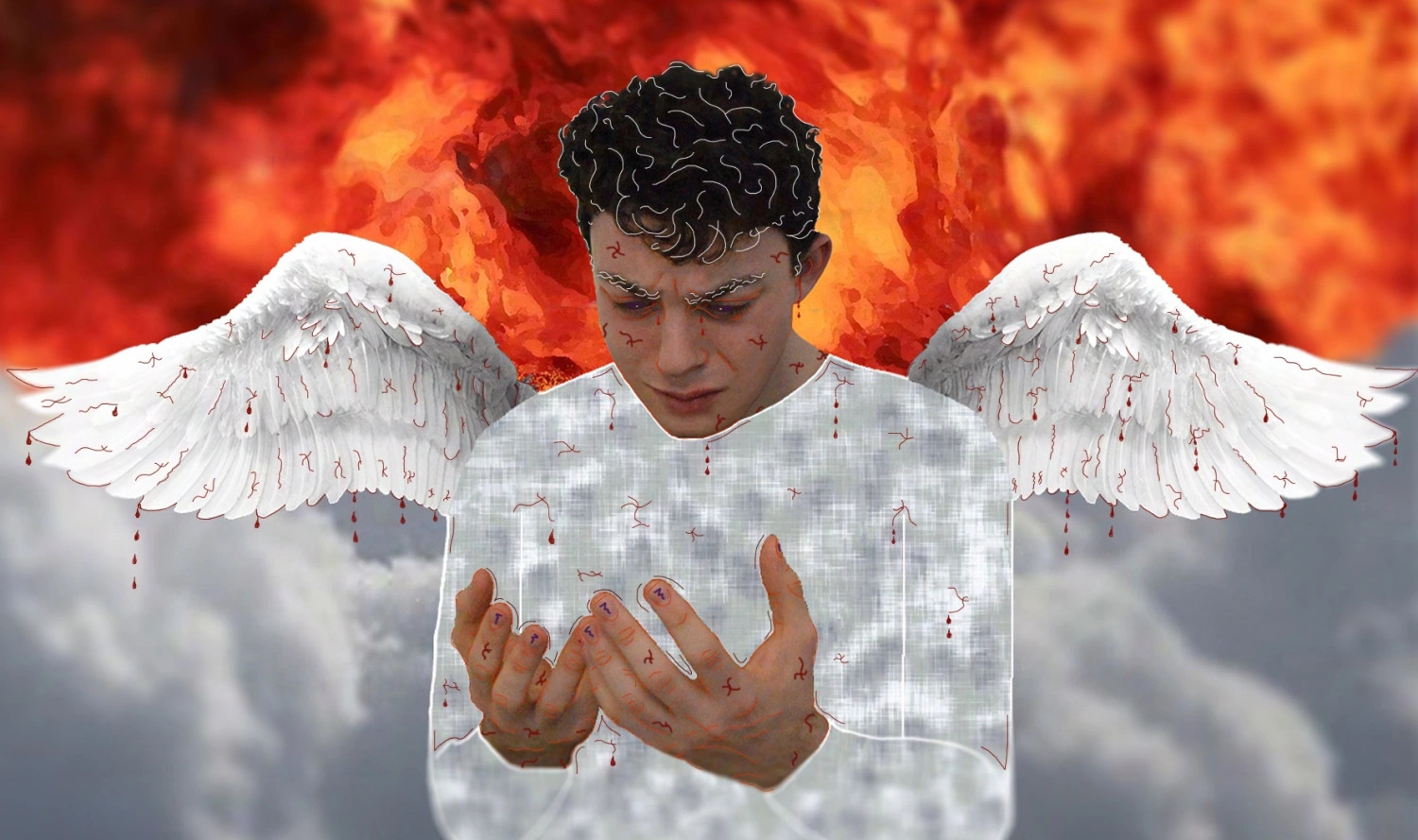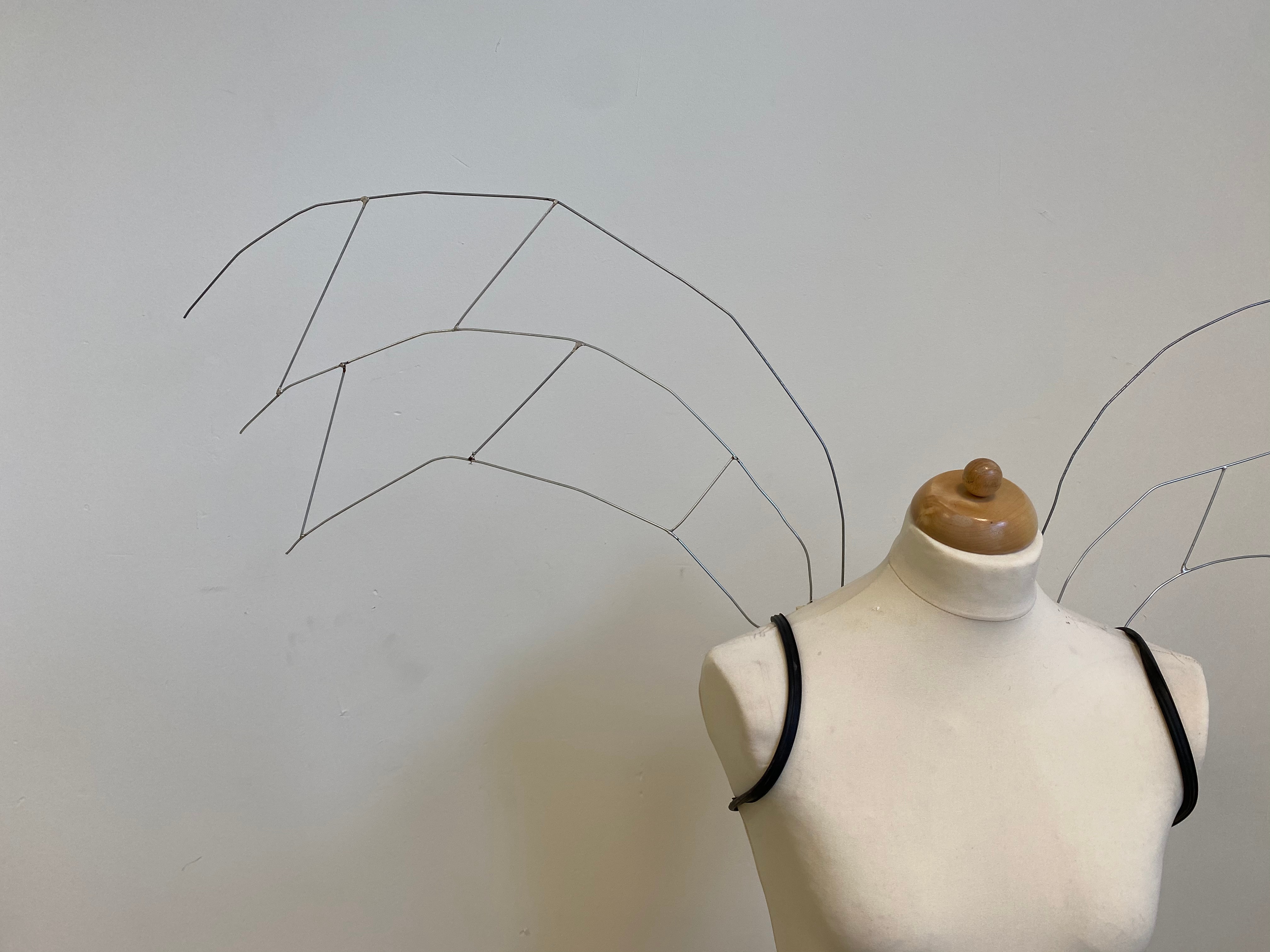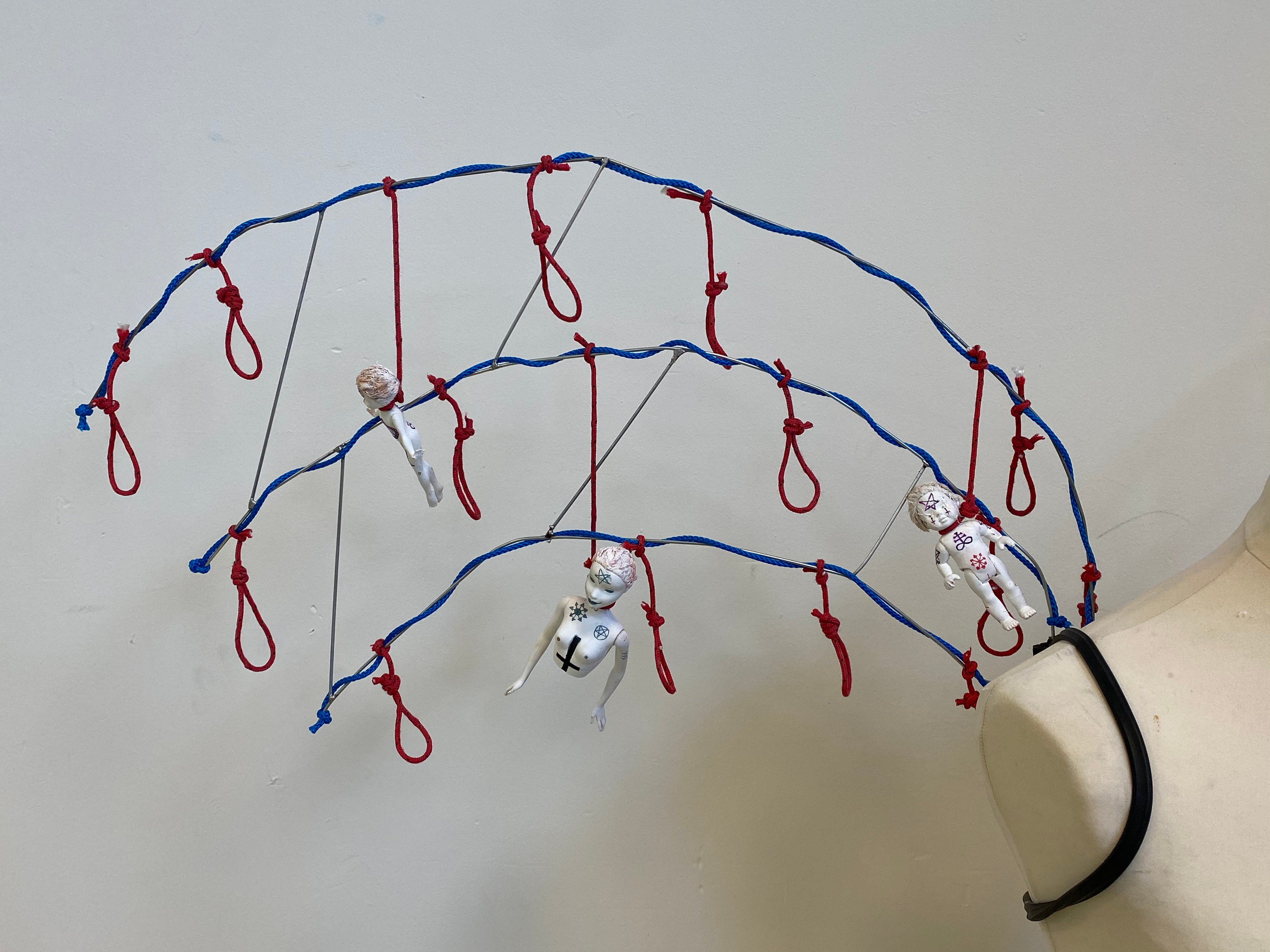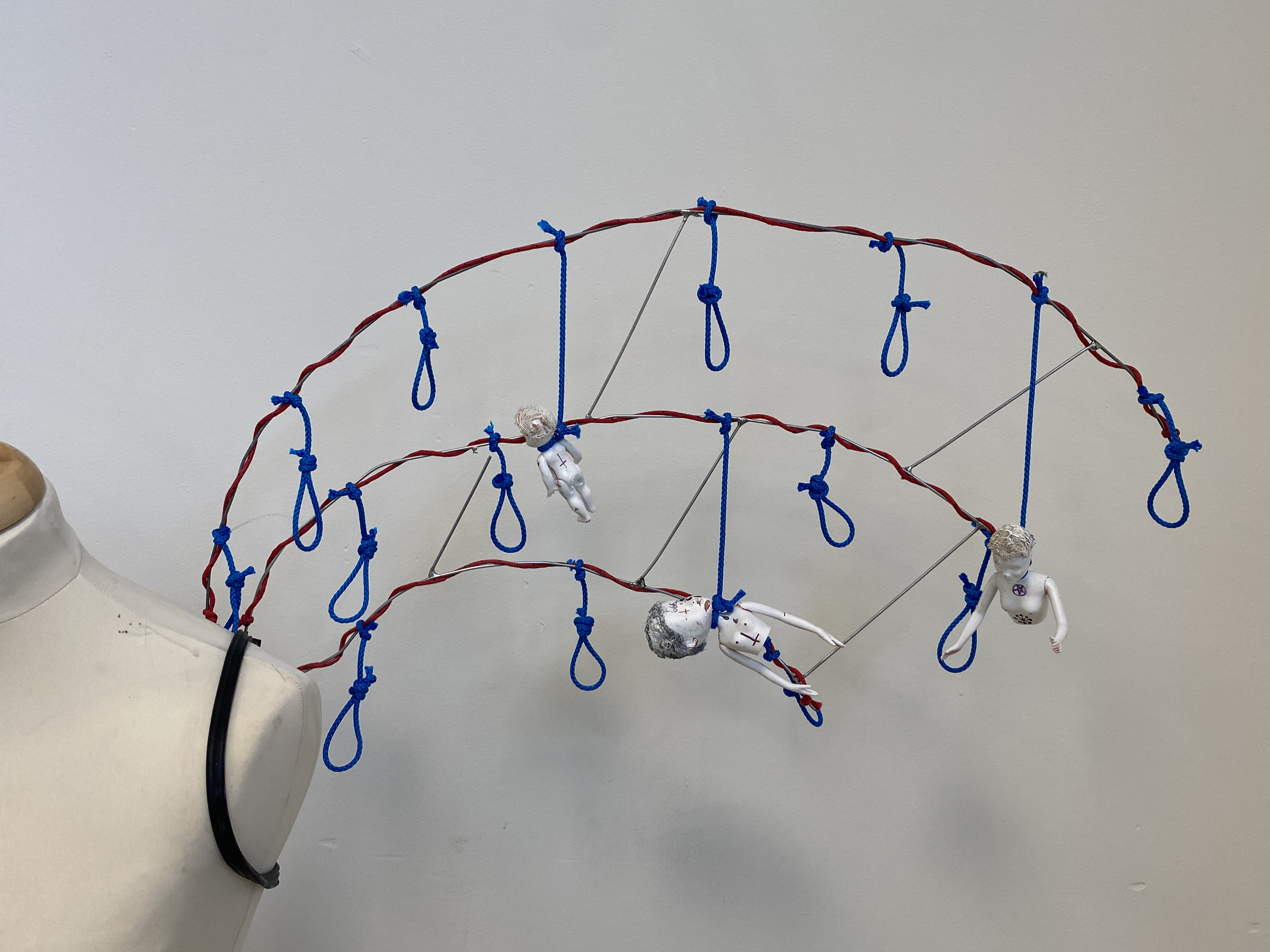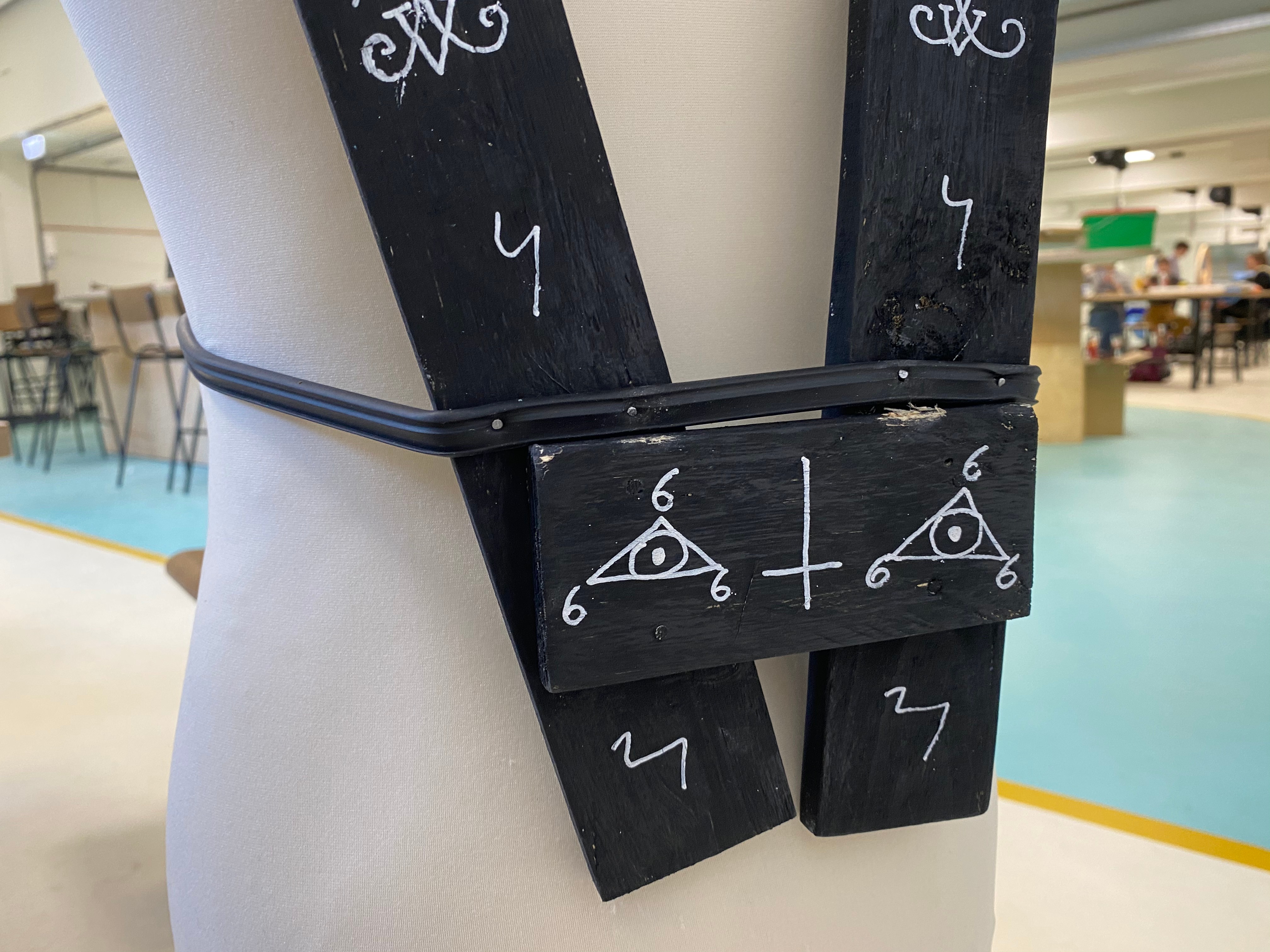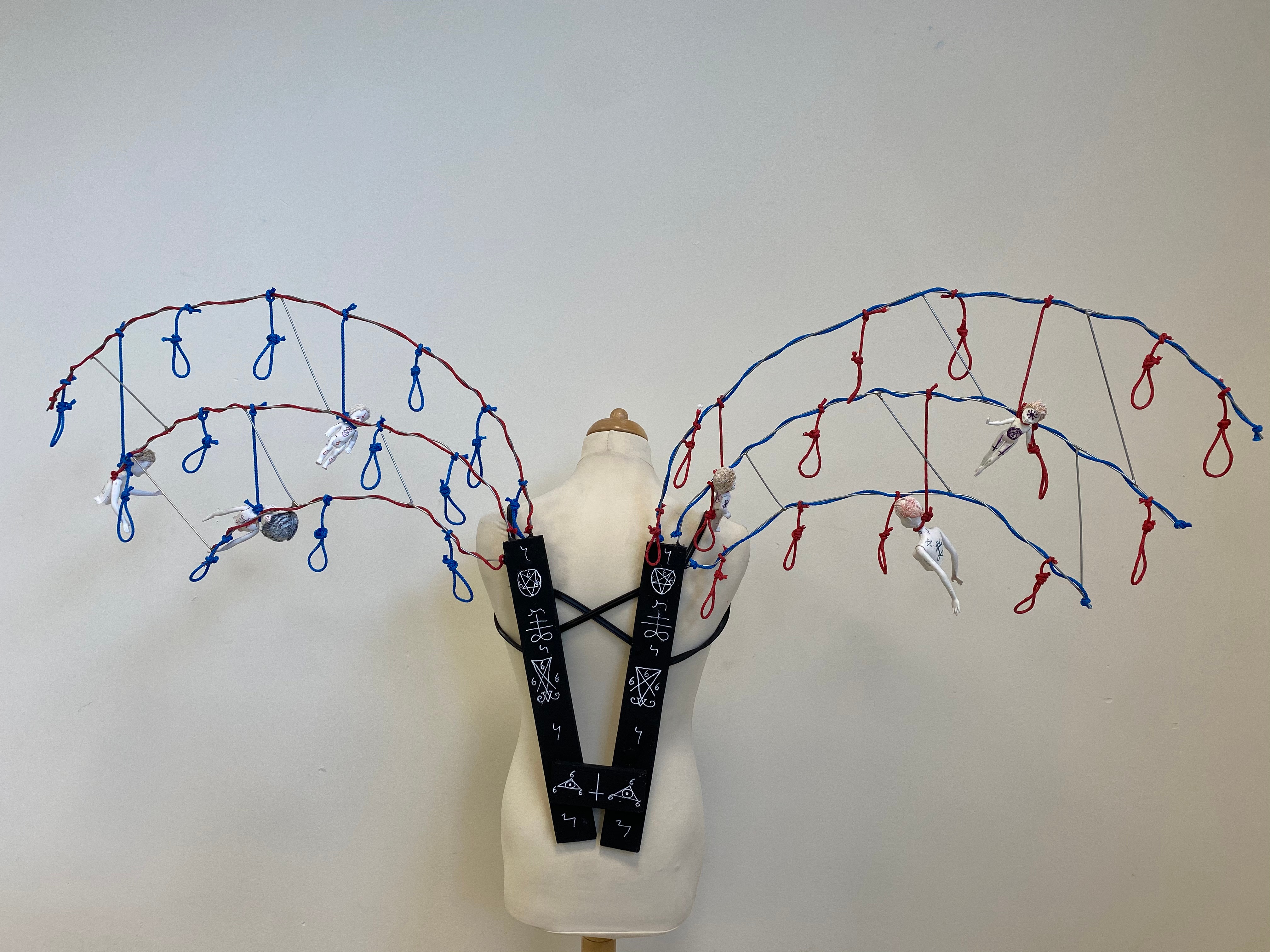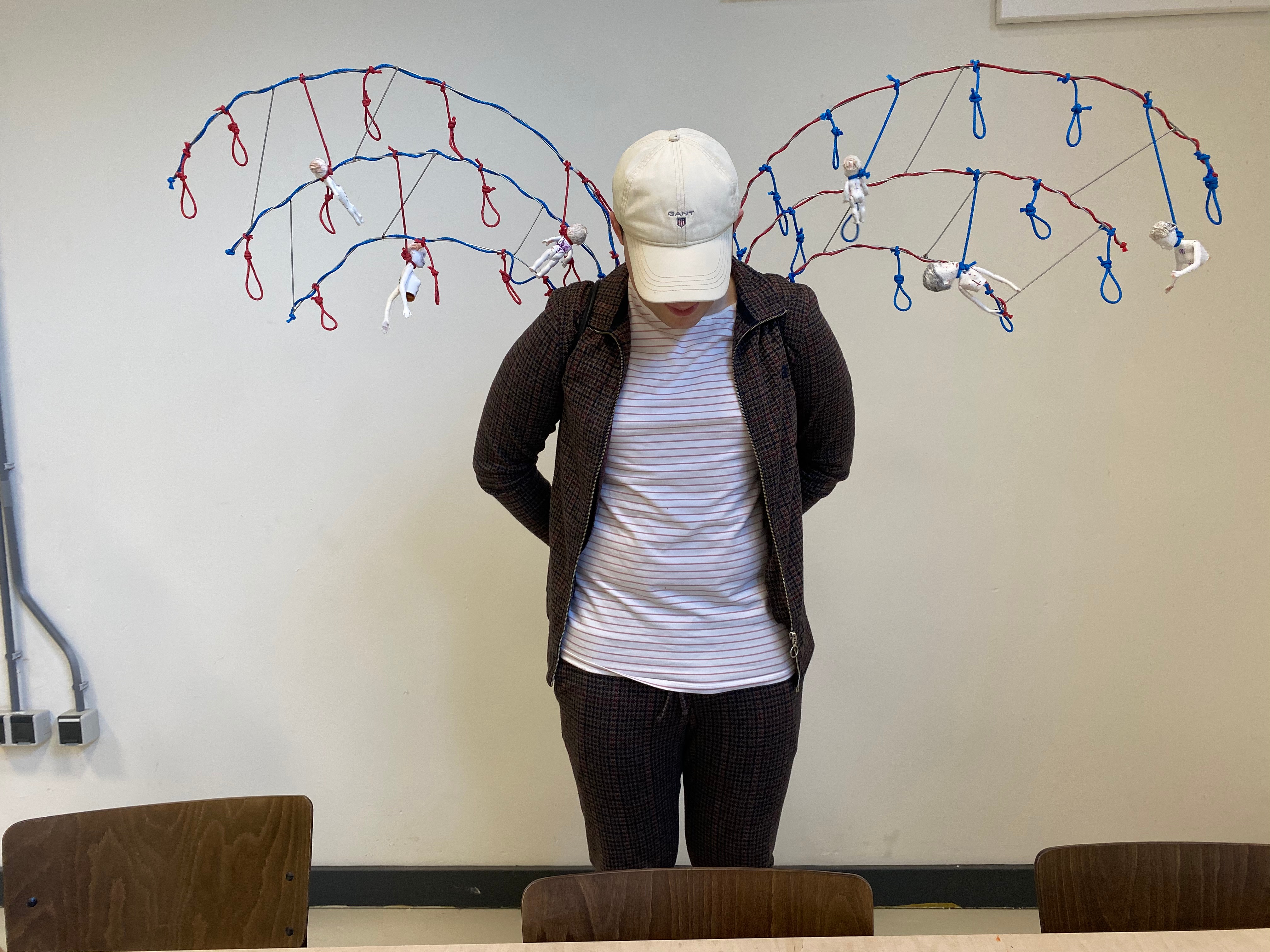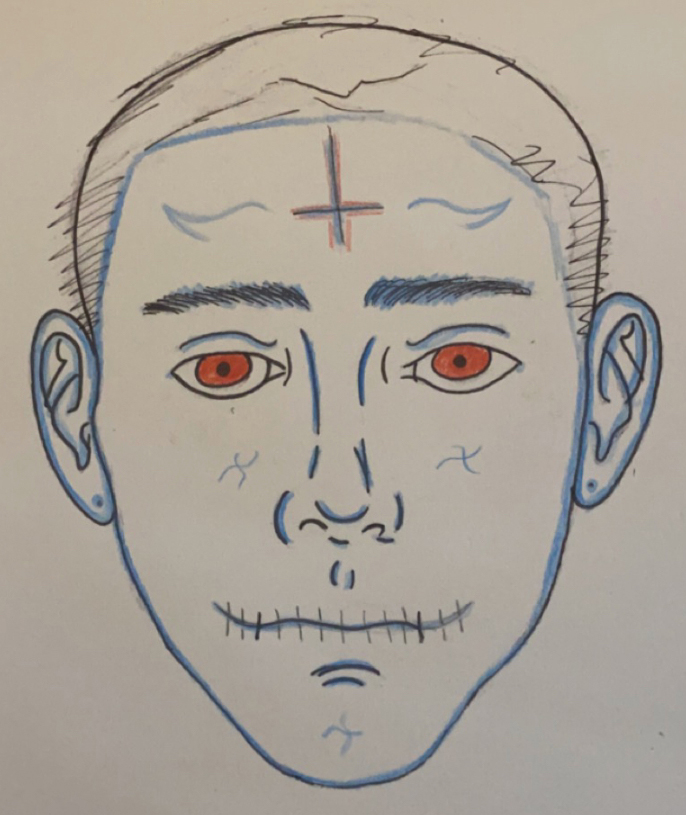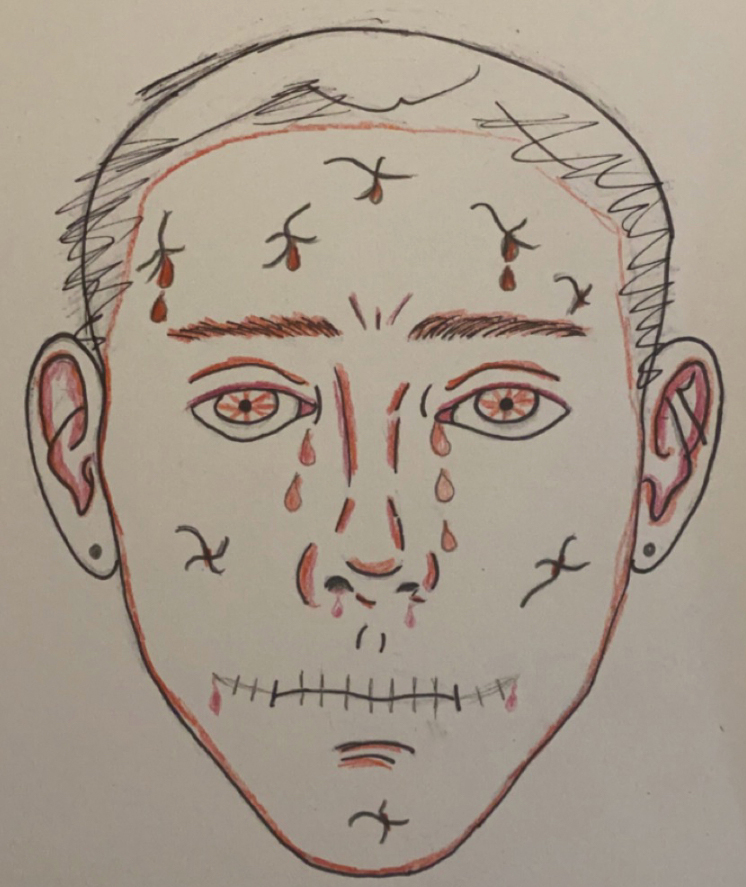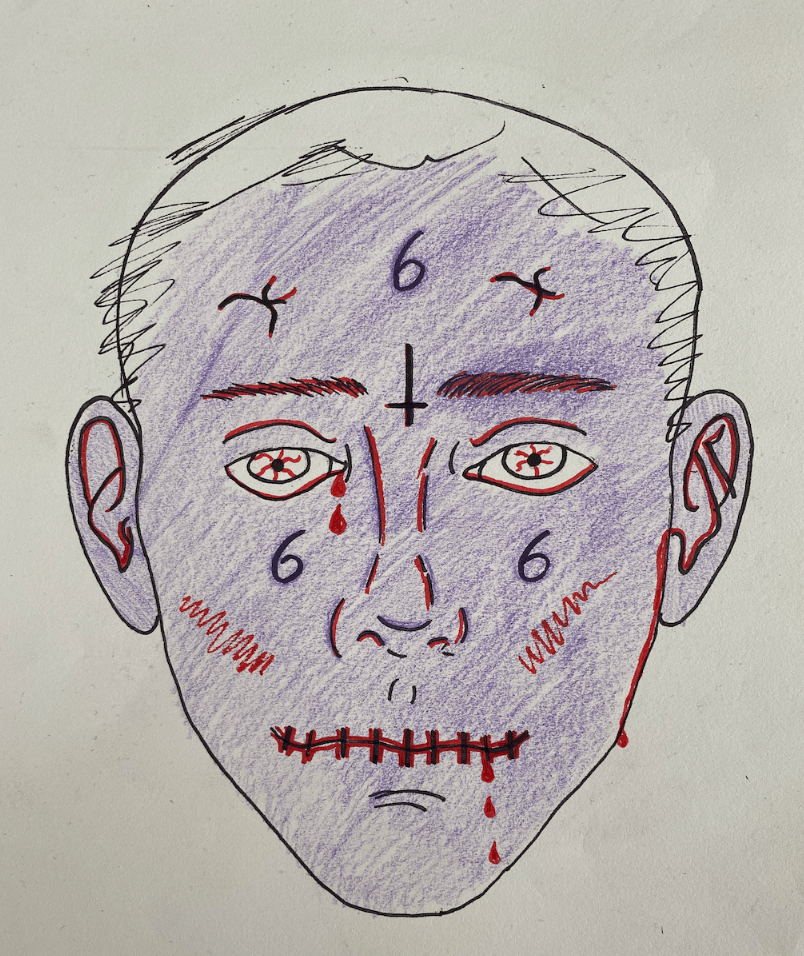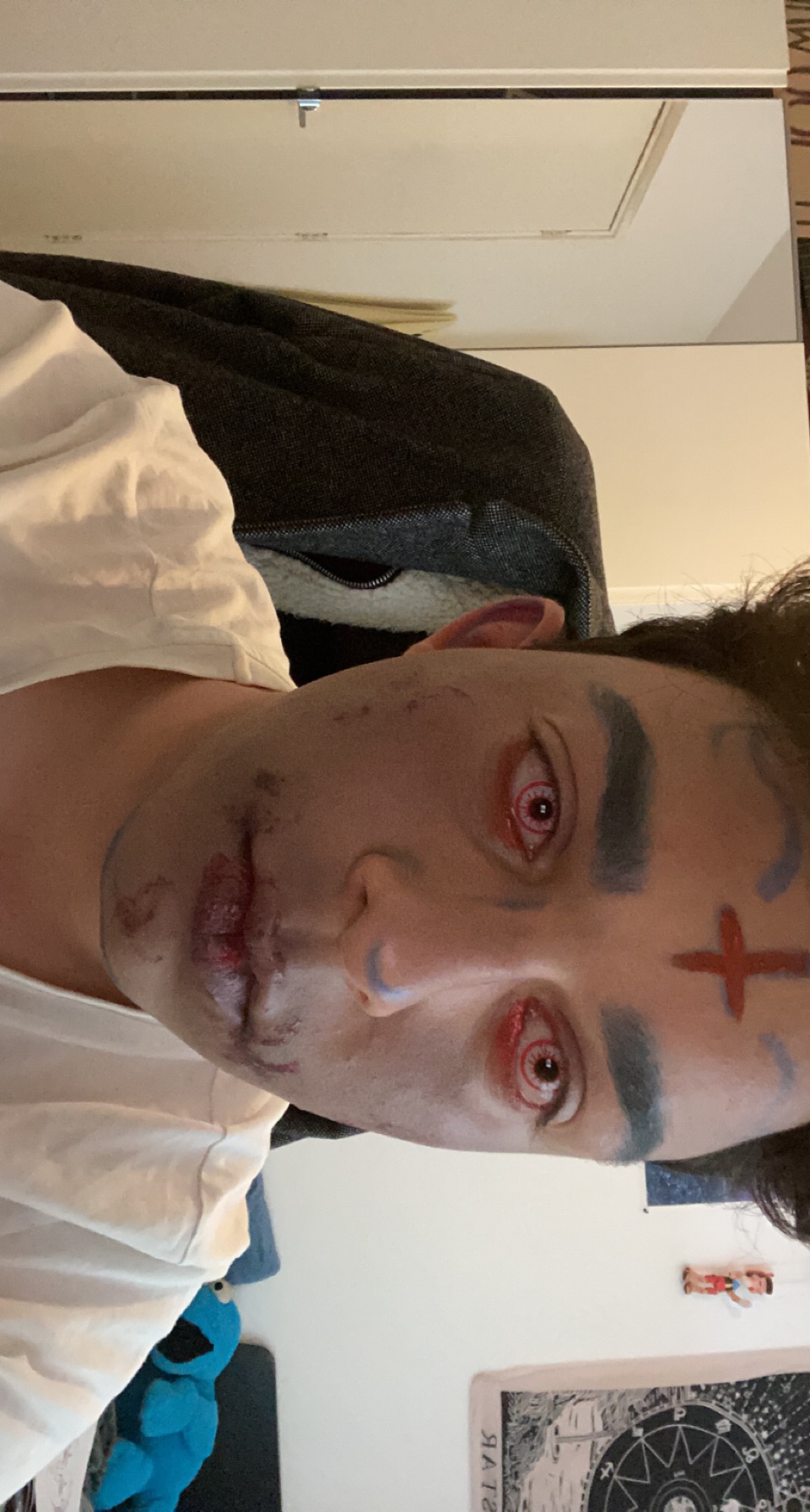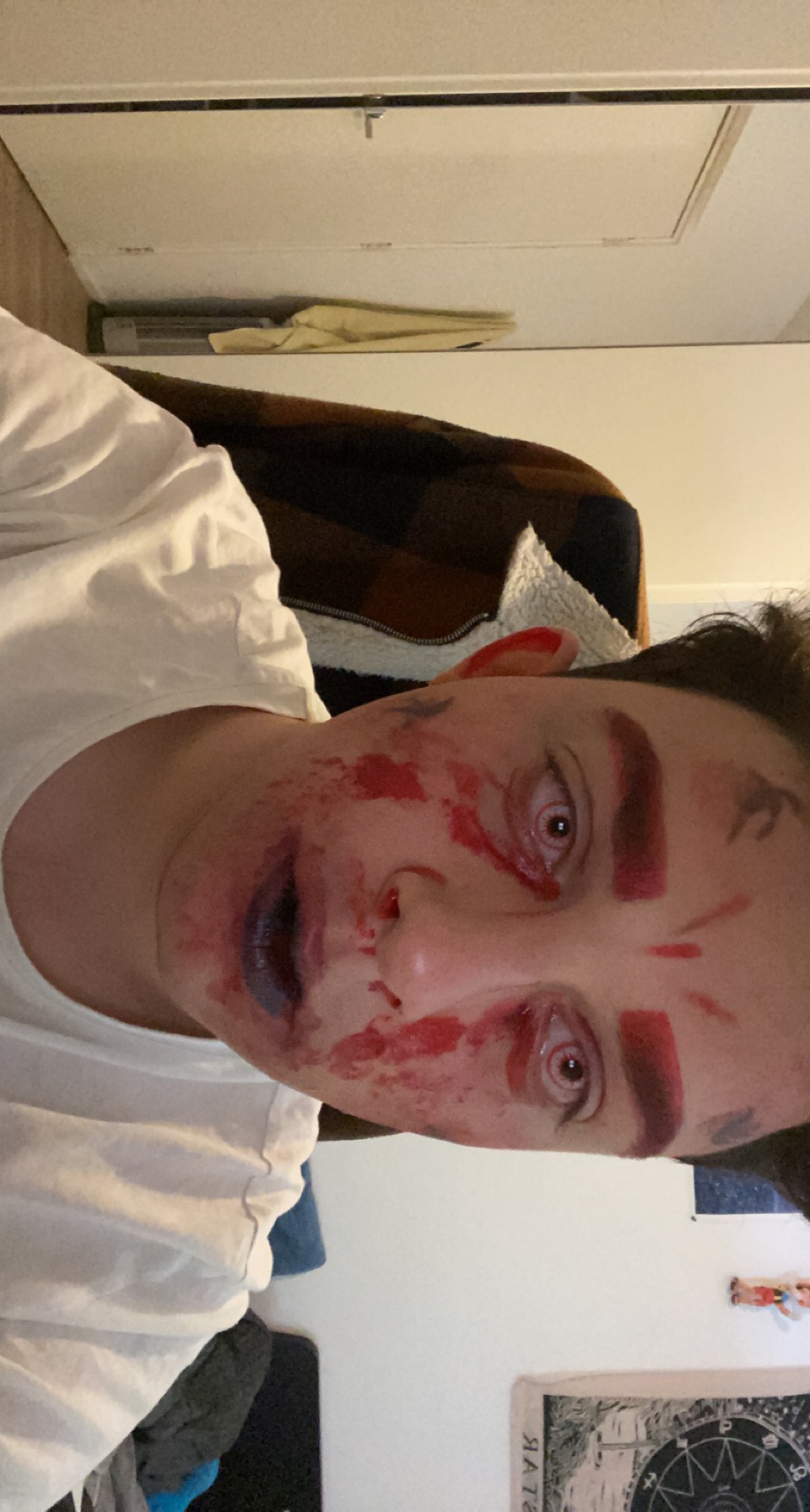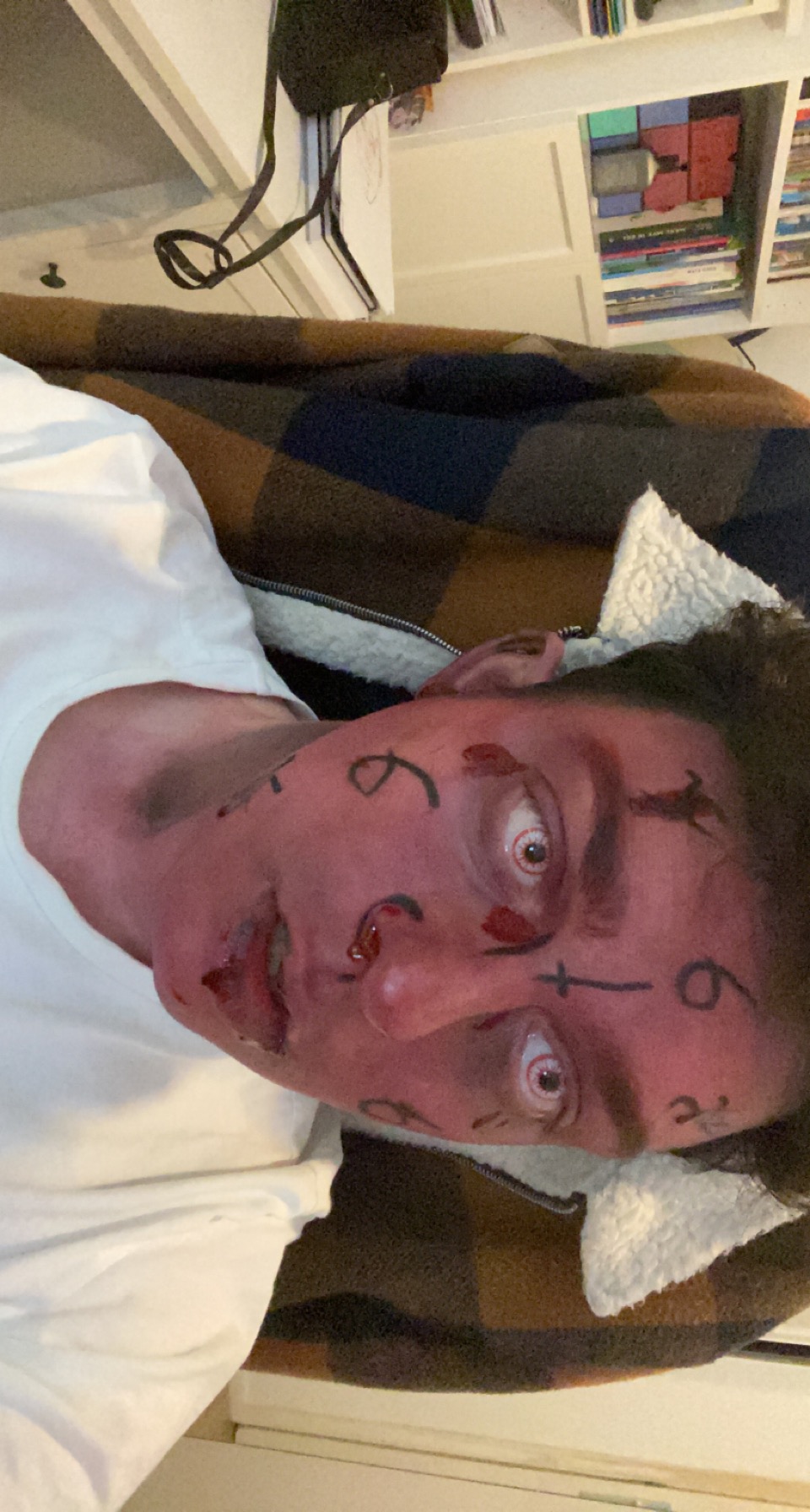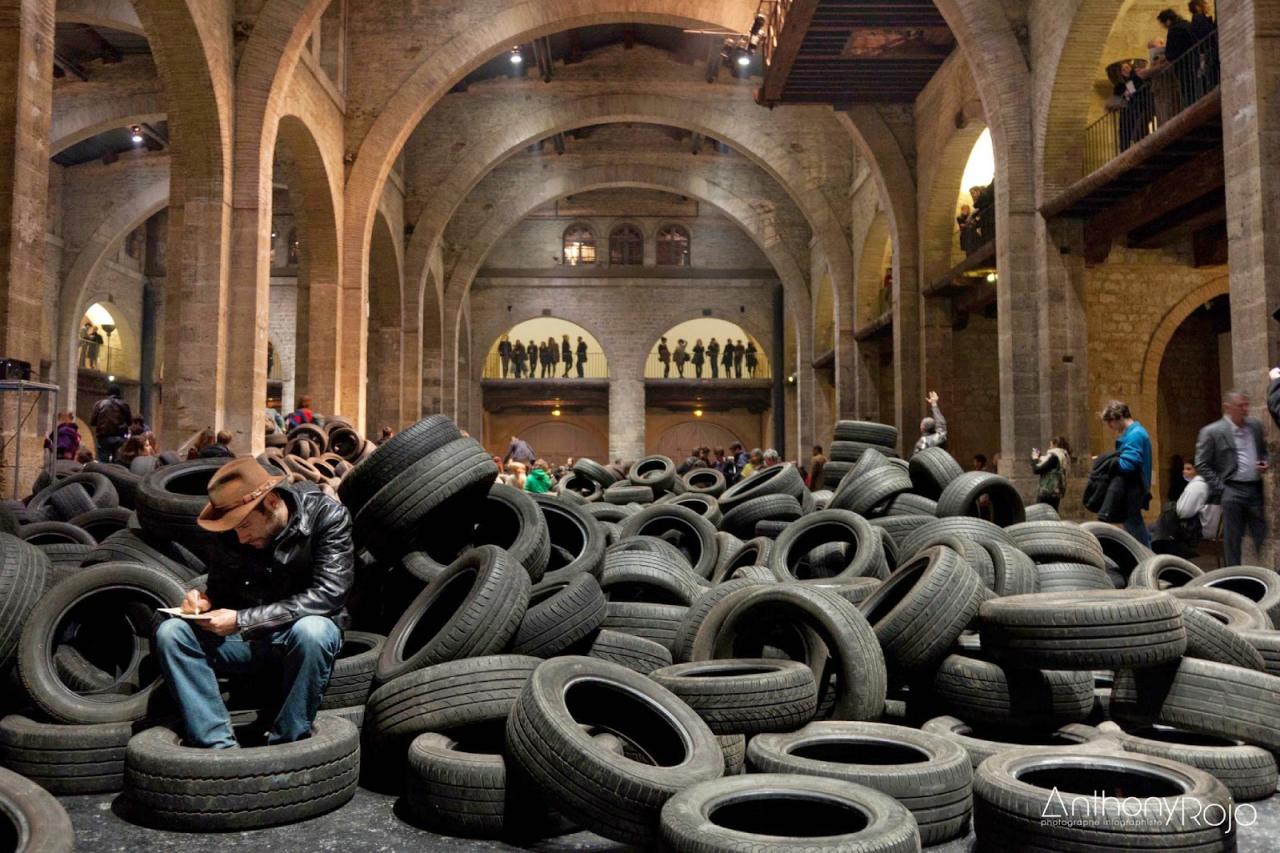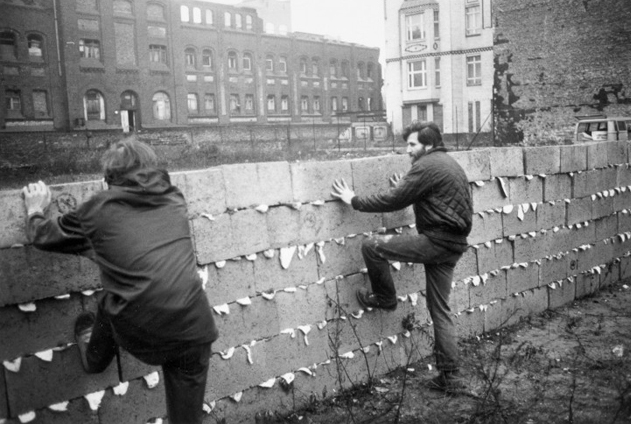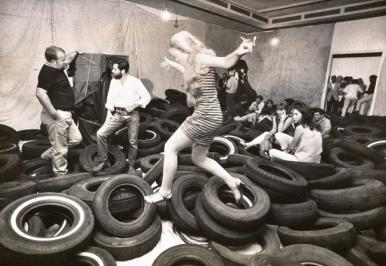Ninth Circle of Hell
A Captivating Art Performance
Step into the mesmerizing world of "Ninth Circle of Hell," an art project inspired by Marina Abramović's groundbreaking performances. This piece delves into the eternal struggle of a fallen angel, trapped by their fear of humanity – a creation of God. Through a captivating performance, experience the raw emotion and torment of their timeless confinement. Like Abramović's work, this project pushes artistic boundaries, inviting you to contemplate the interplay between fear, divinity, and the human soul.
Process
My research was initiated with Björk as the thematic centerpiece. Björk Guðmundsdóttir, an Icelandic singer and songwriter, gained prominence as the lead vocalist of the alternative rock band The Sugarcubes before embarking on a successful solo career under the name Björk since 1993. Renowned for her diverse musical interests, she explores a wide range of genres, including pop, jazz, alternative rock, electronic, and classical music.
A standout achievement in her discography is the album "Biophilia," which introduces a distinctive and captivating concept. Each track is intricately woven with themes from the natural world, resulting in a captivating and thought-provoking listening experience. One of the remarkable tracks, 'Virus,' delves into the intriguing dynamics of fatal relationships, particularly the interaction between a virus and a cell. Björk eloquently described this composition as a 'love story,' where the virus's intense bond with the cell ultimately leads to the latter's demise. This artistic exploration showcases Björk's ability to seamlessly merge intricate concepts with her unique musical style.
The album's thematic connections to nature are deliberately intertwined with elements that evoke a deliberate sense of otherworldliness, reminiscent of the surreal beauty of untouched wilderness. The fluid and graceful forms in her music allow for a broad interpretation, much like the imagery of a fallen angel that I have explored in my previous works. This narrative unfolds as the beloved angel descends from grace, transforming into Satan and finding himself trapped in the depths of hell's ninth circle, frozen in an eternal state. He becomes one with his profound thoughts, embracing his inherent nature. However, this liberation comes at a material cost as he willingly severs his divine wings, crafted by God. In this act of liberation, he attains freedom of thought but becomes irreversibly lost in the vast expanse of his own consciousness."
Angels and demons
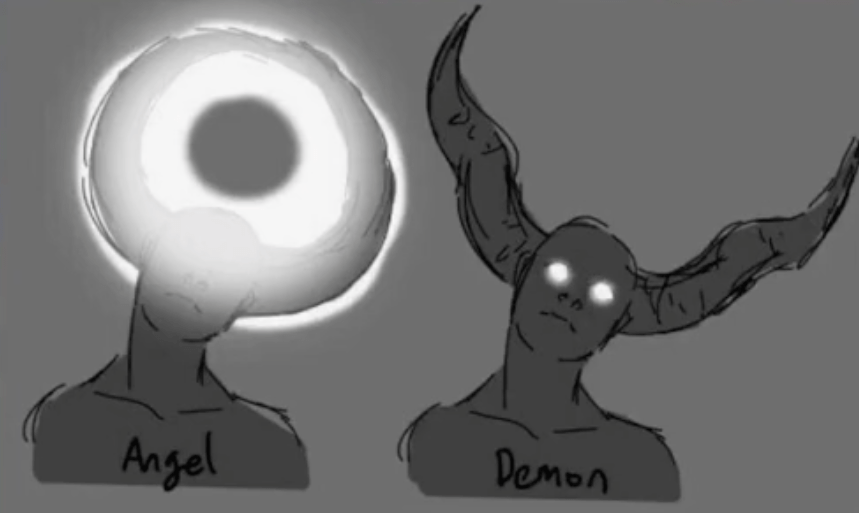
Behold a visual depiction portraying angels and demons. In my conception, angelic horns cascade and meld, giving rise to the traditional halo. This celestial ring envelops angels in a radiant glow, compelling them to rely upon divine guidance. When angels sever these halos, they undergo a metamorphosis into demons. These demons, intentionally crafting their horns into intricate, unconventional forms, thwart any reformation into halos. Discarding their halos grants demons acute perception, but severs their link to divine guidance. The luminous radiance they once contributed to the heavens becomes an inherent source, empowering demons with a mastery of fire, enabling them to navigate darkness.
This portrayal immediately underscores the richness of interpretation surrounding the devil. Whether fact or fable remains elusive, yet it unfurls the expanse for diverse understandings of the fallen angel. My research quest unfurls as: 'How do I envisage a fallen angel?' I will delve into existing narratives, symbols, and potential explanations, all within the context of my personal interpretation, detached from established dogmas.
What I have created so far with the fallen angel as a theme:
The fallen angel refers to a celestial being, typically an angel, who has rebelled against divine authority and has been cast out of heaven. This concept has been explored in various religious, mythological, and artistic traditions, often symbolizing themes of rebellion, temptation, and the struggle between good and evil. In art and literature, the fallen angel is a recurring motif, depicting the tragic downfall and existential conflict of a once-divine being.
The fallen angel, found in literature and pop culture, embodies moral decline and personal struggles, often due to choices or circumstances. It explores themes like redemption and human complexity, inspiring various interpretations in art, music, and film, reflecting our enduring fascination with good and evil's interplay in humanity.
What have others created?
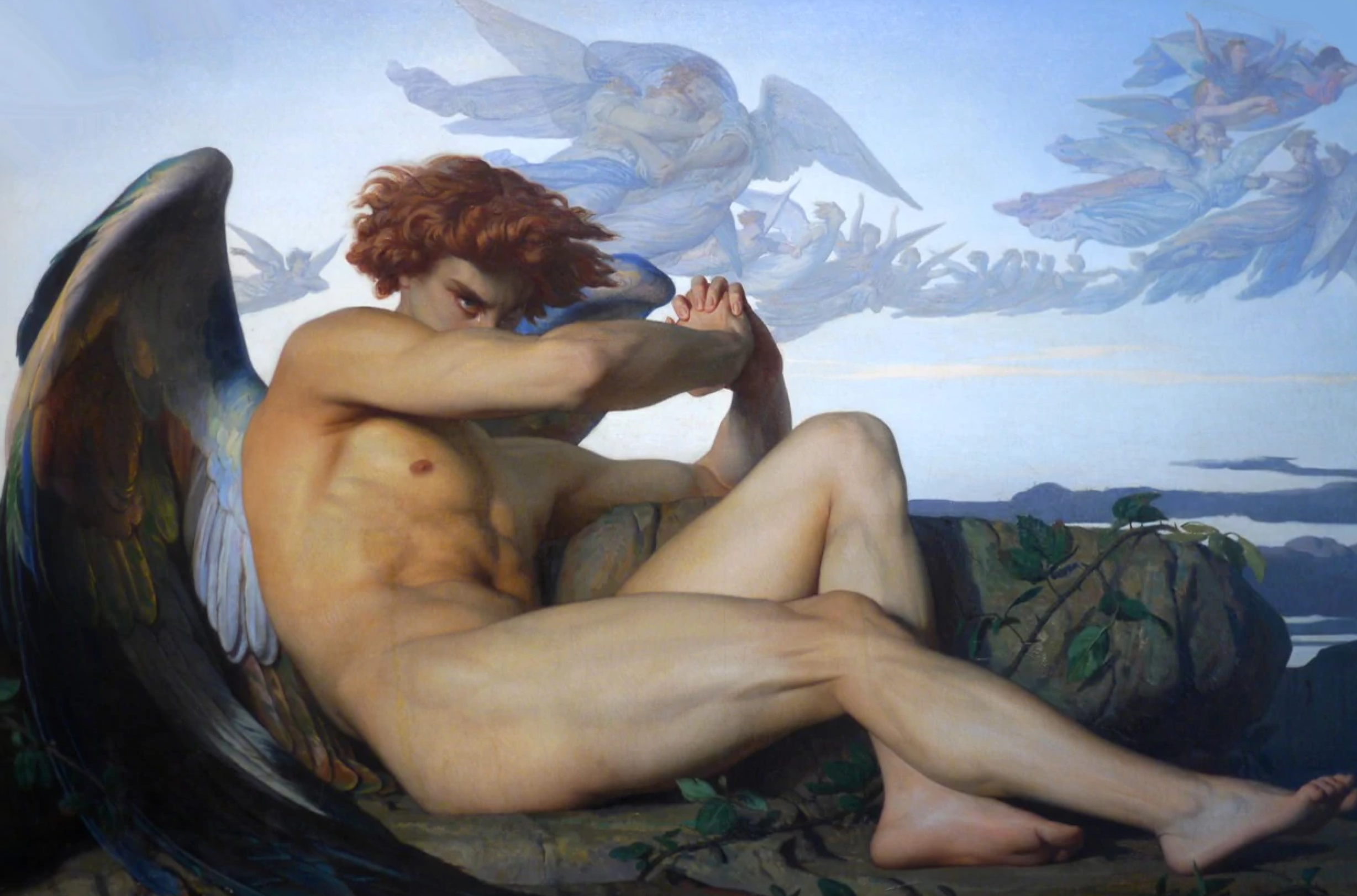
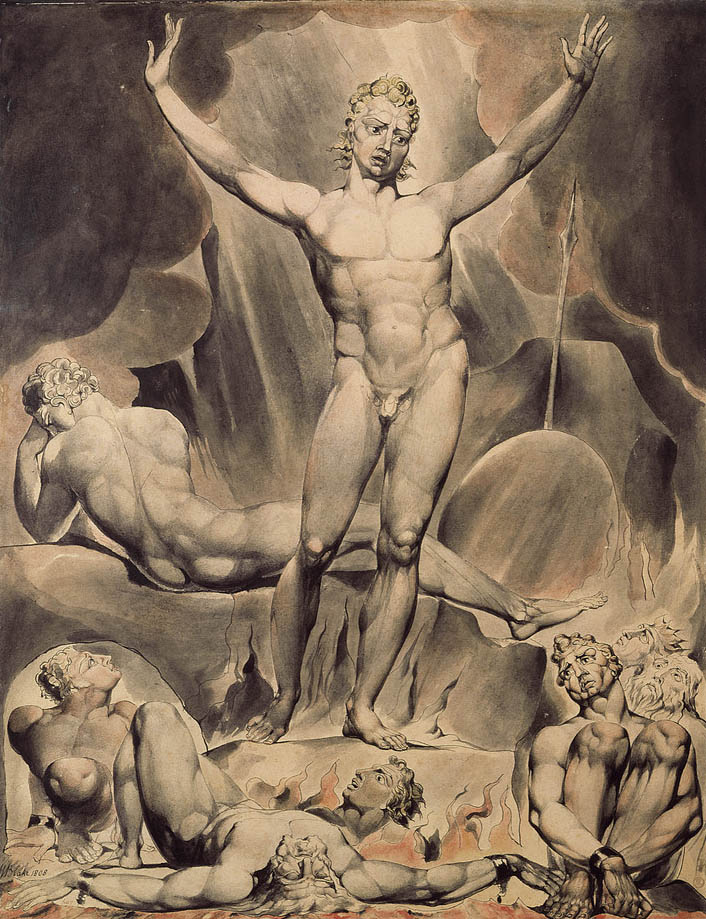
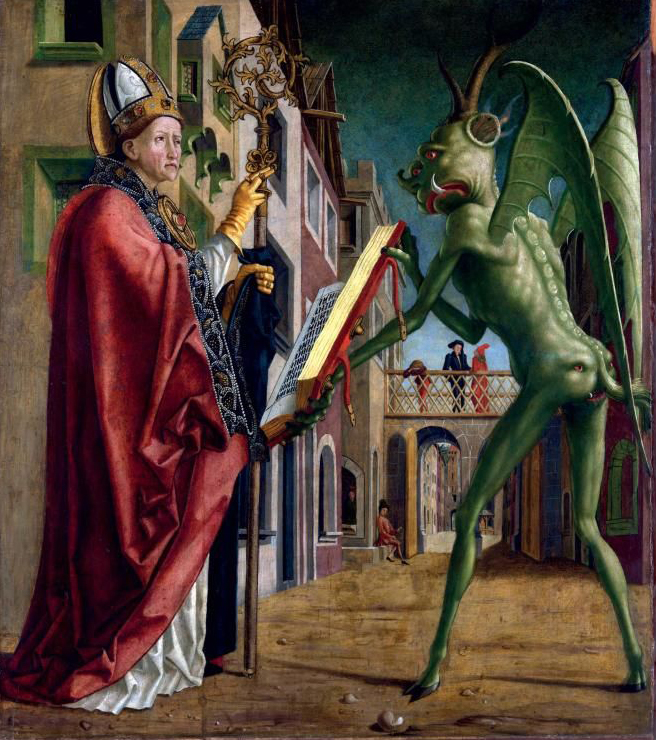
Dante Inferno (The Nine Circles of Hell)
Dante's Inferno is the first part of "The Divine Comedy," an epic poem written by Dante Alighieri in the 14th century. It describes the journey of Dante himself through the nine circles of Hell, guided by the Roman poet Virgil. Each circle represents a different sin and its corresponding punishment, becoming progressively more severe as Dante descends further into the depths of Hell. Here's a brief explanation of each circle:
1. Limbo: The first circle is inhabited by virtuous non-Christians and unbaptized individuals. They reside in a state of natural happiness but are denied entry to Heaven due to their lack of faith.
2. Lust: The second circle is for those who were consumed by their sensual desires. They are trapped in a never-ending tempest, symbolizing the restless nature of their passions.
3. Gluttony: In the third circle, the gluttonous souls are subjected to eternal rain and hail, lying in a putrid slush, mirroring their excessive indulgence in earthly pleasures.
4. Greed: The fourth circle punishes the avaricious and prodigal, who are condemned to push enormous boulders against each other in opposite directions, representing their relentless pursuit of wealth.
5. Wrath: This circle holds the souls of the wrathful, who are perpetually engaged in a muddy and violent river, embodying their destructive anger and resentment.
6. Heresy: The sixth circle contains heretics, condemned to lie in fiery tombs. This represents their rejection of divine truths.
7. Violence: The seventh circle is divided into three rings, each punishing a specific form of violence. The violent against others are submerged in a river of boiling blood, the violent against themselves become thorny trees, and the violent against God, nature, and art are chased by ferocious beasts.
8. Fraud: The eighth circle has ten pouches, each punishing a different form of fraud. The sinners endure various torments, reflecting their deceitful actions.
9. Treachery: The ninth and final circle is frozen in ice. It is divided into four rounds, each for different forms of treachery. The most notorious traitors, like Judas Iscariot and Brutus, are trapped in the central pit, being gnawed upon by Lucifer.
Dante's Inferno is a vivid allegory that reflects Dante's medieval worldview, theological beliefs, and social commentary, using imaginative and symbolic descriptions to explore the consequences of sin.
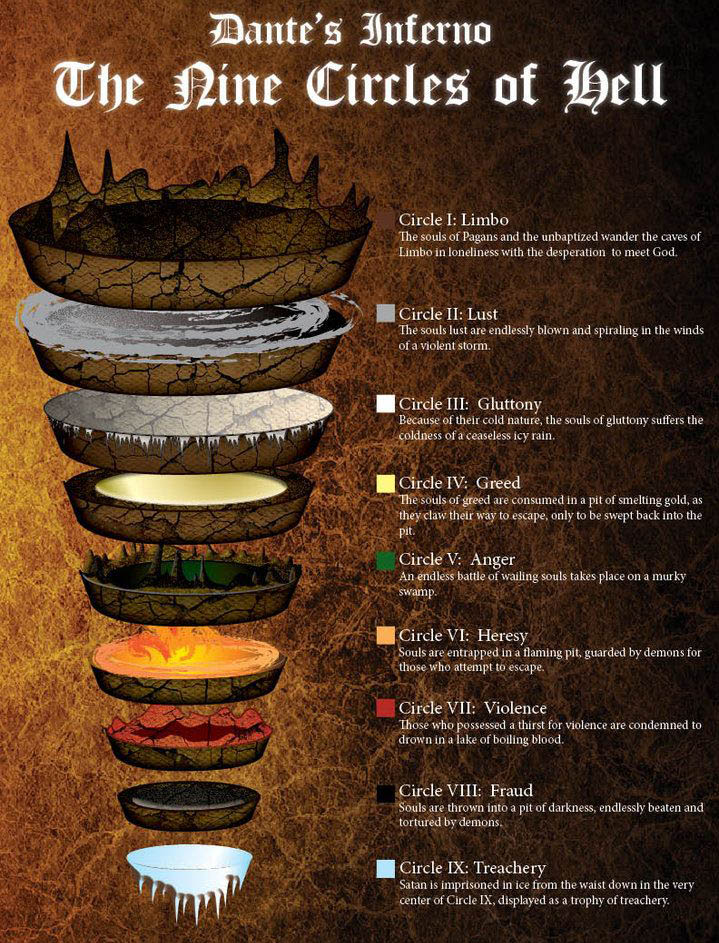
In the execution, I will consider the following aspects:
For my final school project, I find it intriguing to perform as a fallen angel. Having worked extensively with video, I am skilled in acting as well. It won't be a scripted piece, but a silent performance rooted in my deepest emotions. I aim to offer a wholly unique interpretation of a fallen angel while staying true to myself. It also delves into an inner conflict. Raised in a religious environment, I always feared the unexplainable, but as I delved into understanding the inexplicable around age sixteen, I explored many spiritual activities that explain religious and earthly matters. In this sense, I'm like the fallen angel who, according to religious texts, has turned away from God. Just as one should not delve into spiritual matters since they pertain to divine, not human, affairs.
Over the years, I've honed my skills in makeup artistry and want to transform myself into a fallen angel. To do this, I need to interpret the devil, considering the various associations. For now, I can't definitively decide, but I intend to incorporate symbols. Finding a balance between the devil's stereotype and the devil as a location mimicry.
The devil is symbolized as a fallen angel. To create wings, I'll mimic the graceful and free forms seen in Björk's music videos. My attire will be predominantly black to draw focus to the wings, which will include elements symbolizing death and destruction. If the performance can't proceed due to COVID-19, my plan is to display the wings on a mannequin with sketches of my makeup alongside. This offers viewers a chance to assemble the pieces and visualize a fallen angel.
My performance will unfold in what can be called the ninth circle of hell. Satan, having been banished, resides there, frozen up to his hips. While I won't literally be frozen, I'll be immersed in my thoughts. I'll be in an isolated space, filtering out my surroundings, fully focused on my emotions. Whether those emotions involve crying, laughing, or otherwise, I'll decide in the moment. Achieving this requires breathing and concentration exercises, enabling me to detach from the physical space and merge with the devil. I aim to move the audience, officially concluding my concept of the falling angel over the years.
I'll utilize materials reflecting the graceful and free forms of nature, capturing the essence of the fallen angel's "unrealistic" shape. For the wings, I'll need to find suitable material; possibly rope or metal, which I'll test. Rope is pliable, allowing for various forms, while metal is malleable and a natural element.
What does religion say about Satan?
Satan wasn't created as an adversary, for his creation was also good.
In Ezek. 28:12-17, Satan is described, personified as the king of Tyre.
1. Satan is described as: perfect in appearance, full of wisdom, and completely beautiful (verse 12).
2. He was in Eden, God's garden (verse 13).
3. He was a protecting cherub (verse 14).
4. He was on God's holy mountain and walked among blazing stones (verse 14).
5. He was blameless in his conduct (verse 15).
6. He became proud because of his beauty (verse 17).
7. Thus, God cast him down to the earth (verse 17).
1 Tim. 3:6 speaks of Satan's crime of becoming inflated with pride, which happened when he was converted. Satan became proud of his wisdom and beauty, leading to his fall under God's judgment.
In Isaiah 14:14, we see his desire to be equal to the Most High, and in Ezek. 28:17, his pride led to the destruction of wisdom. Satan did not take his rightful place before God. His pride led him to want to be like God, a sinful and foolish notion. His rebellion dragged countless angels down with him.
To our understanding, it's incomprehensible that God allowed Satan, after his fall, to lead humans into sin and apostasy (Gen. 3:1-5), and that he still has access to heavenly realms (Job 1:6), where he remains the accuser of believers (Rev. 12:10). From passages like Luke 8:31, we know fallen angels can dwell on Earth.
In 2 Cor. 11:14, God's Spirit reveals that Satan masquerades as "an angel of light." This has been remarkably effective in spiritualism and theosophy. As an "angel of light," Satan devours his victims by the thousands. In the book of Revelation, we witness Satan's immense power, but also his downfall, as he's cast into the lake of fire and brimstone (Rev. 20:10), along with the beast and the false prophet (Rev. 19:20).
I also noticed that our image of the devil, influenced by Abrahamic religions, bears striking resemblance to the nature deity Pan. For pagans, followers of nature-based religions, Pan is a mighty god—the patron of wilderness, shepherds, livestock, and animal instinct. As Christianity spread across Europe, especially focusing on nature deities, these deities were "satanized." The Catholic Church even co-opted pagan holidays, converting them into Christian celebrations, making conversion "easier." Consider Christmas, for instance. Jesus Christ was not born in winter but in spring. During the so-called "Christmas," pagans celebrated a winter festival in honor of nature deities. This festival, Yule, was "satanized" to the point that those who celebrate it today are labeled witches. Witches were essentially people attuned to Mother Nature, seeking to explain natural phenomena. The Catholic Church "satanized" this too.
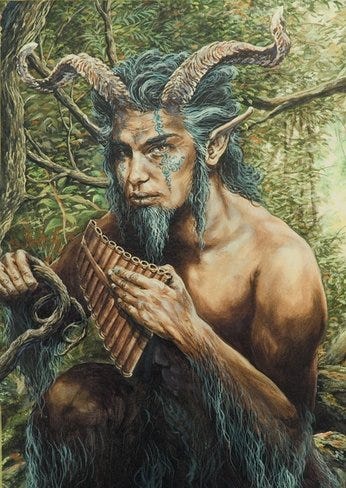
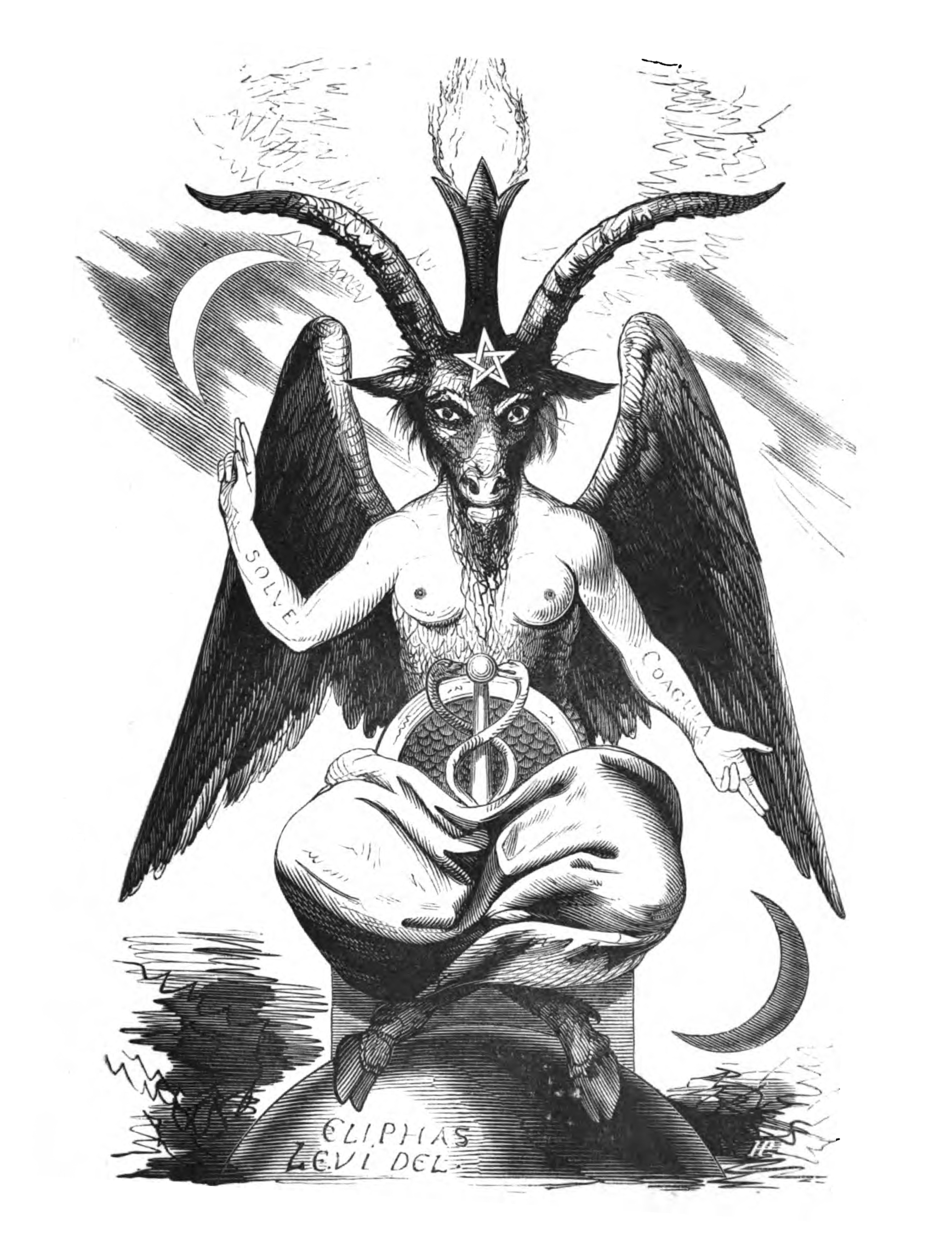
Pan, a figure from Greek mythology, symbolizes untamed nature with his half-human, half-goat form. Baphomet, an occult symbol with a goat-like appearance, holds dualistic meaning, representing opposites and spiritual connection. The comparison between Pan and Baphomet stems from their shared imagery, bridging natural and supernatural realms. This association has led to Baphomet being linked to demonic or satanic imagery in popular culture, highlighting how symbols evolve and convey varied interpretations.

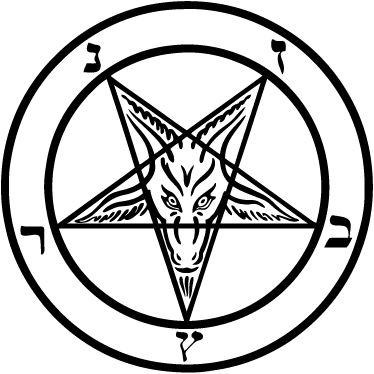
The Wiccan symbol embodies the harmony and interdependence of nature's fundamental elements: water, fire, earth, air, and the realm of spirits.
Conversely, the Satan symbol portrays the deity Pan in a distorted representation, frequently depicted in an inverted form and accompanied by inscriptions in Hebrew script. Stories and narratives surrounding Satan trace back to the Old Testament, a cornerstone of Jewish sacred texts known as the Tenach. The use of the Hebrew language was believed to facilitate a connection with Satan, an idea that unfortunately led to the unjust demonization of Jewish individuals by the Catholic Church.
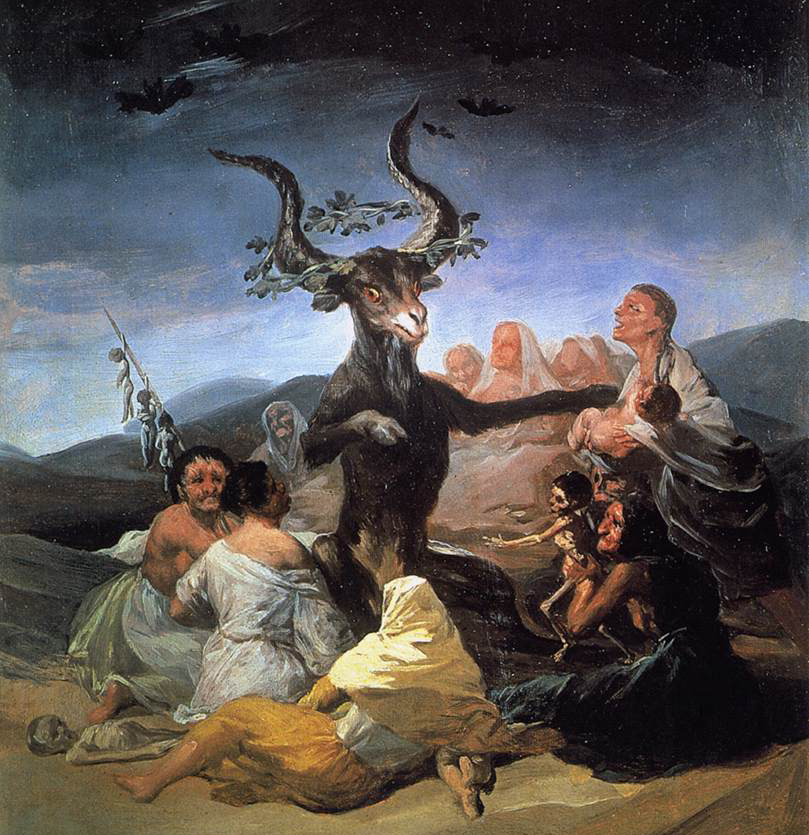
Witches have long been symbolized through the act of cooking, especially when crafting spells using herbs, plants, and other natural elements. This association with concocting potions and mixtures has become synonymous with witchcraft.
In historical depictions, witches are often portrayed in paintings engaging in a Sabbath ritual, during which they gather in a circle. One notable imagery is that of a 'goat'-like figure, often interpreted as a representation of a deity or a spirit, joining their gathering. This imagery has contributed to the perception of witches partaking in rituals that defy societal norms and challenge established religious beliefs.
It's important to recognize that these symbolic representations have evolved over time and have been influenced by various cultural and historical contexts. The association of witches with cooking and ritualistic gatherings is a complex narrative that has contributed to both fascination and misconceptions about witchcraft throughout history.
Wings
I'm currently in the process of determining the precise style of wings I intend to create. To gather inspiration, I've closely examined both angel wings and the wingsuit sketches crafted by Leonardo da Vinci. In my initial exploration, I delved into a variety of designs that would seamlessly combine comfort and robustness. After experimenting with materials like aluminum foil and braided strings, I ultimately arrived at the decision to employ wire frames interconnected with wooden planks. This framework will be further secured and stabilized through the use of strategically placed rubber components.
The forthcoming phase entails the artistic enhancement of the wooden planks. To harmonize with my black attire, I've chosen to paint them in a deep shade of black. The addition of intricate symbols is intended to imbue the wings with an added layer of significance. Although I initially encountered challenges in properly affixing the iron wires, the implementation of soldering successfully resolved this issue. Subsequently, I've opted to paint one of the wings in a serene blue hue, symbolizing a particular location (the ninth circle), while the other wing will sport a striking red color, playing on the notion of the red devil stereotype.
Introducing a theme that encapsulates the concept of death, I've opted to forego traditional feathers in favor of gallows, imparting a unique and thought-provoking element to the design. As a deliberate contrast to the wings, the nooses adorning the gallows will be infused with distinctive colors. To create a base for further artistic detailing, I've meticulously prepared bald, white-painted dolls. These dolls have subsequently been spray-painted to provide a suitable canvas for symbols that mirror those on the wooden planks.
While the construction of the costume is approaching its final stages, I've encountered and successfully addressed a couple of challenges. The positioning of the wooden planks necessitated some adjustment, a task that I remedied by introducing a rubber belt for improved stability. Furthermore, to mitigate any discomfort stemming from nail attachments, I've ingeniously employed stickers, thoughtfully provided by Mrs. Werry.
Face paint sketches
I began by creating a template through careful sketching, making two copies for experimentation. Using a black fineliner, I traced both duplicates meticulously.
In the initial stages, my exploration took two paths: one embracing the stereotypical image of a bloody devil, the other depicting freezing up to the hips in the chilling ninth circle. Unfortunately, testing revealed these concepts as messy and simplistic, unfit for further pursuit.
Inspired by the captivating notion of illusion, I chose to entirely alter my skin tone, infusing my envisioned transformation with dramatic impact. I blended the familiar crimson stereotype with the icy hues of the ninth circle, resulting in a compelling shade of purple. This hue not only conveys a lifeless aesthetic but also symbolizes the essence of succumbing to death in the eyes of divinity.
Originally, emblematic symbols played a significant role, like the devil's 666 integrated within a triangular arrangement and an inverted cross. After a thoughtful discussion, I chose to retire these symbols, allowing the wings themselves to convey their intended message more elegantly.
As I approach the culmination of this creative journey, my aspirations extend to a comprehensive transformation. Achieving the final effect requires meticulous application of the chosen makeup hue to my entire body, bringing to life an all-encompassing metamorphosis that embodies my artistic vision harmoniously.
Performance
Marina Abramovic, a trailblazer in performance art, is renowned for her groundbreaking and daring creations that often involve her own body. Her global recognition has solidified her status as a leading figure in the art world.
Inspired by Abramovic's "The Artist is Present," I initially conceived a concept involving a circle symbolizing the ninth circle of Hell. However, my exploration into the devil's attributes, intertwined with elements of witchcraft and tarot, led to a more intricate narrative.
Though the testing phase revealed personal insights, I recognized the need to strike a balance between self-expression and audience appropriateness. While experimenting with lecture-style performances, I encountered physical exhaustion, prompting a reevaluation.
Incorporating the devil's characteristic traits of playing games and making deals, I aimed to create an impactful performance. Yet, insightful discussions prompted a return to the core: embracing simplicity and silence, with the intention of resonating deeply with the audience.
Drawing from the innovative approaches of Trisha Brown, Joseph Beuys, Yoko Ono, and Allan Kaprow, I found a thread of inspiration that guides my own artistic journey. Their revolutionary ideas have shaped my creative direction and underscored the importance of pushing boundaries.
Drawing from the innovative approaches of Trisha Brown, Joseph Beuys, Yoko Ono, and Allan Kaprow, I found a thread of inspiration that guides my own artistic journey. Their revolutionary ideas have shaped my creative direction and underscored the importance of pushing boundaries.
Final concept
After thorough research and insightful discussions, a compelling concept has taken shape. Our brainstorming session sparked a range of innovative ideas
From creating a confined environment to evoke containment, exploring sensory experiences for emotional depth, transitioning from serene meditation to explosive visuals, and utilizing masks or makeup to symbolize conflicting identities, to incorporating grass symbolism for life and death, strategically placing a central mannequin as a focal point, and employing light panels and tape for symbolic effects—the creative process was rich and diverse.
Amid this creative surge, a common theme emerged—filling the conceptual void. To accomplish this, I will engage in enclosed introspection, adopting meditative poses and focusing on a designated point within the space to foster openness.
Within a symbolic circle, I'll stand encased in a second boundary, metaphorically representing an internal struggle. The narrative highlights a fallen angel's pivotal confrontation with divine authority—a rupture borne of fear and cautioning against human malevolence. Tragically, this plea was misconstrued as defiance, leading to a poignant internal battle between the fallen angel and both his essence and the divine.
Central to this narrative, a mannequin encapsulates the essence of dual conflict, offering a medium to shed metaphorical wings and engage with the fallen angel persona while remaining ensnared within the confines of the ninth circle.
The forthcoming performance will be a journey seeking inner serenity amid the intense struggle between surroundings and psyche. Committing to isolating my environment and delving into emotions, I will embody the ninth circle's profound themes within a symbolic circle.
However, practical considerations led to a separate sketch, with a collaboration envisioned to optimize the school's auditorium-like space. This merging of sketches anticipates a synthesis that will truly emerge when encountering the actual exhibition space on the event day. The potential of these concepts will fully unfurl in the realized physical environment.
Meditation
Meditation gained renewed interest in the 20th century, particularly in the West, for expanding consciousness. It's closely linked to Hinduism and Buddhism, where it's vital for their goals.Concentration meditation involves focusing on objects like a deity, candle flame, or breath, with two phases: object-oriented and object-free.
In object-oriented meditation, attention sharpens on a single point, reducing distractions. Achieving "one-pointedness" is key, seen in practices like transcendental meditation. After focus, the goal shifts to complete relaxation in object-free meditation. This returns attention to "the source," merging object and subject.
For my performance, I'll strive for relaxation through object-free meditation, maybe trying object-oriented. Testing will guide my choice. The Burmese posture seems comfortable, though testing is needed due to limited flexibility from recent ballet experiences and pandemic-related restrictions.
Despite these limitations, I'm committed to a impactful performance. I'll meditate with an open focus, aiming for tranquility, and record it for my portfolio.

Reflection
Creating "Ninth Circle of Hell" was a unique challenge. Interpreting the fallen angel theme independently was tough, considering the preconceived images from my research. Letting go of certain elements was necessary; the costume held symbolism, while makeup remained detached.
The performance was a dynamic journey. Guided by my emotions, I embraced meditation, movement, and focused exploration. As faculty observations were limited, a video on my portfolio captured the essence of the performance.
Crafting a fallen angel required a delicate balance. I managed to convey a pre- and post-fall duality through a poised stance, occasionally removing my wings. While I refrained from vocalizing too much, my actions spoke confidently.
Reflecting on the performance, it was a demanding endeavor. Seeking comfort, I experimented with seated positions, maintaining one for 2.5 hours while alternating subtly. The video's accelerated pace mirrored the mental intensity—fast yet unhurried. Expressing the emotional and physical weight is complex; much of the time was spent in deep concentration and meditation, offering a cathartic release.
As I lay in bed now, the culmination of my artistic journey at Het Lyceum Rotterdam sinks in. These seven years of visual art have been immensely rewarding. I'm grateful for the experience and growth. Thank you.
